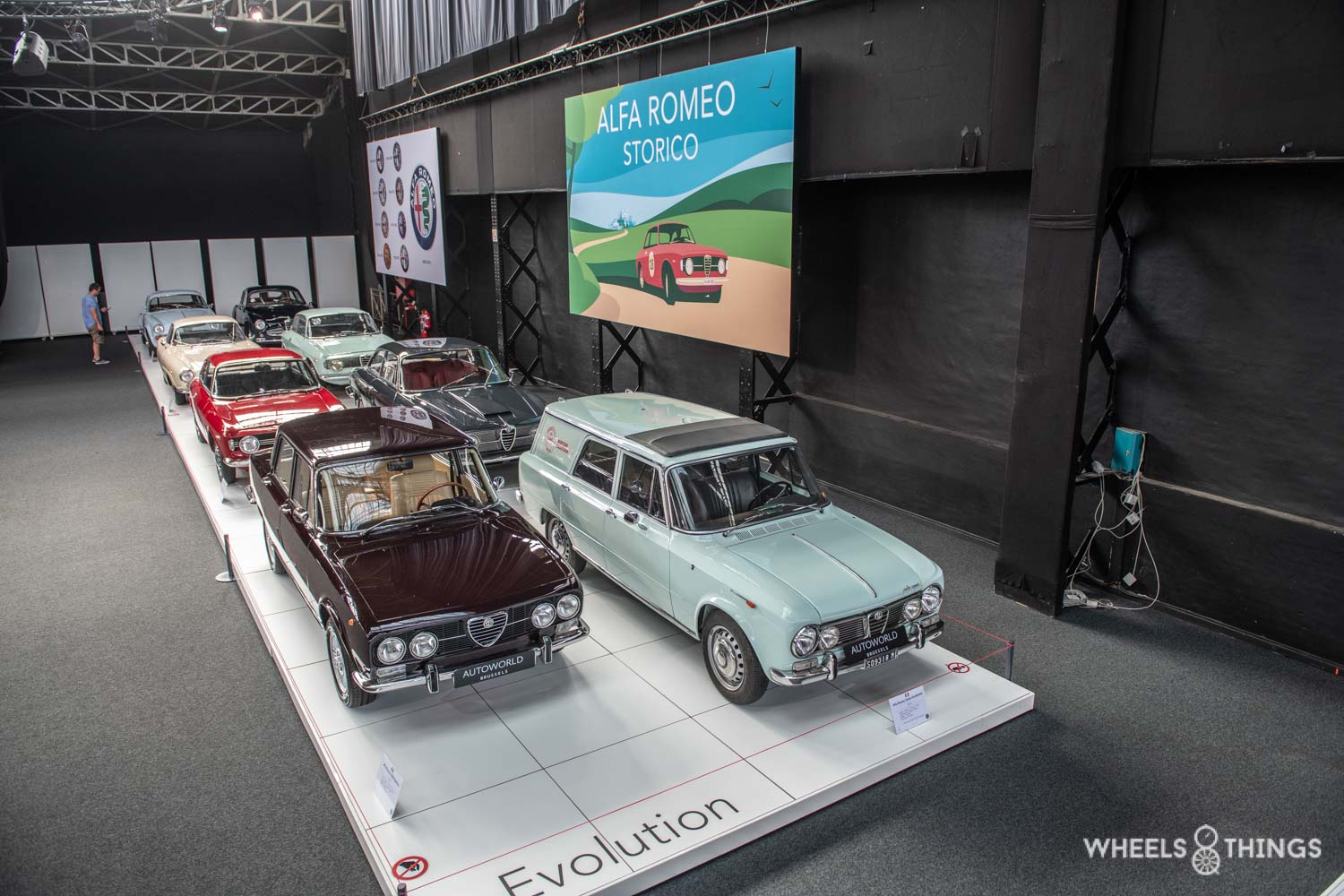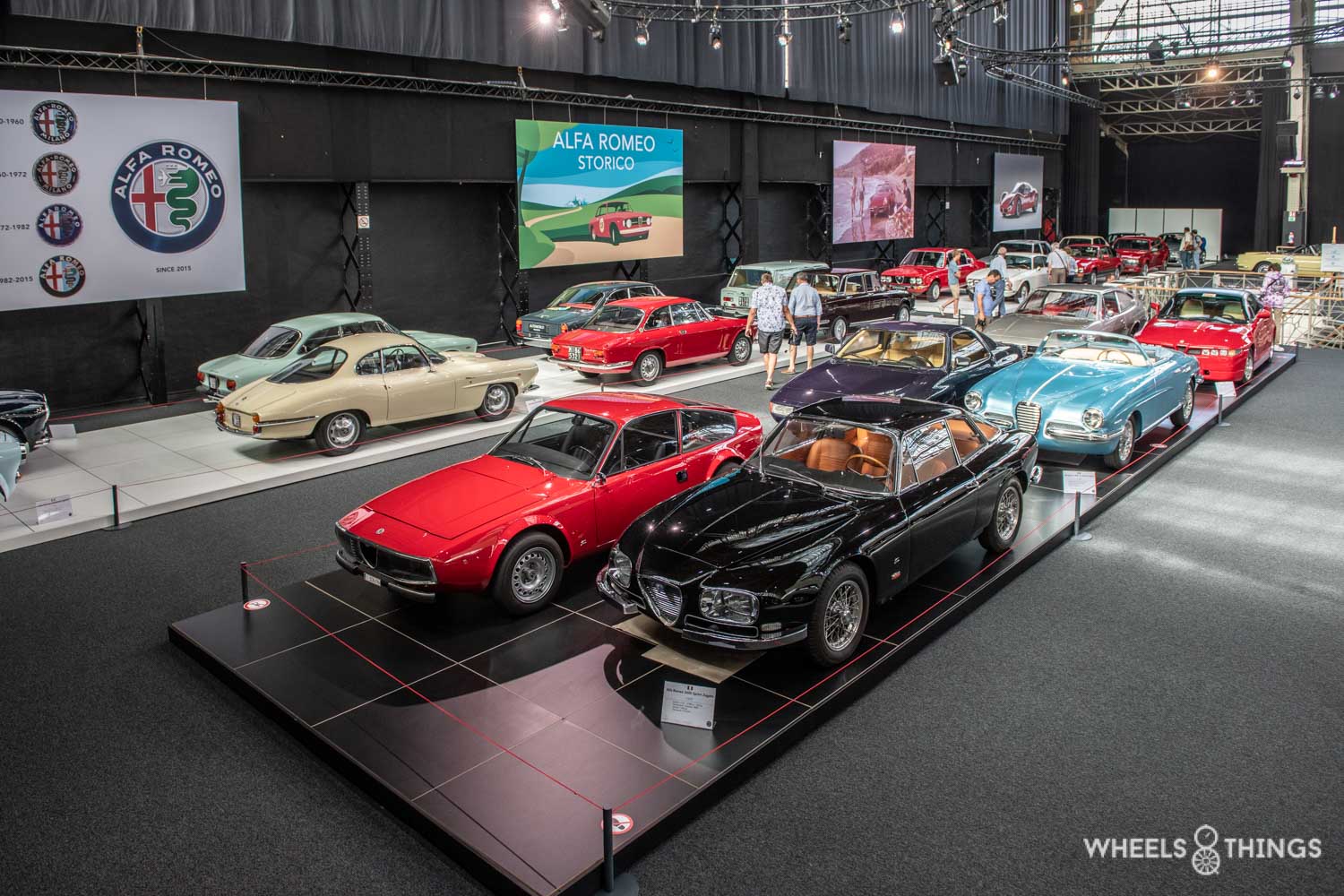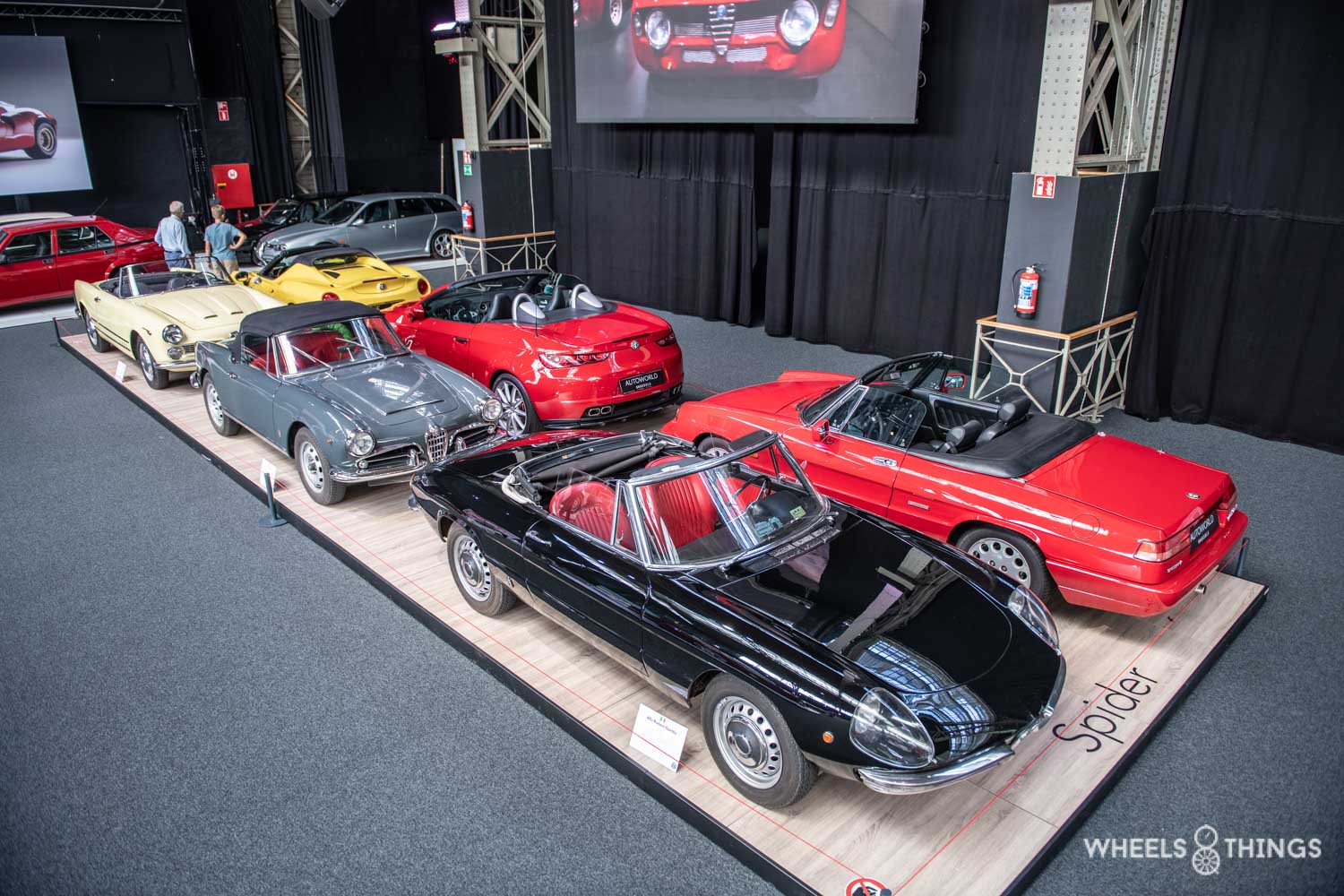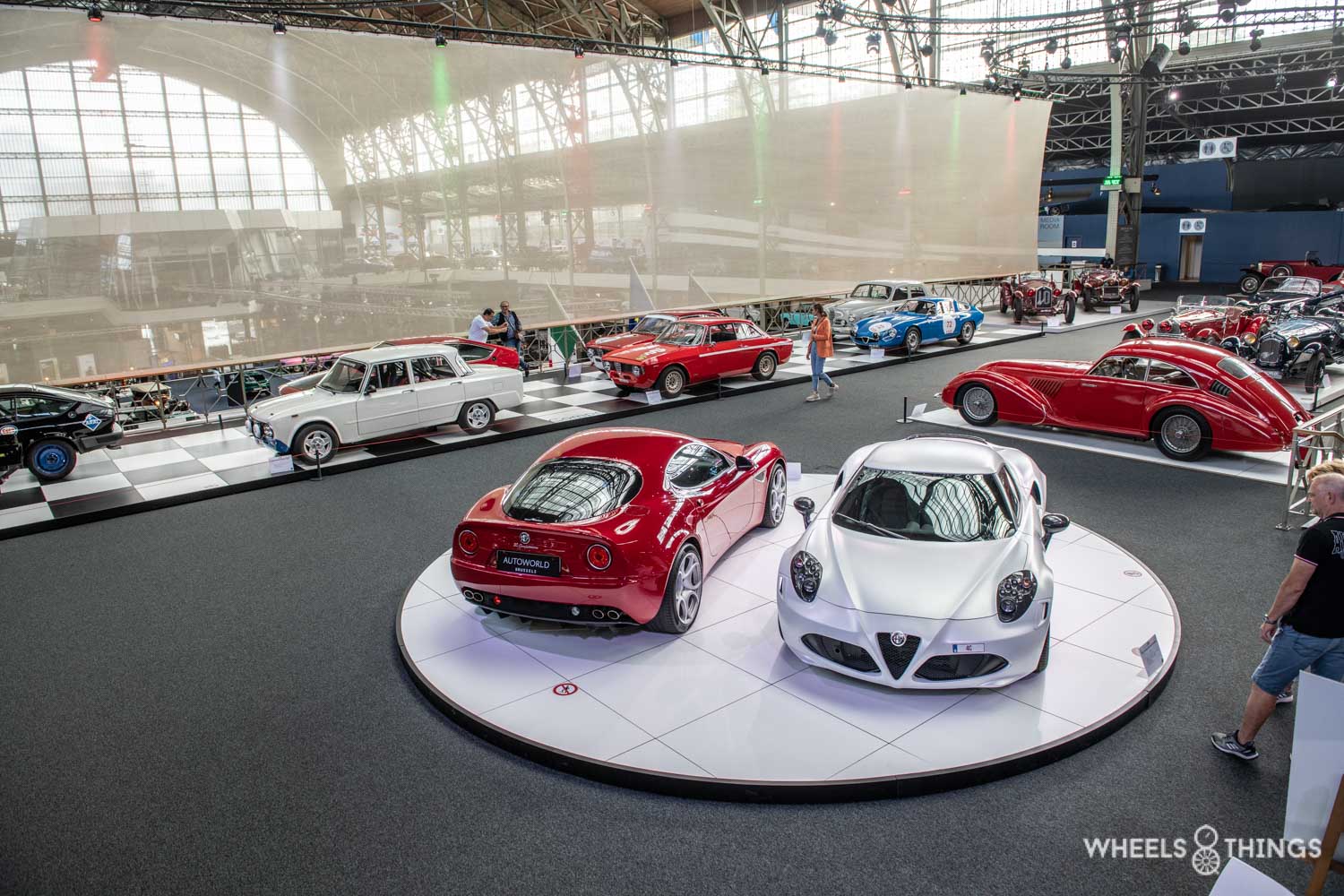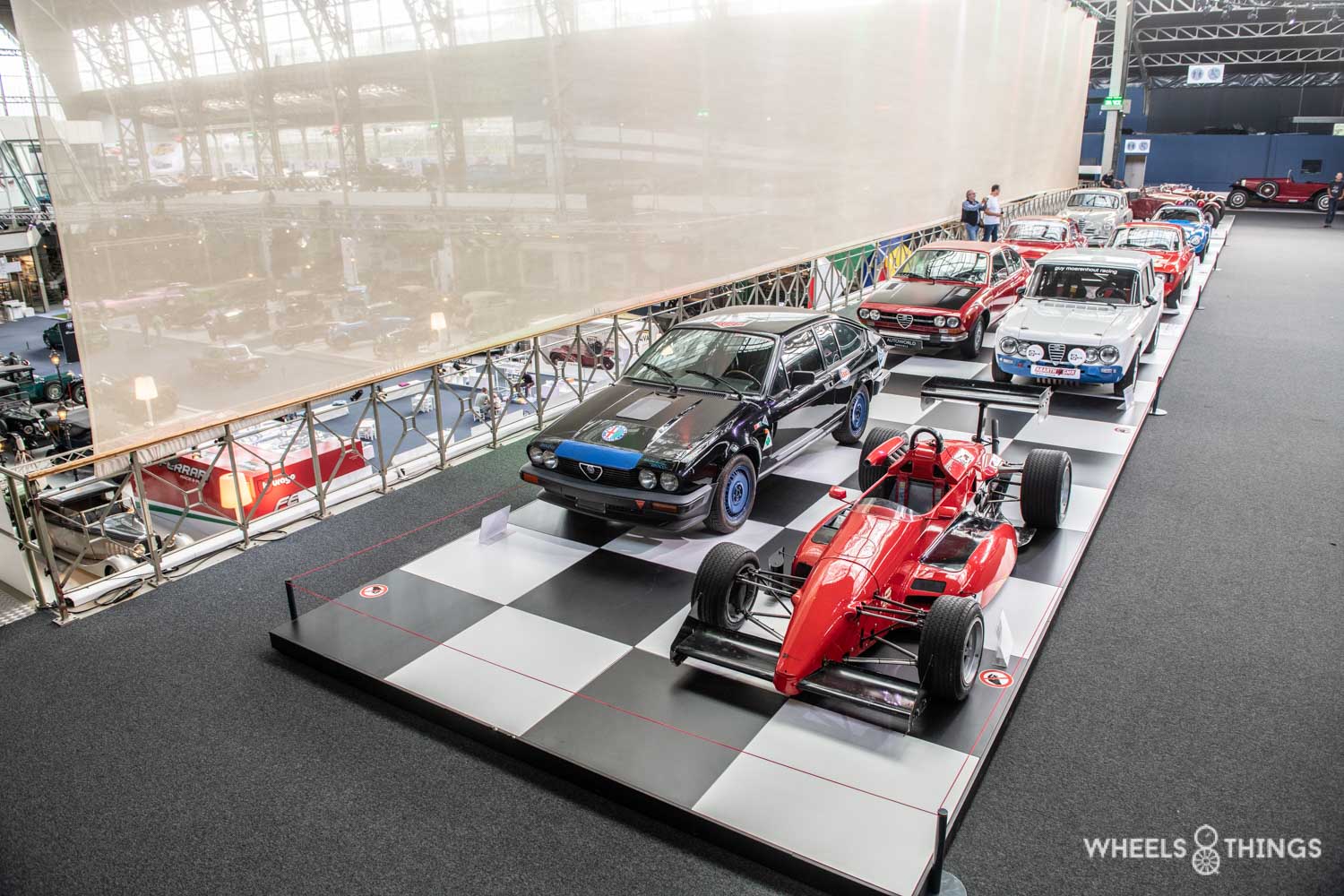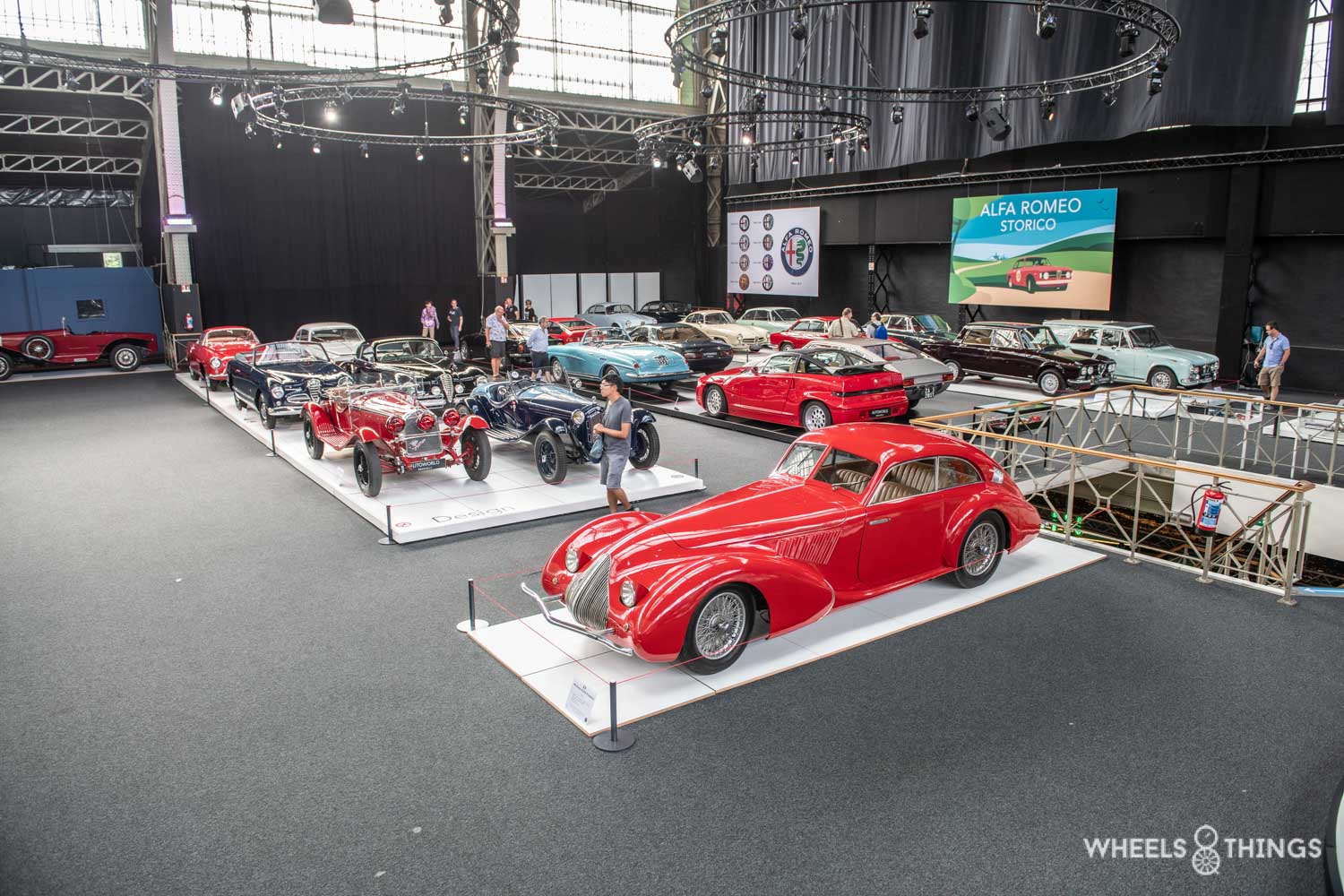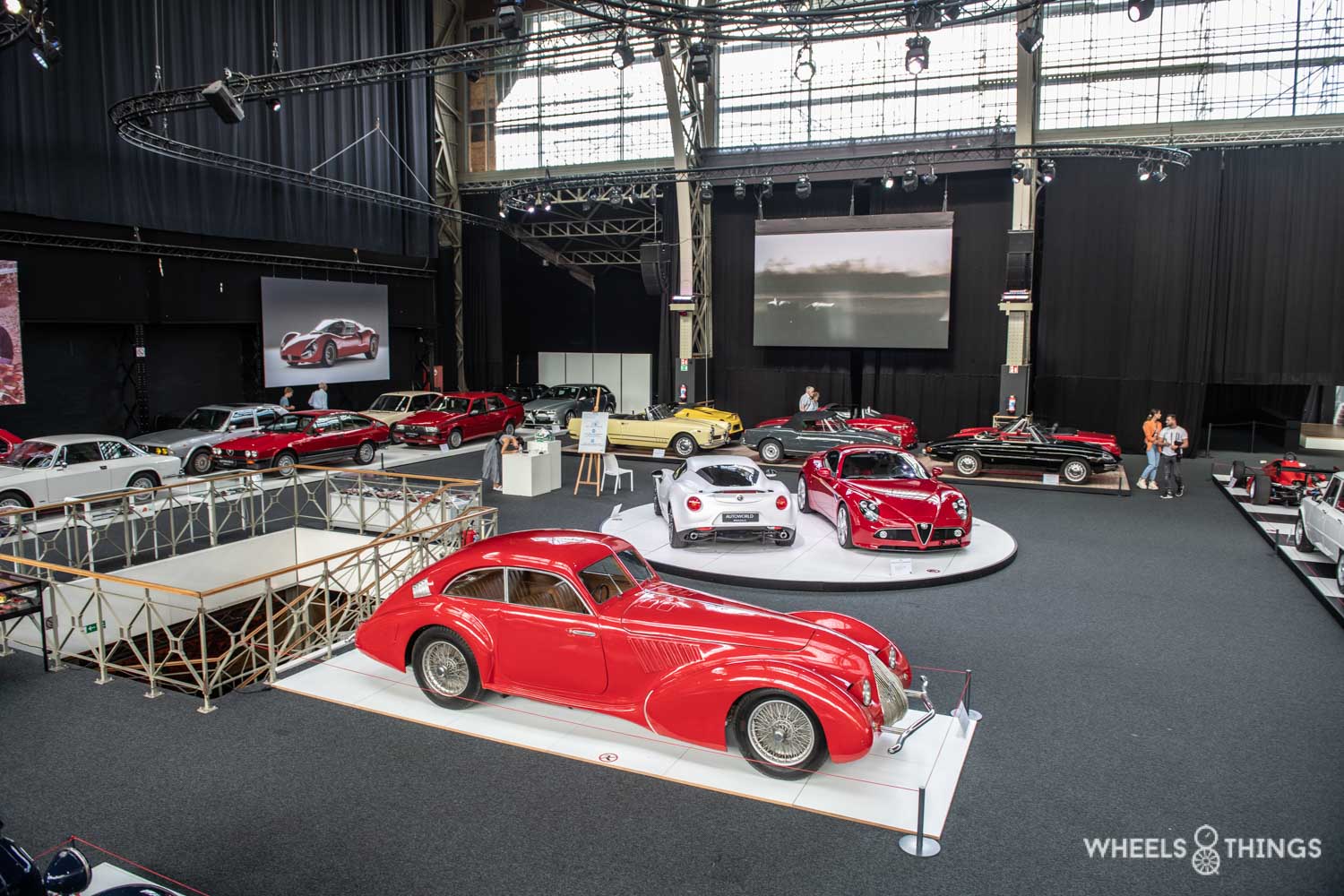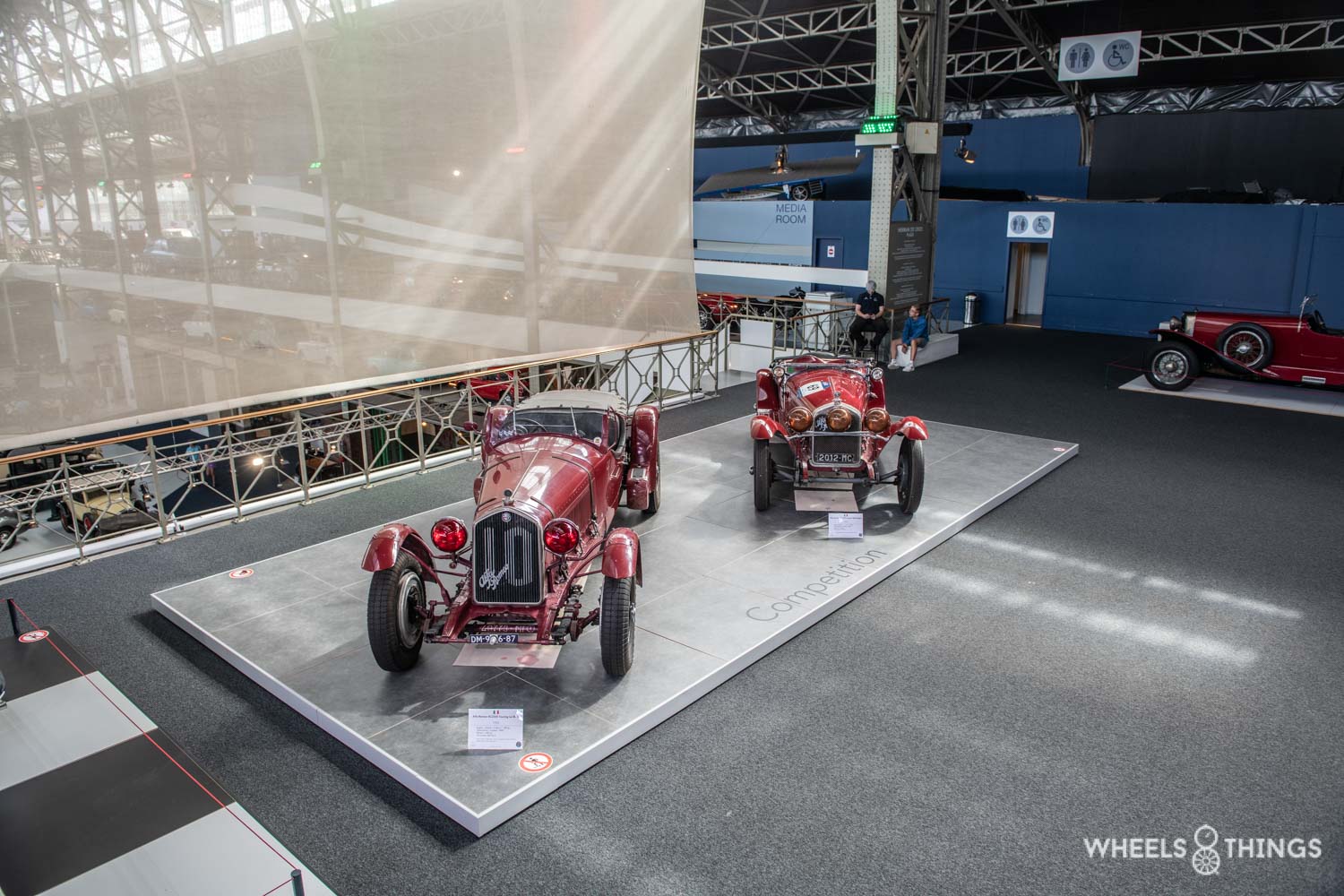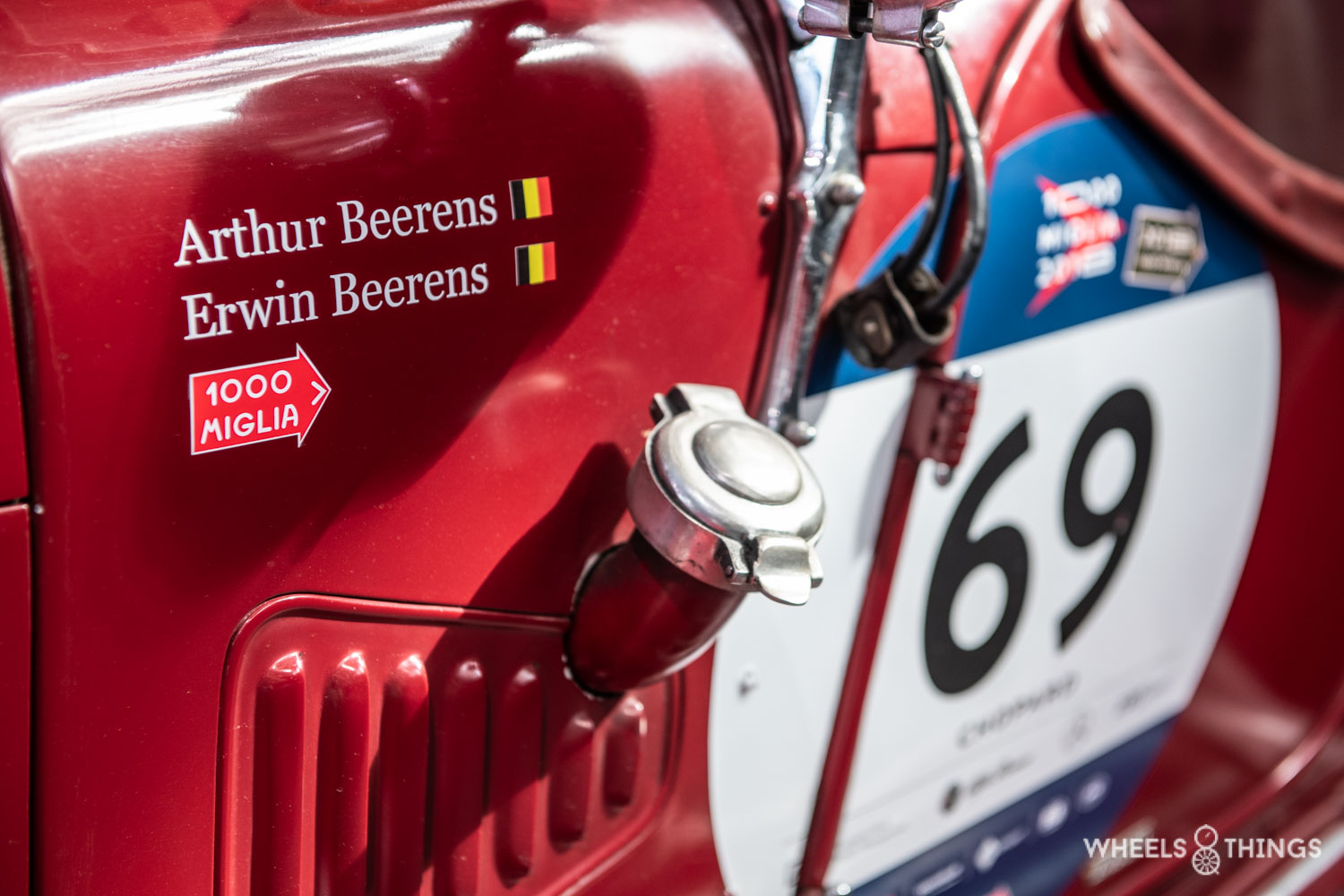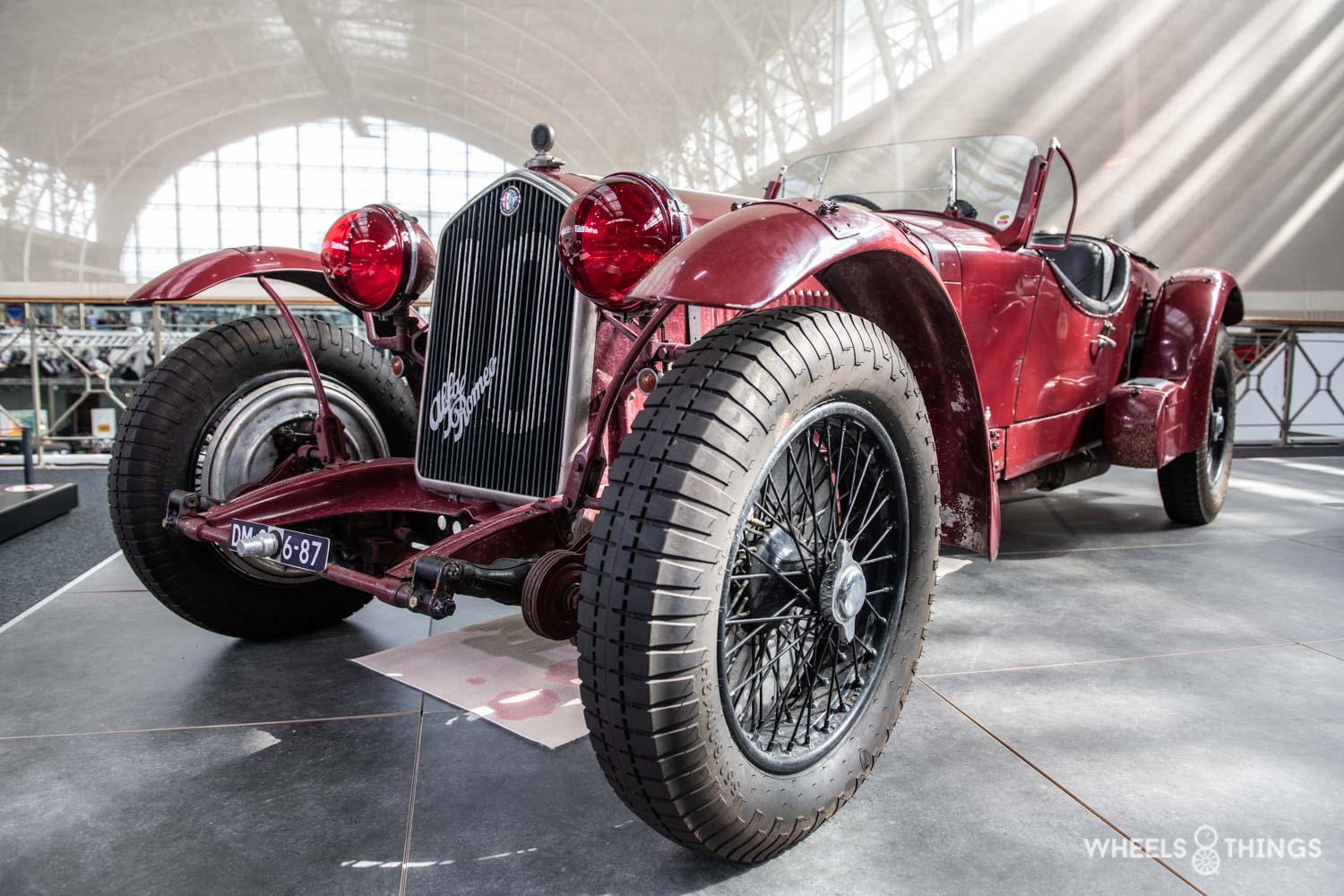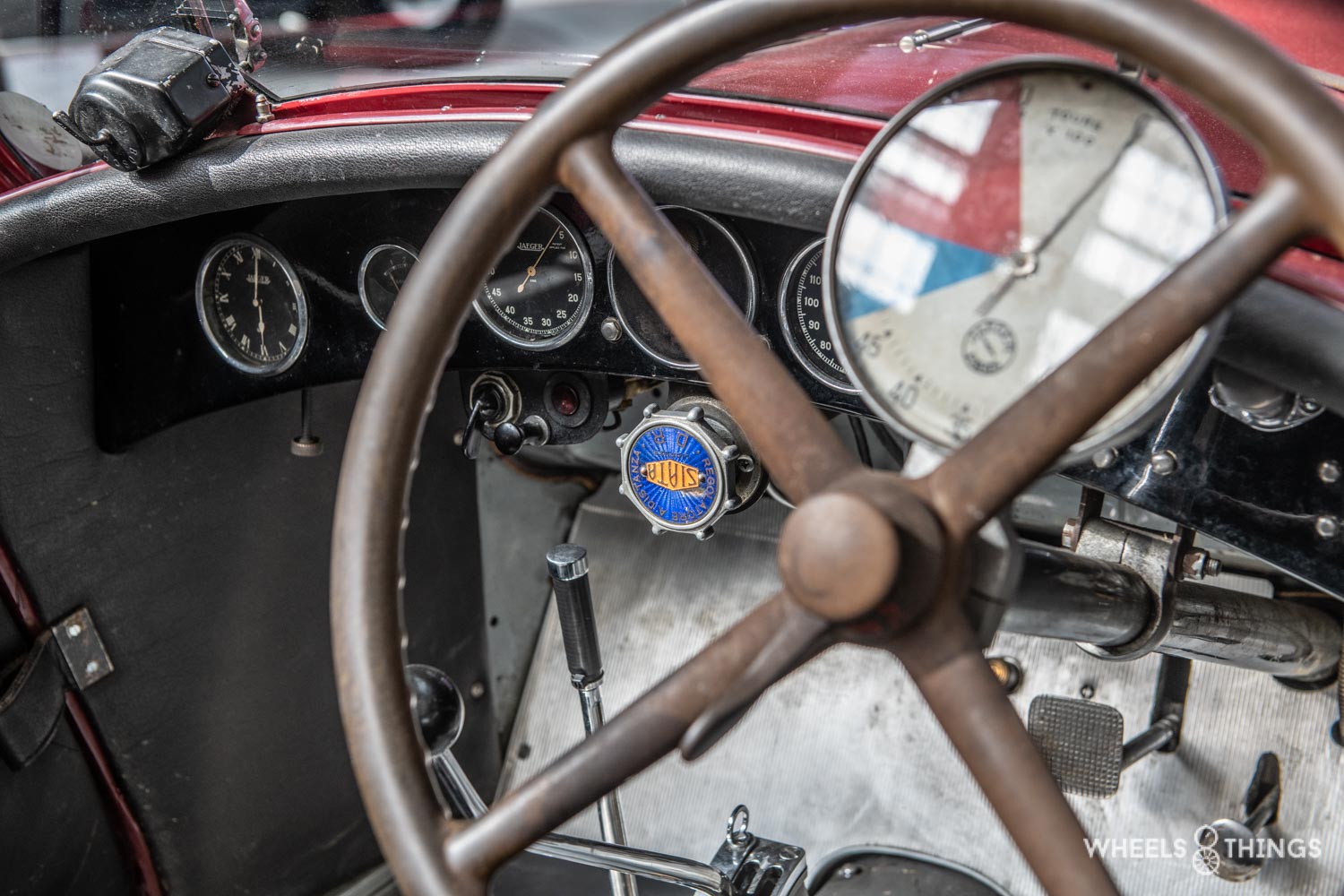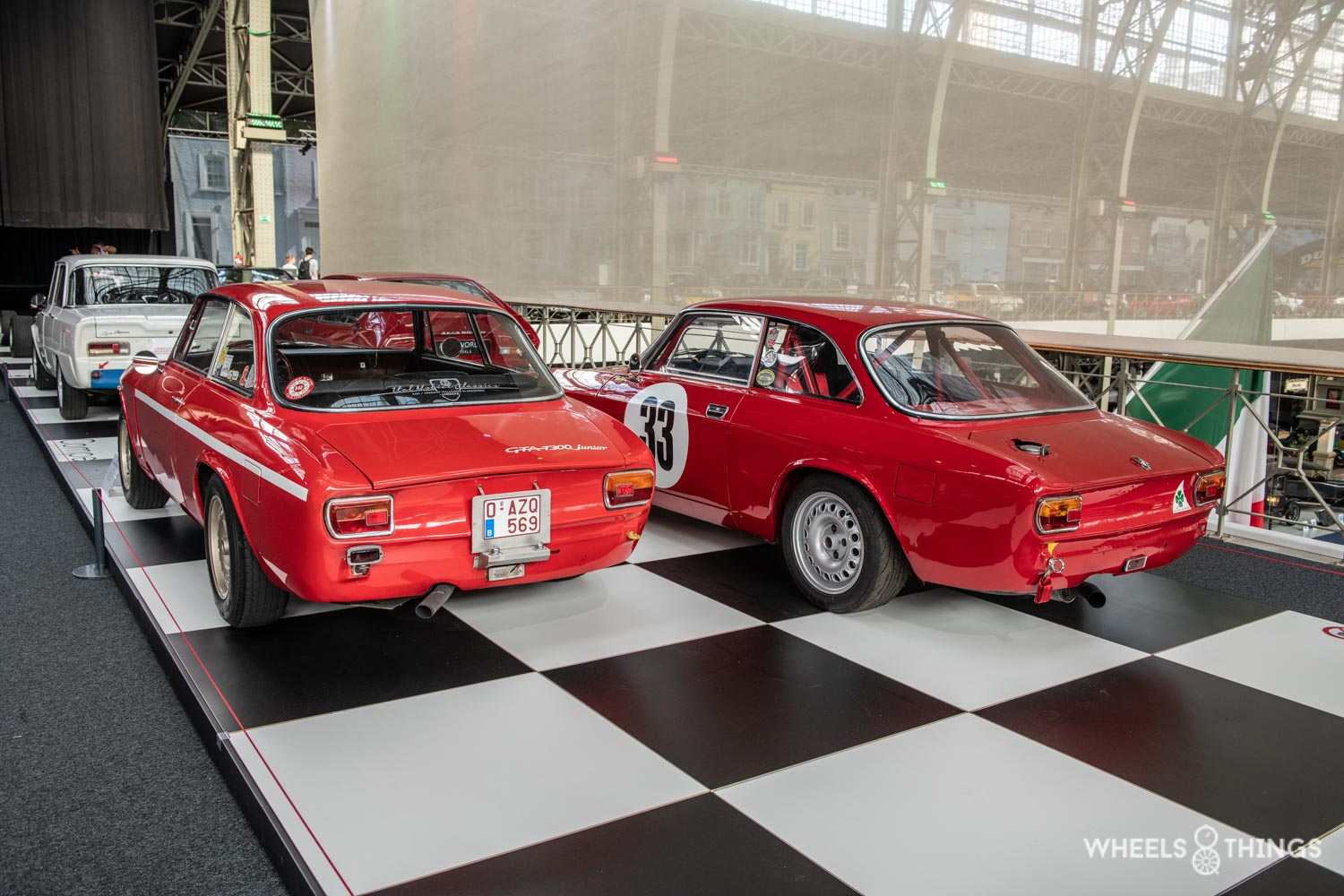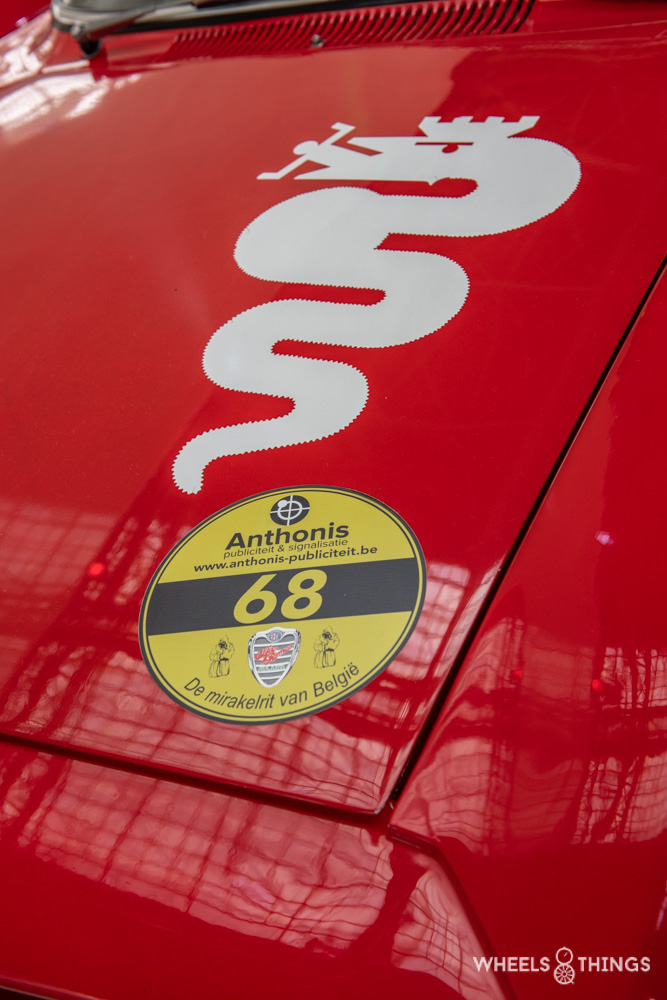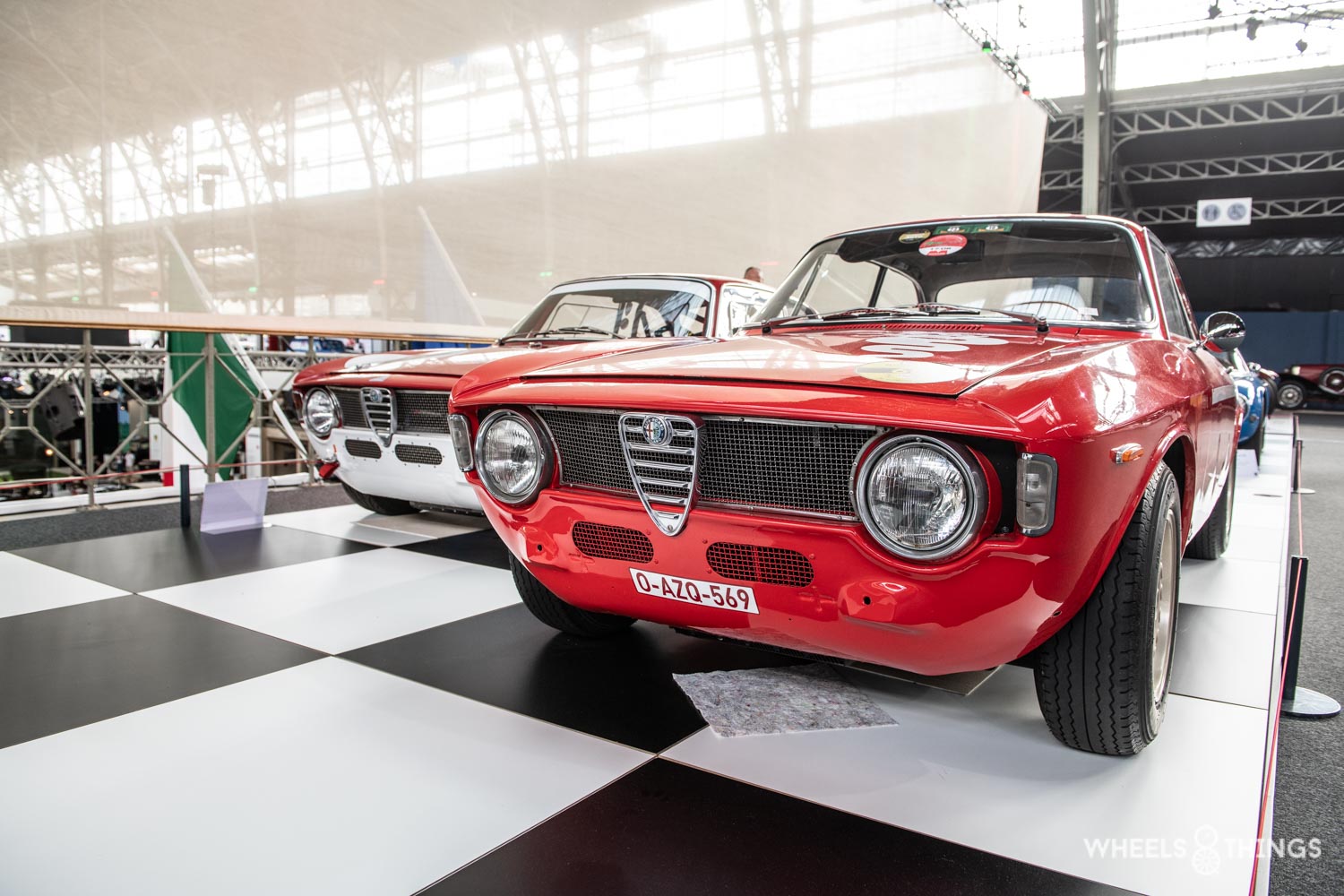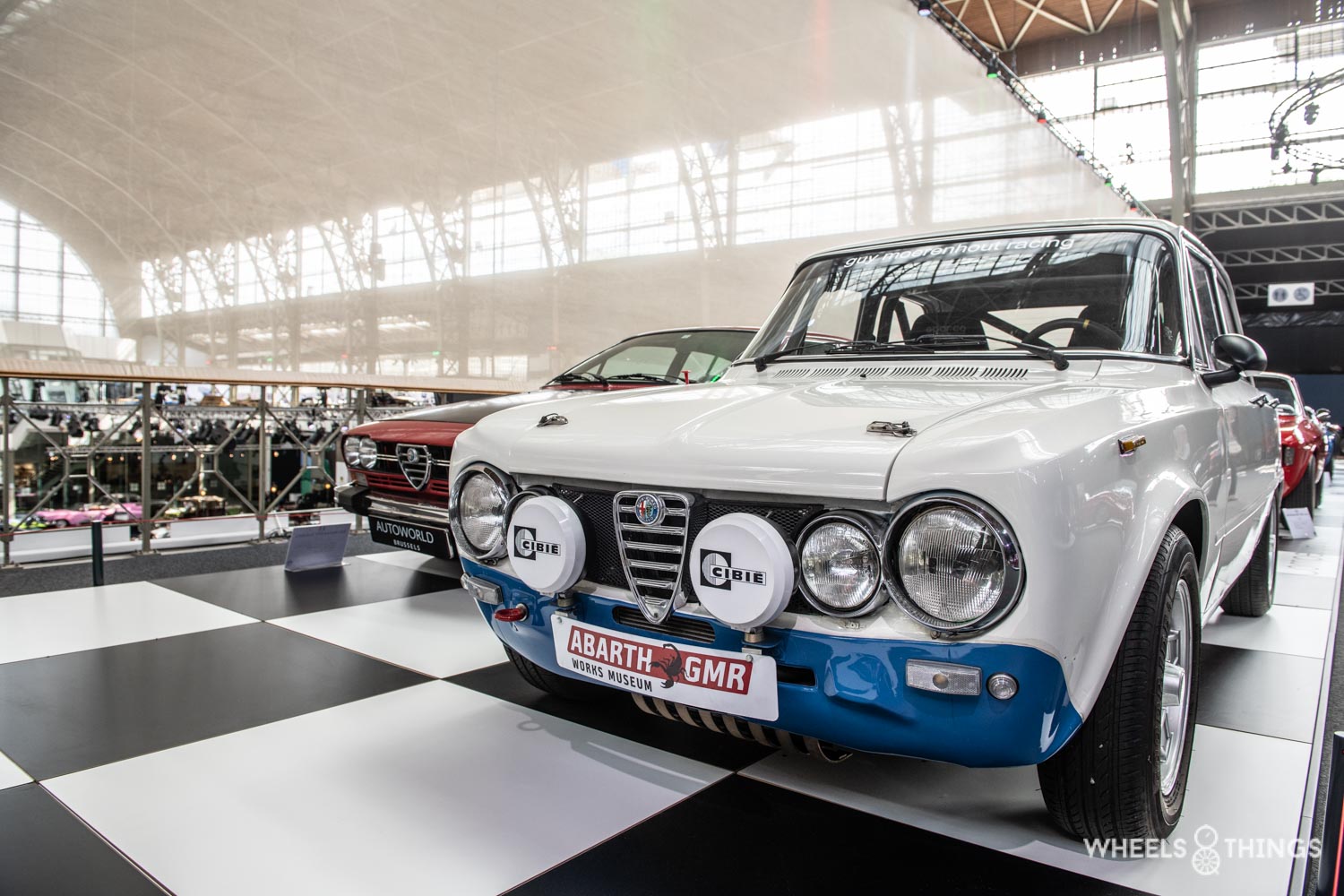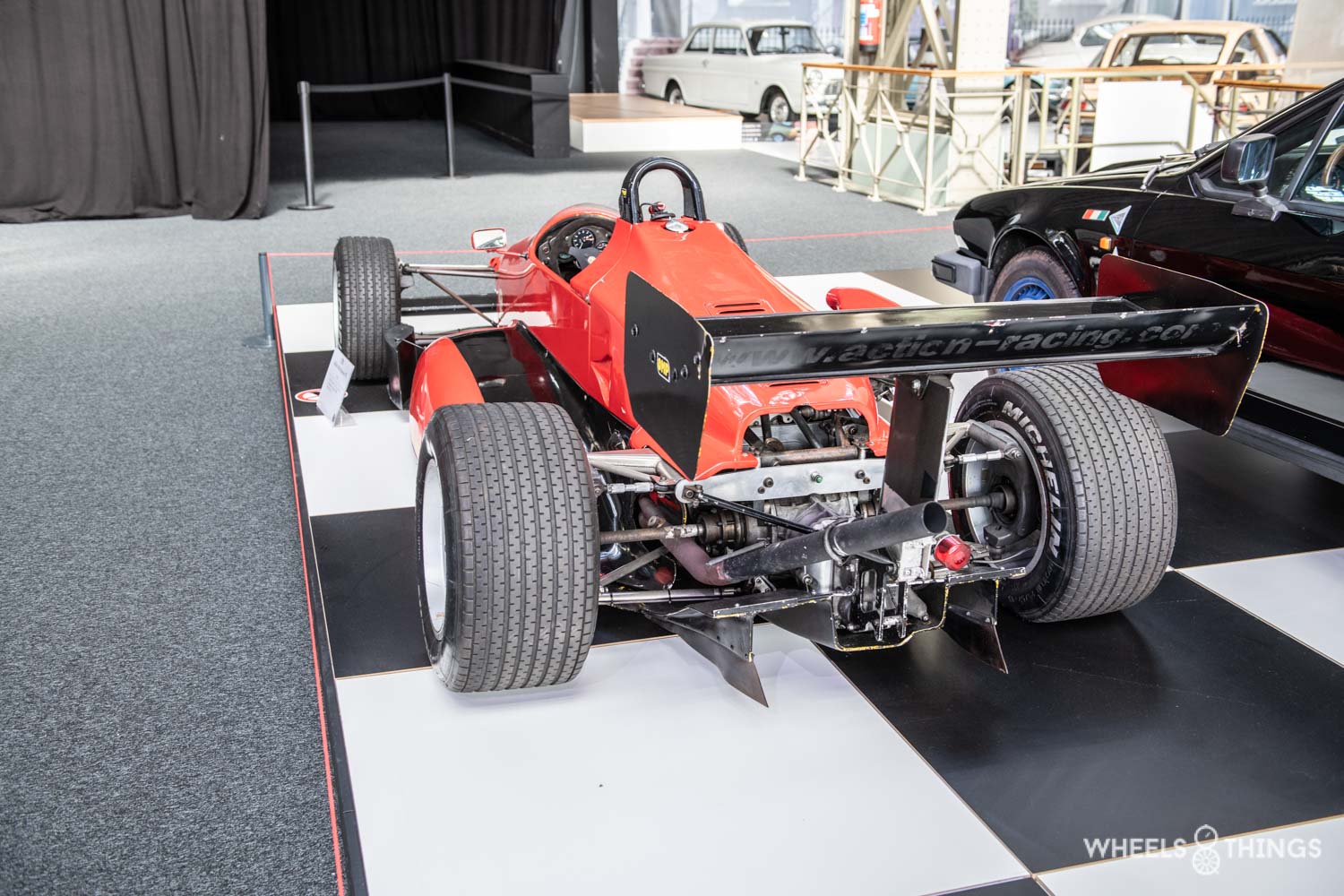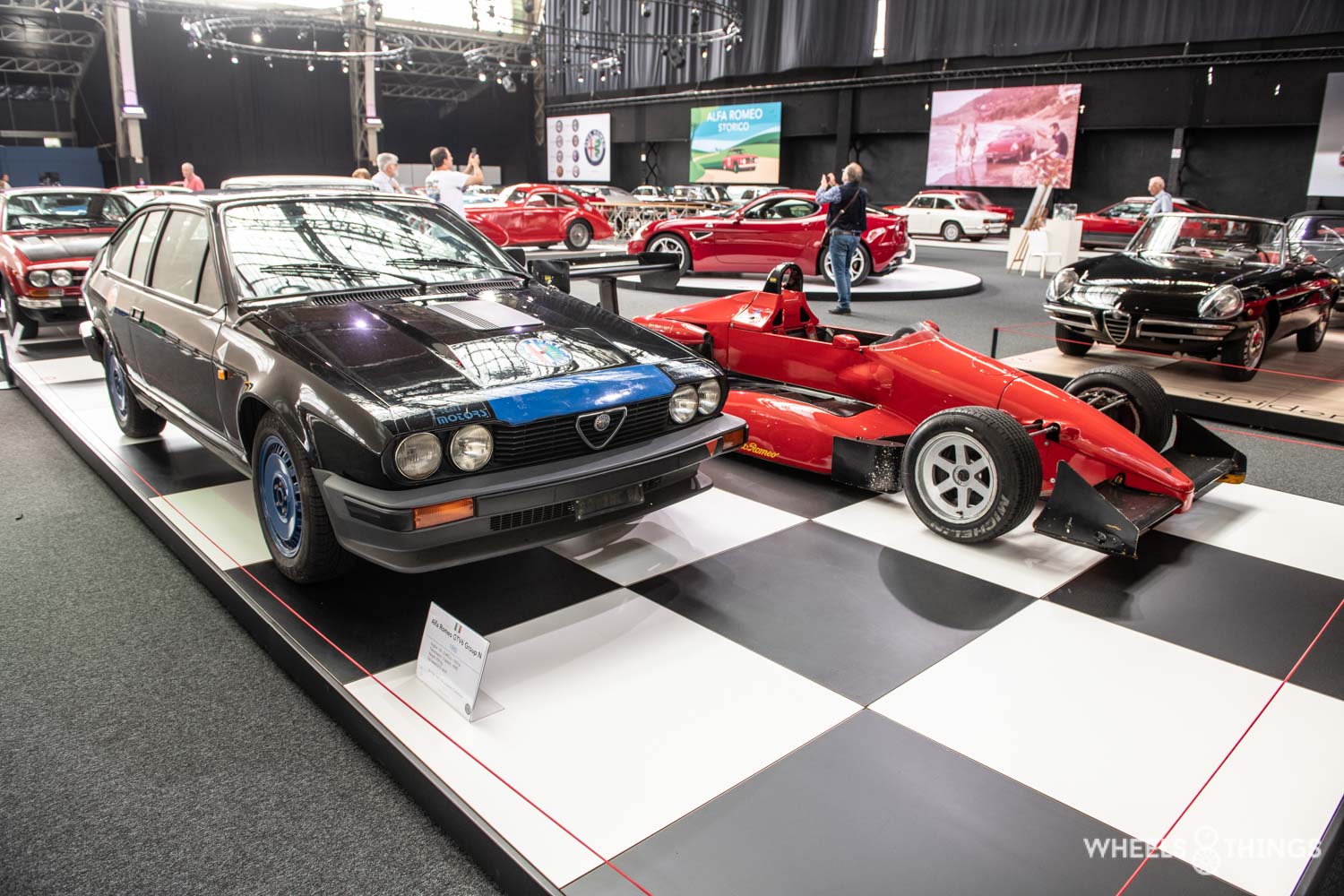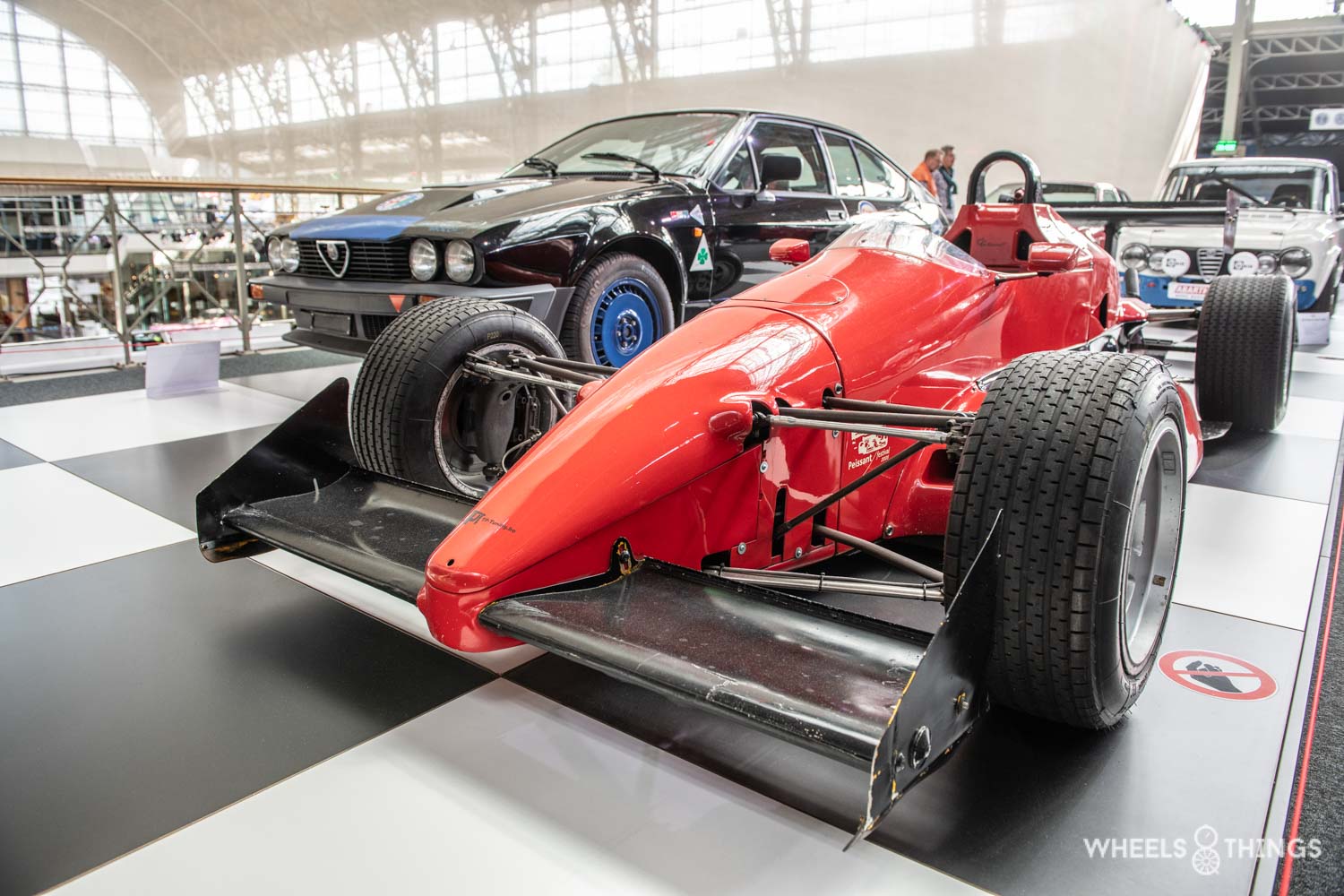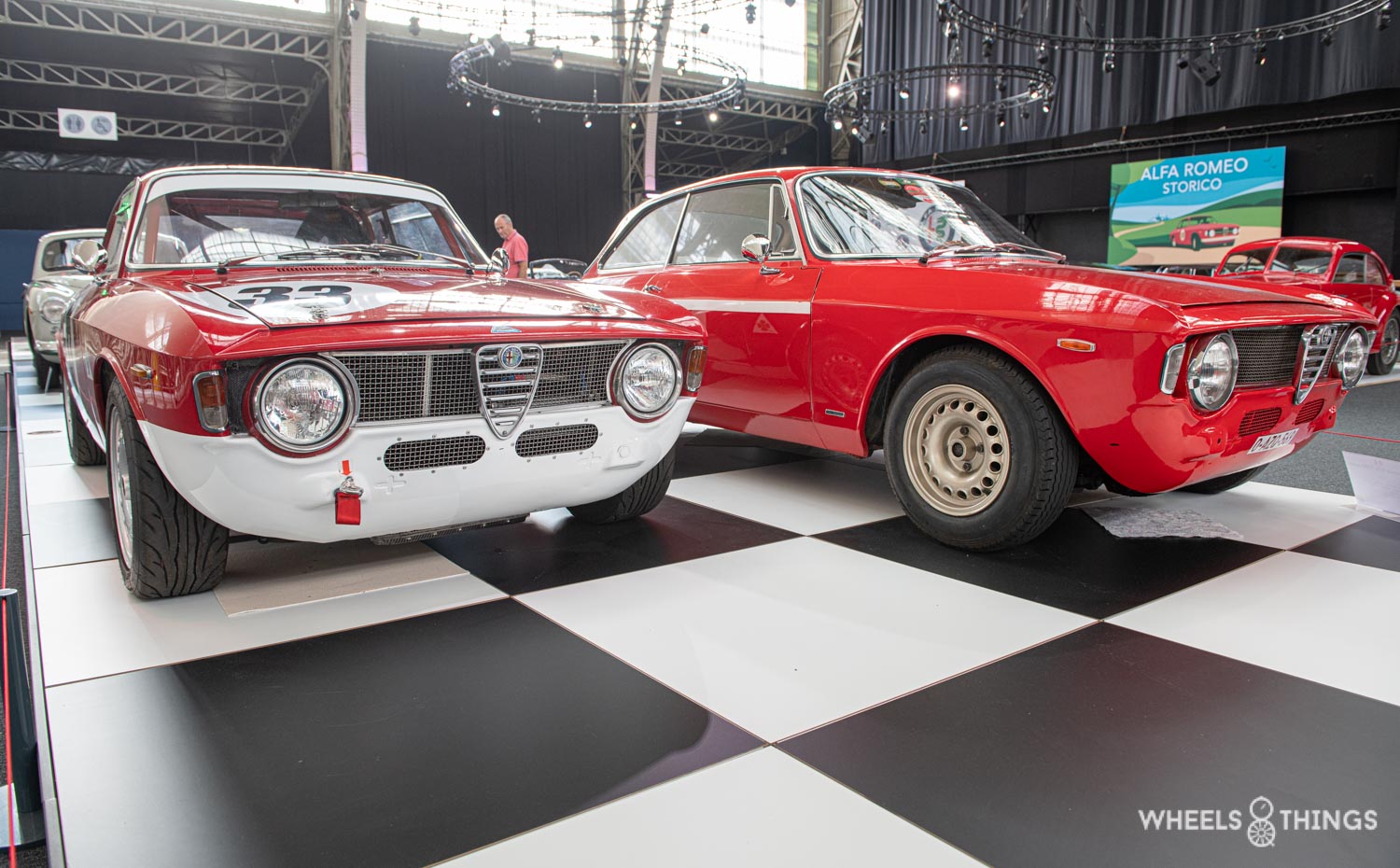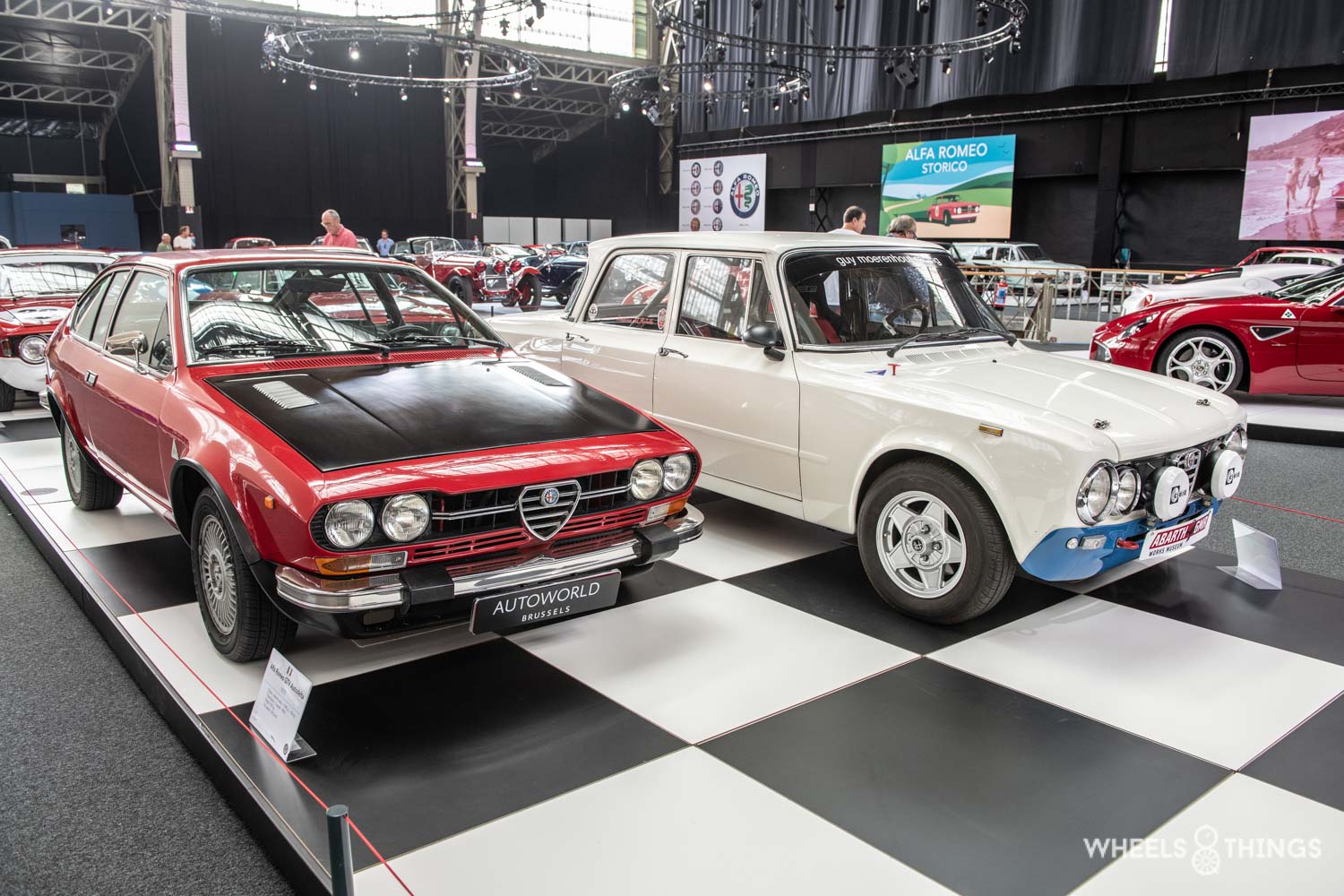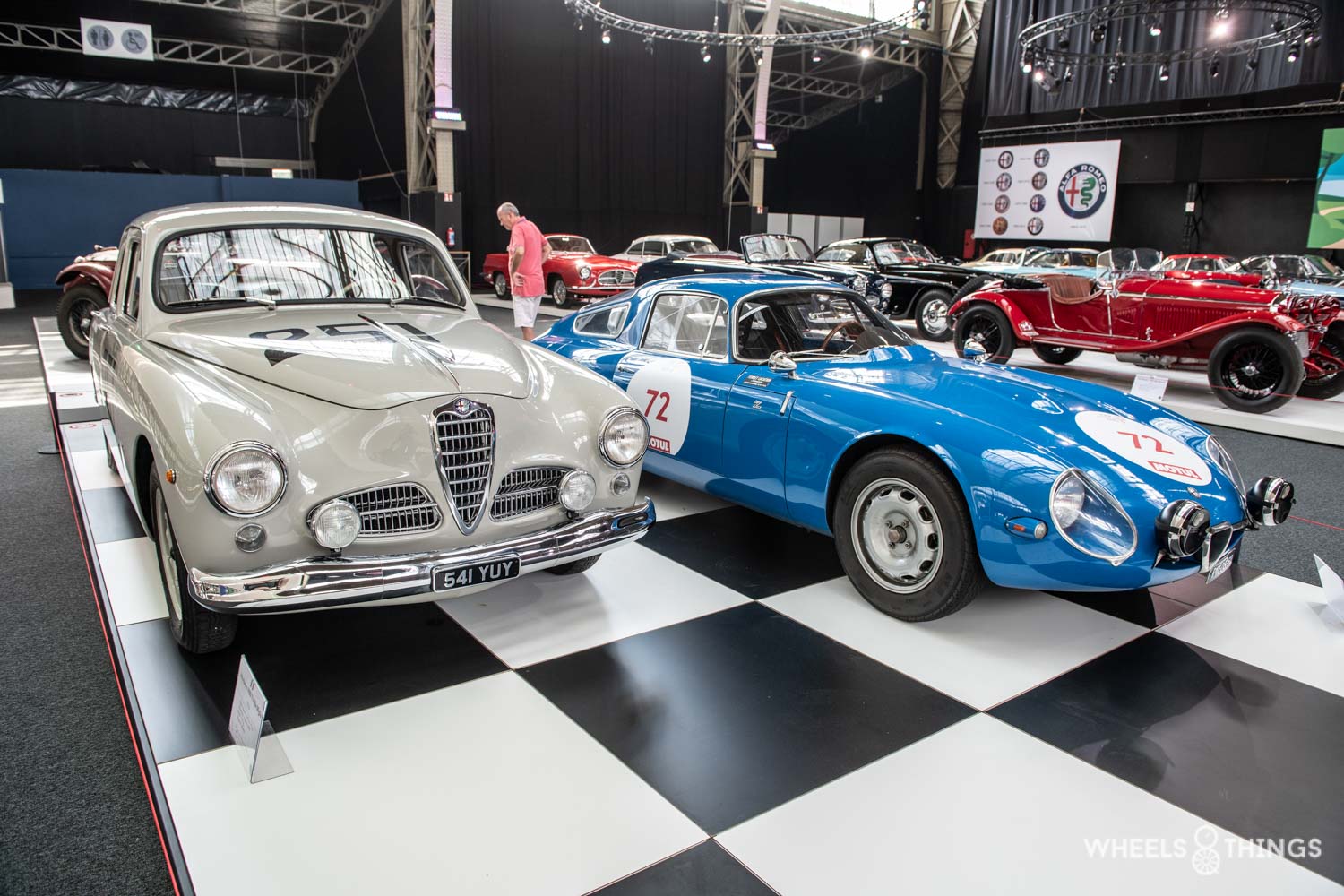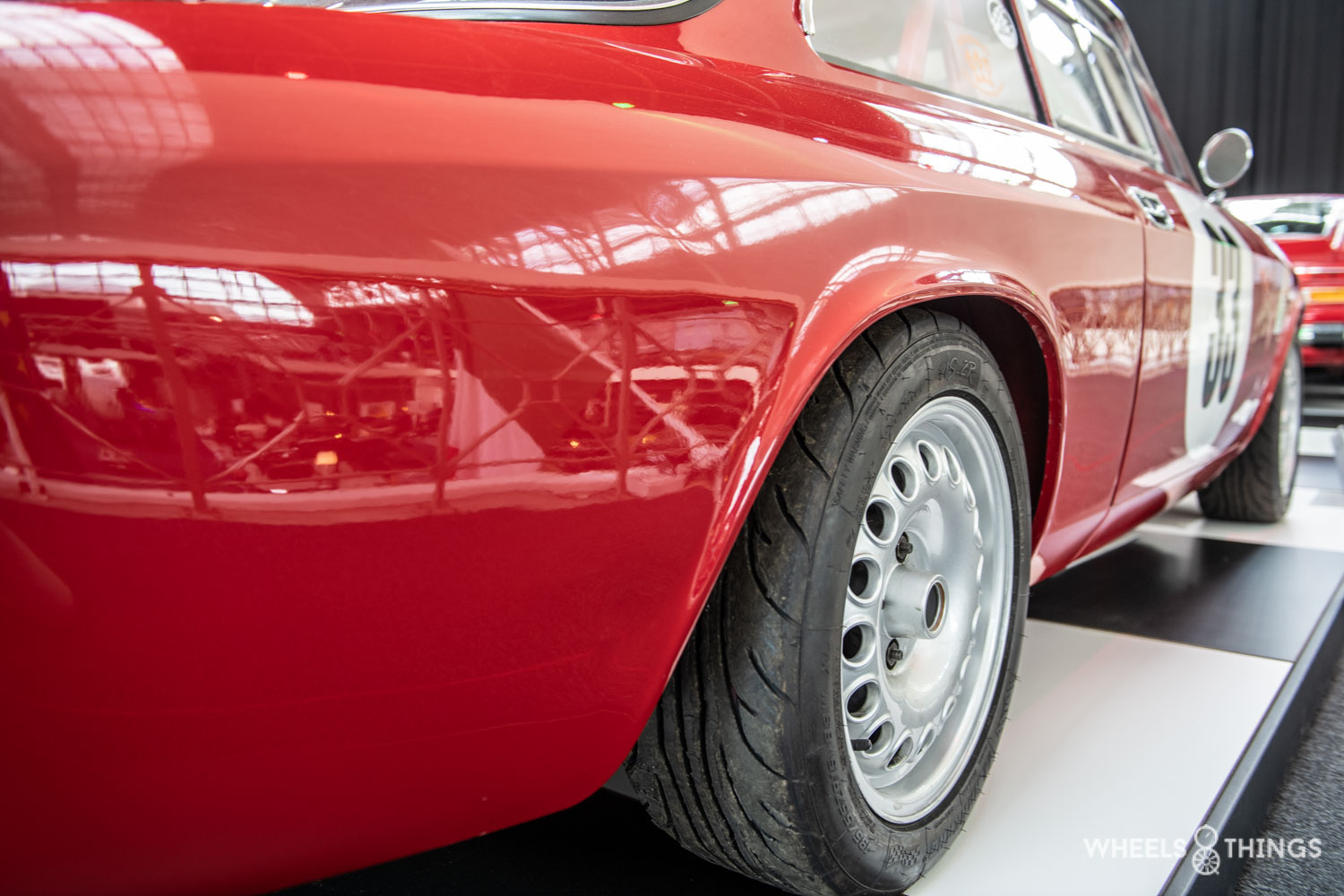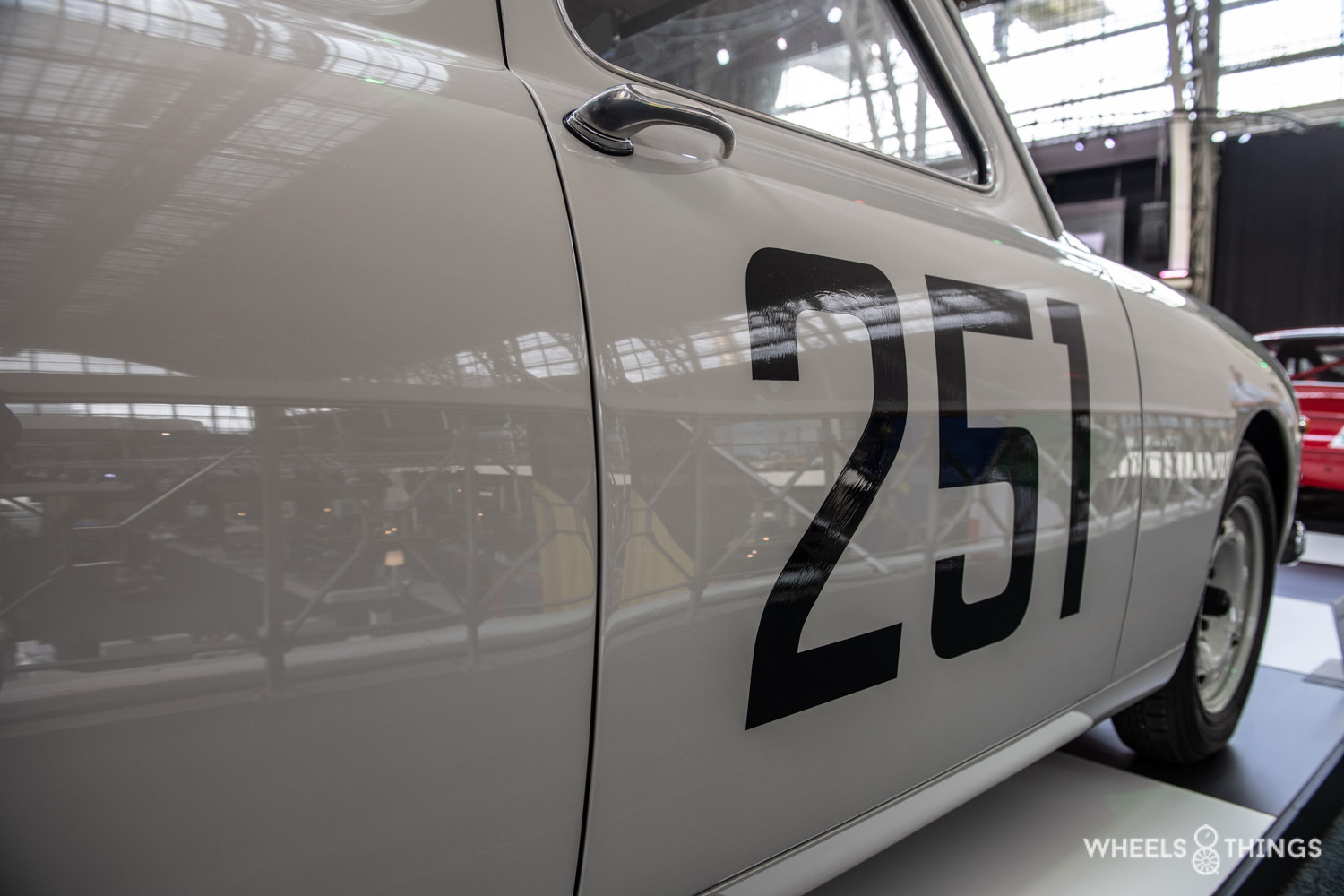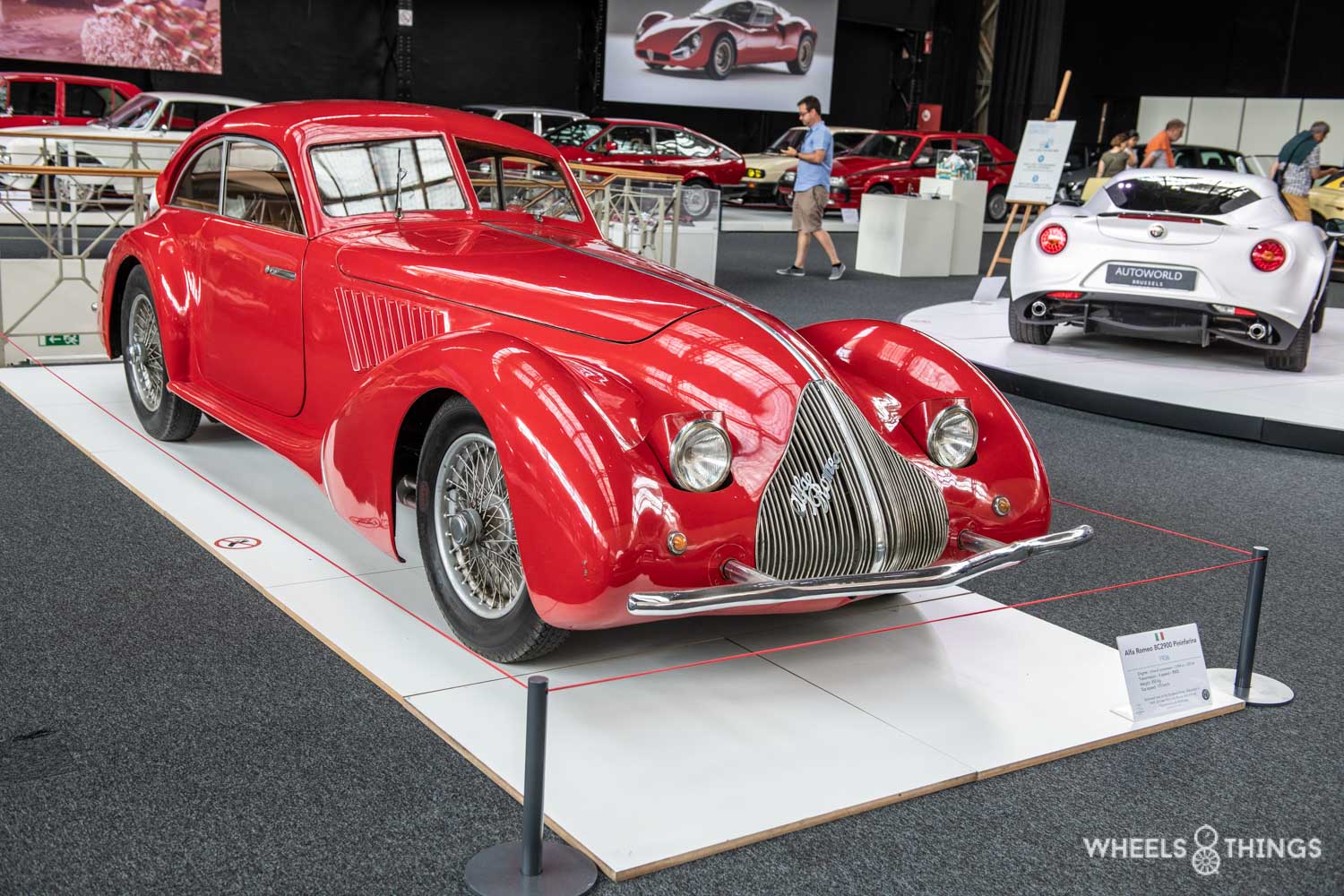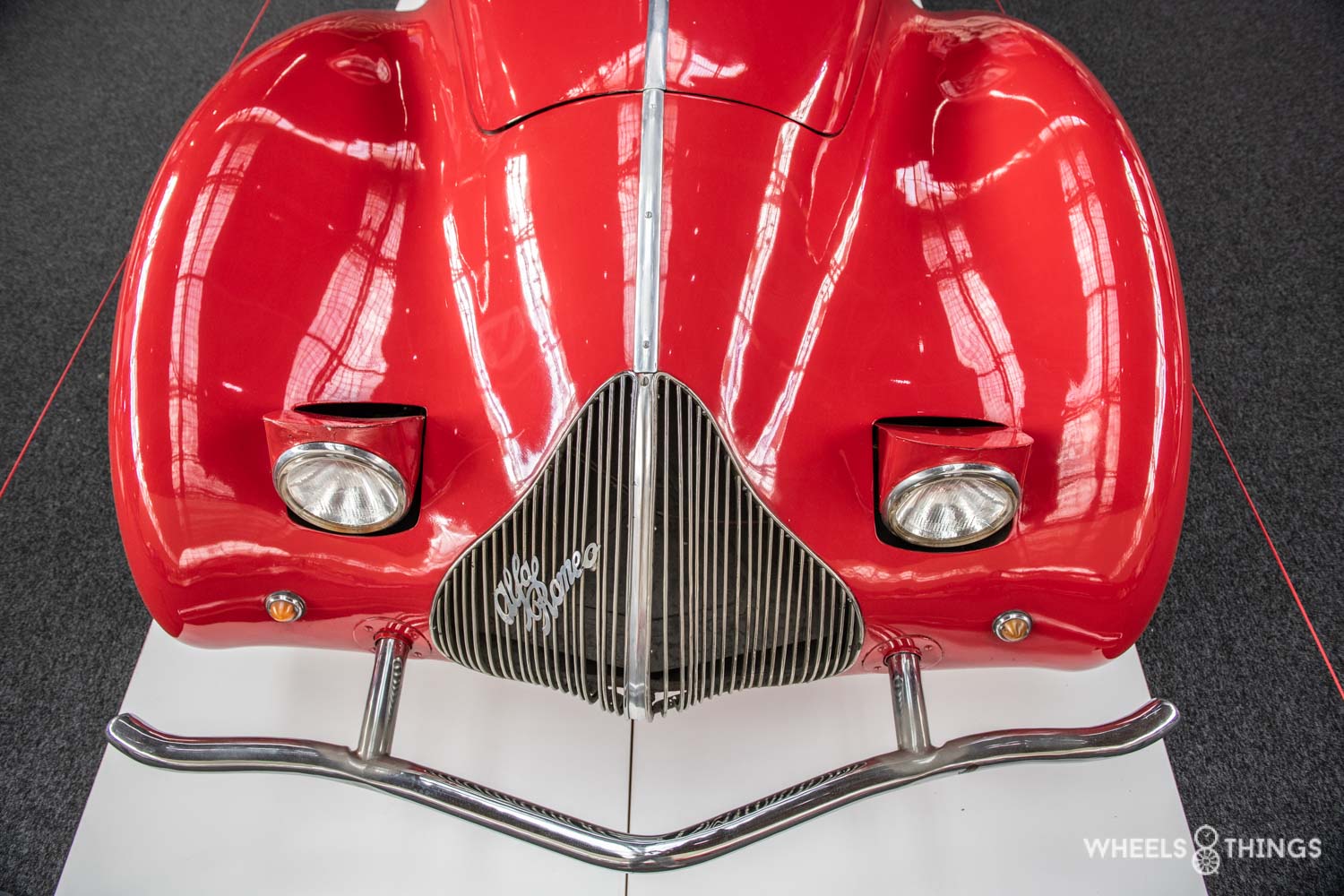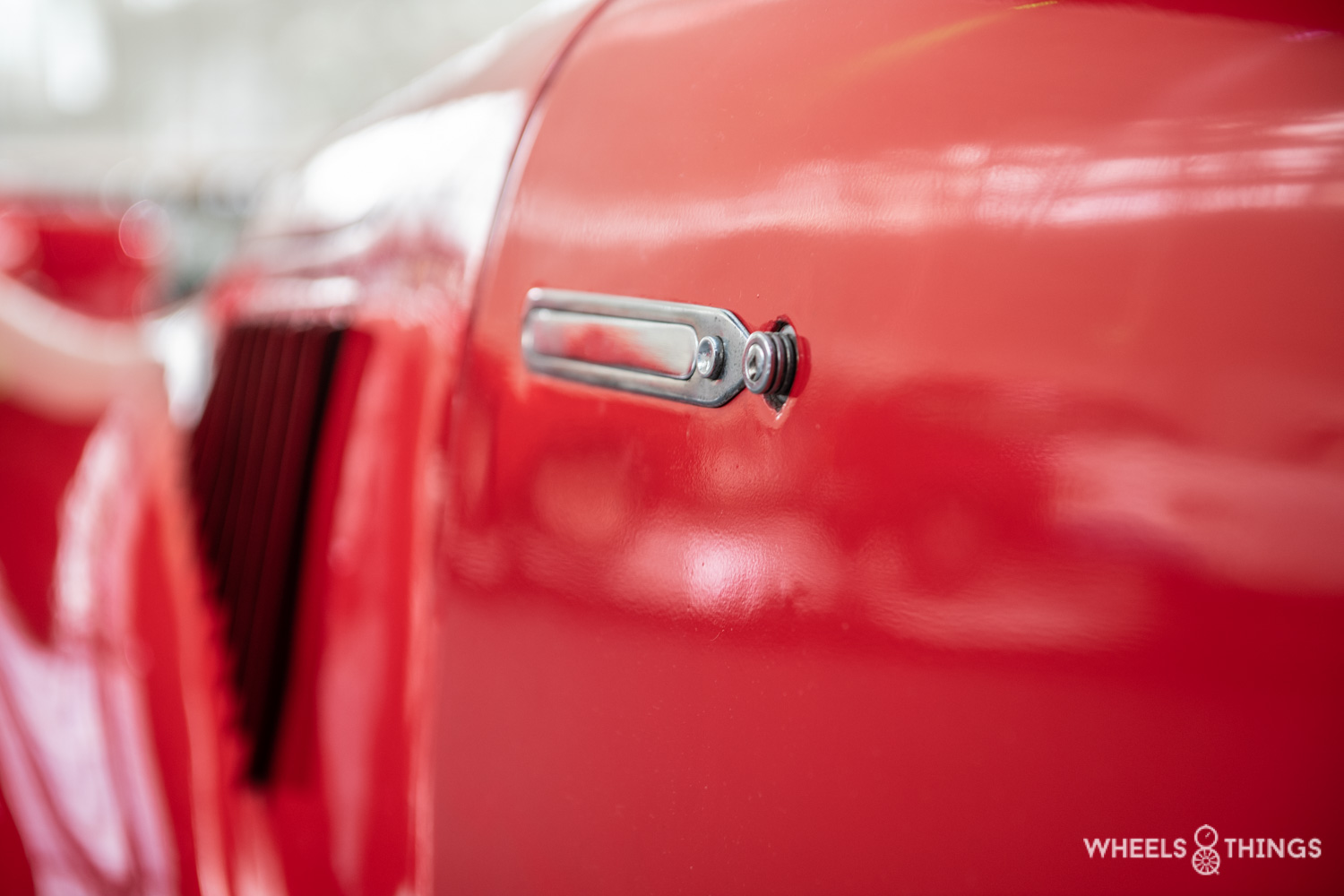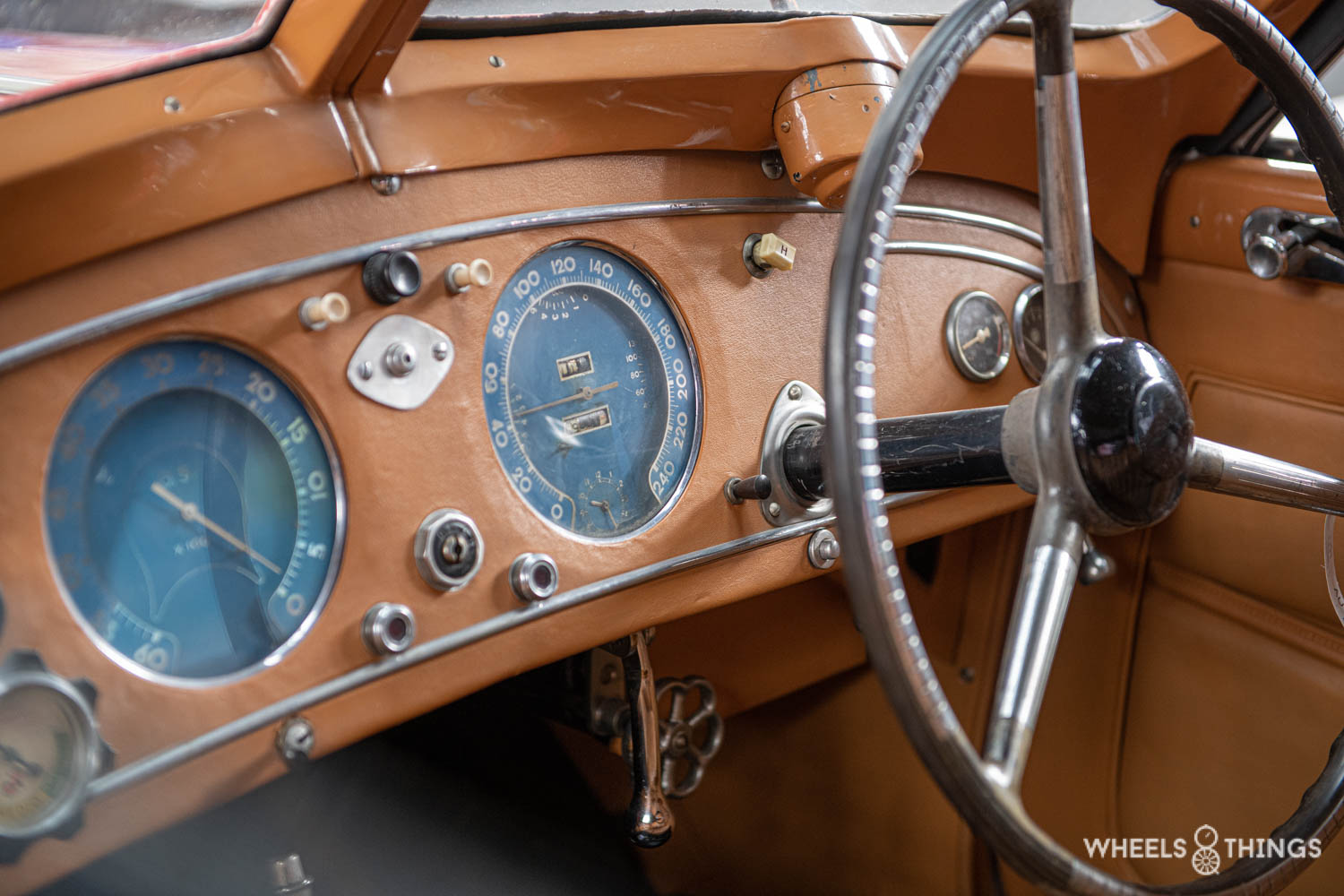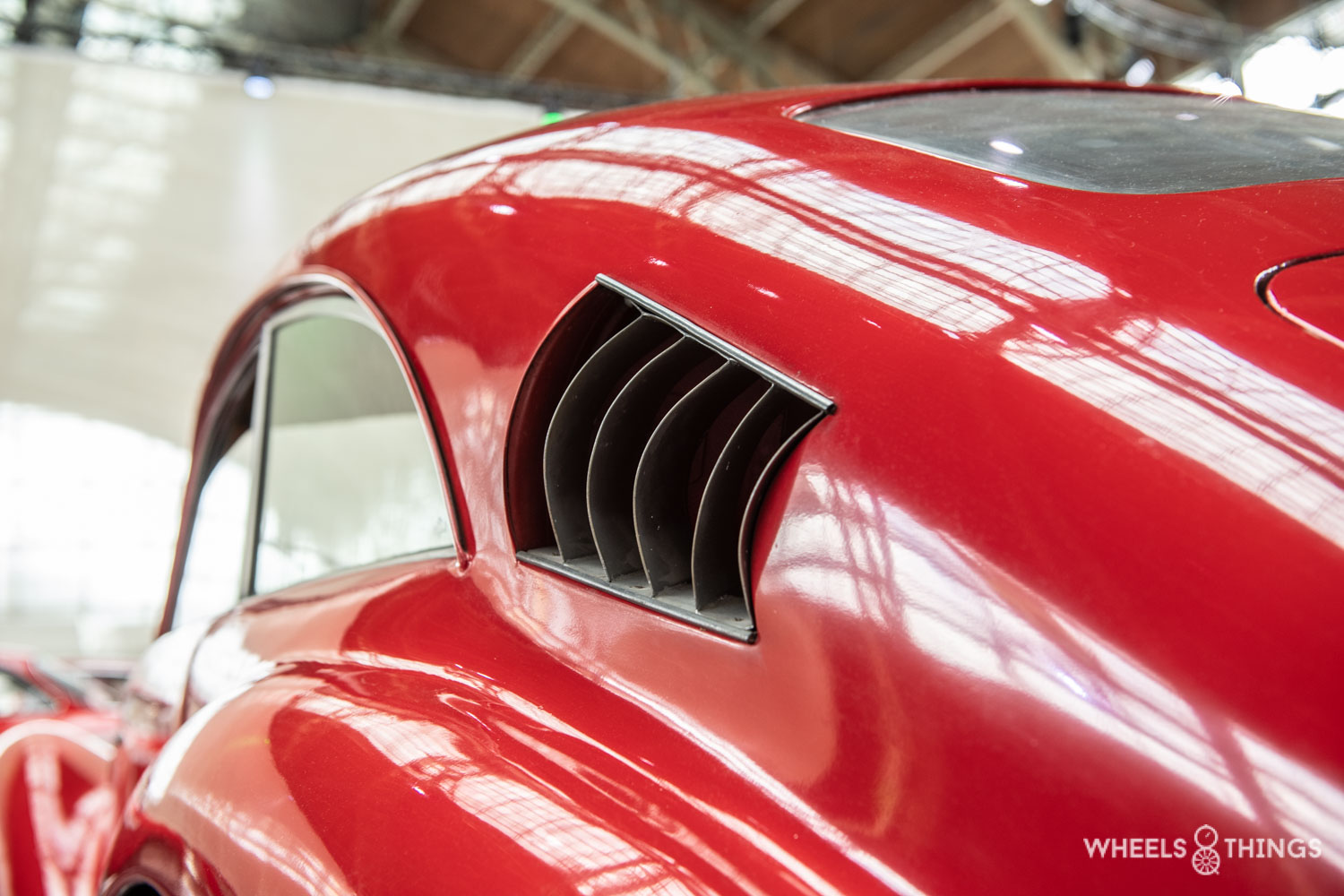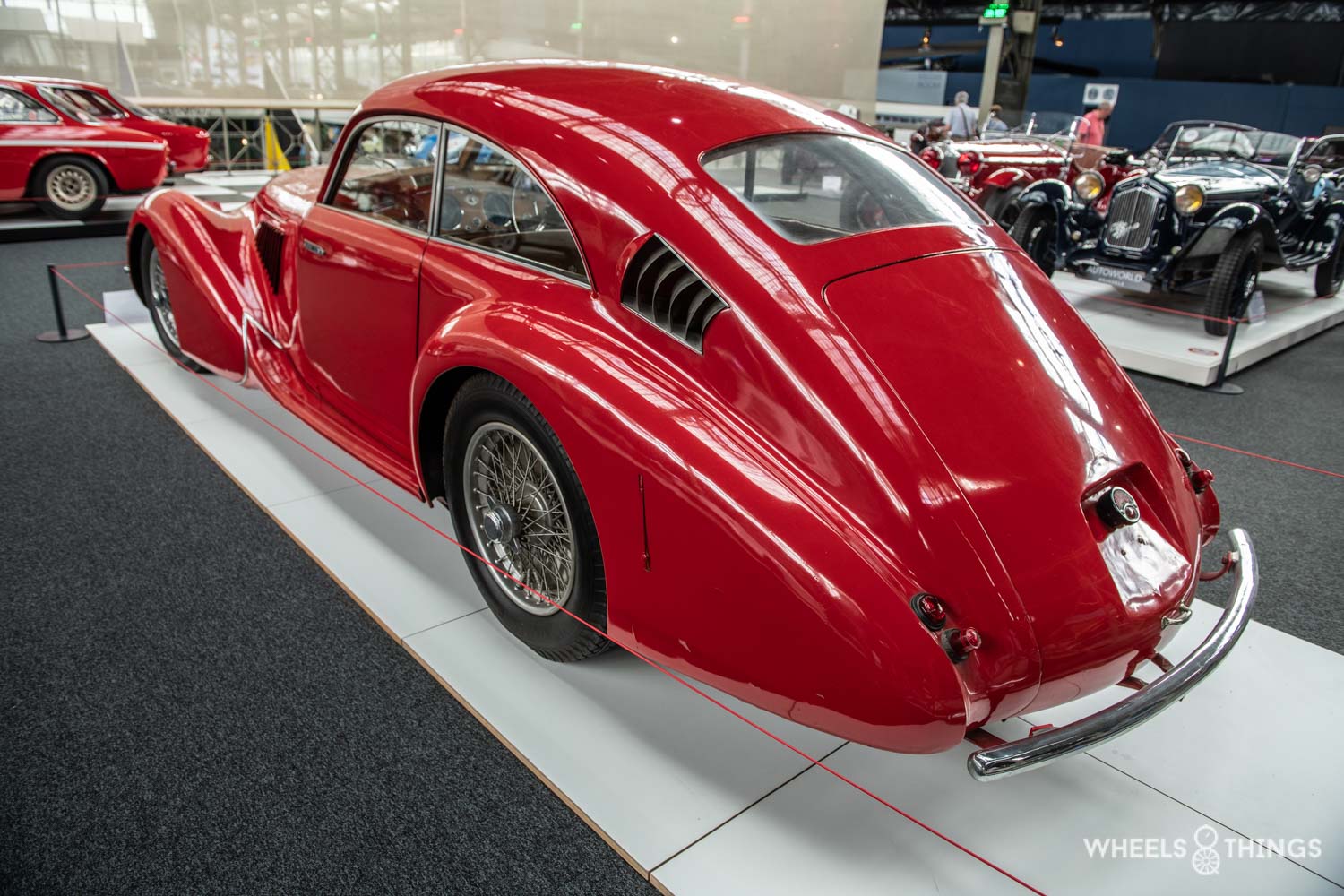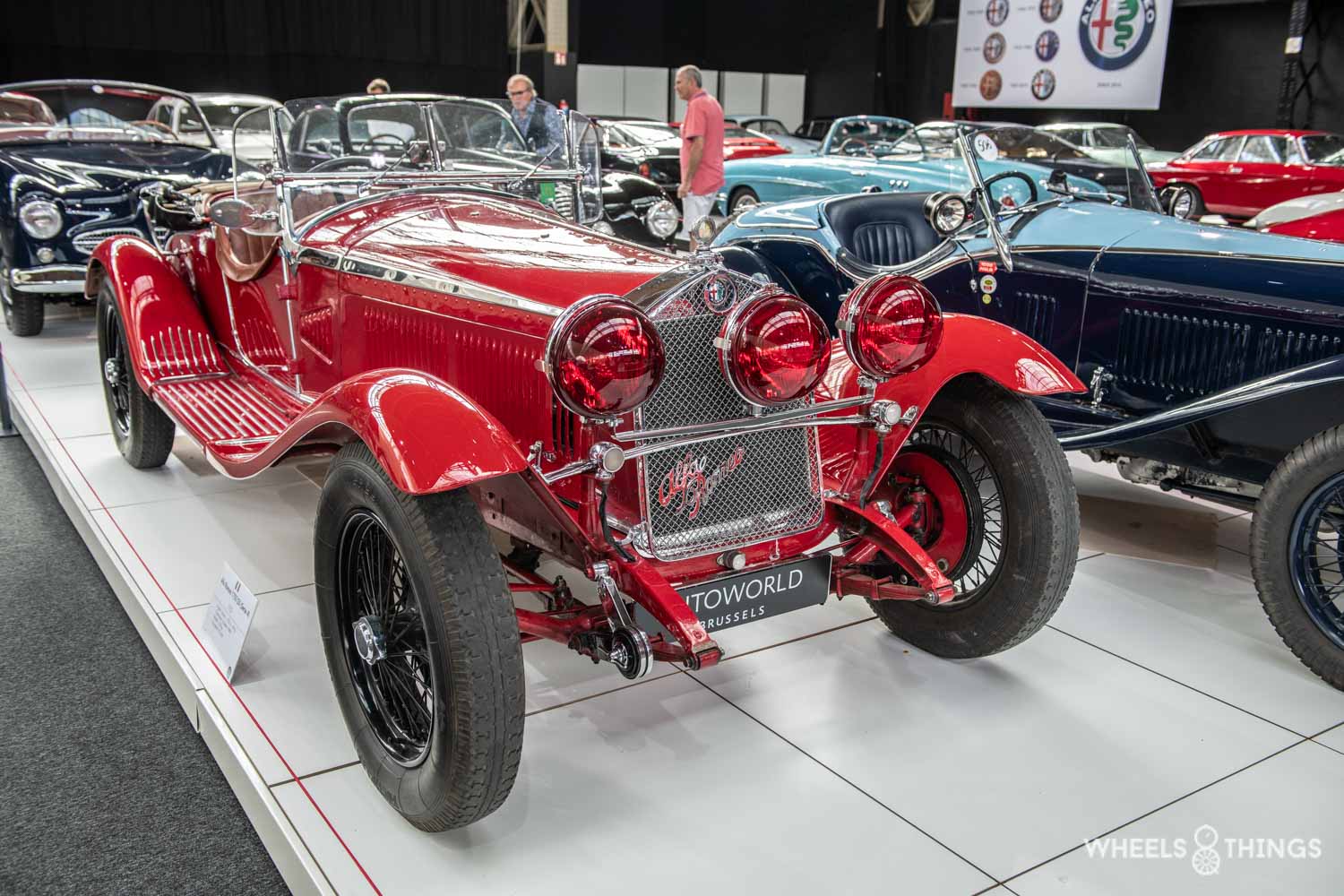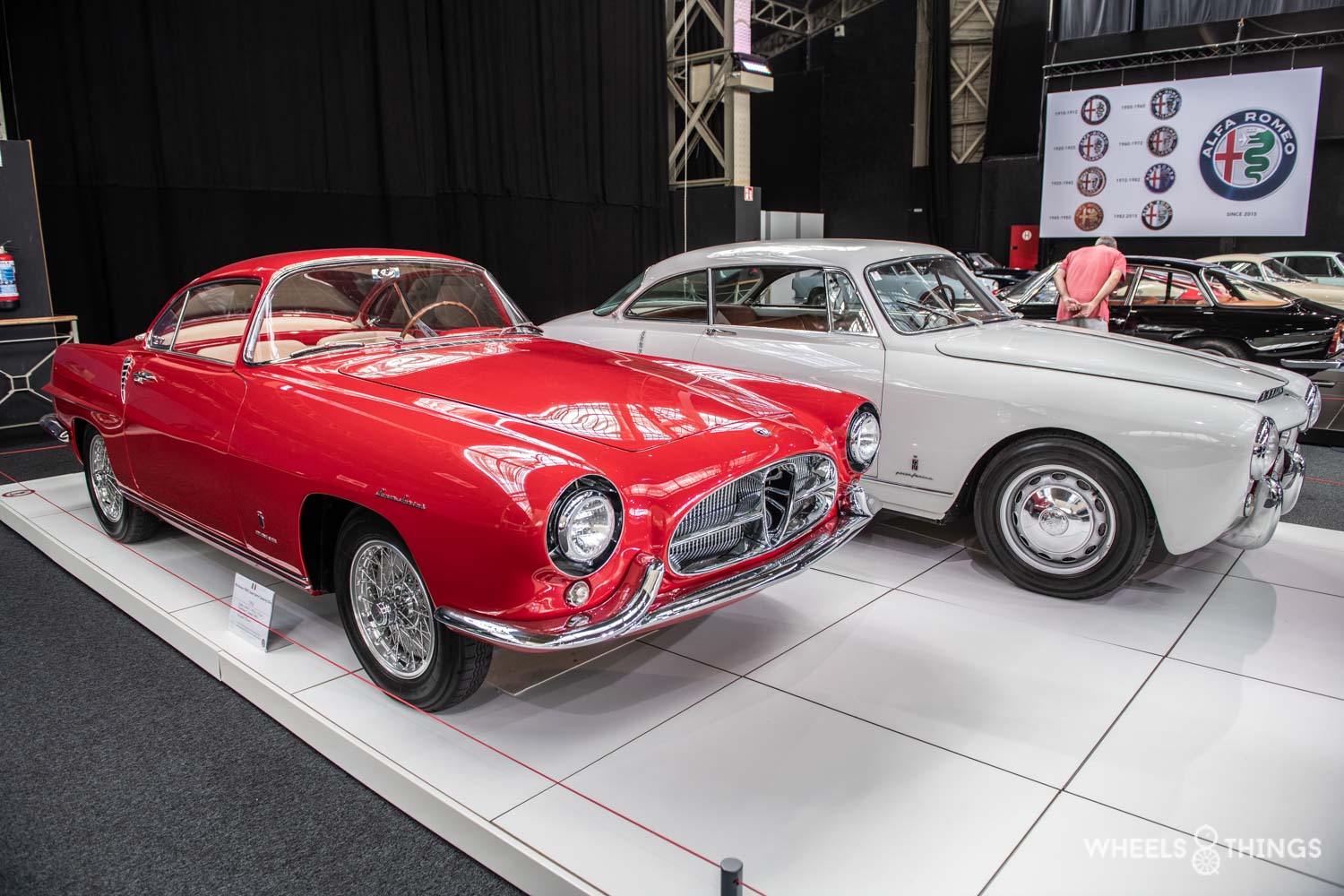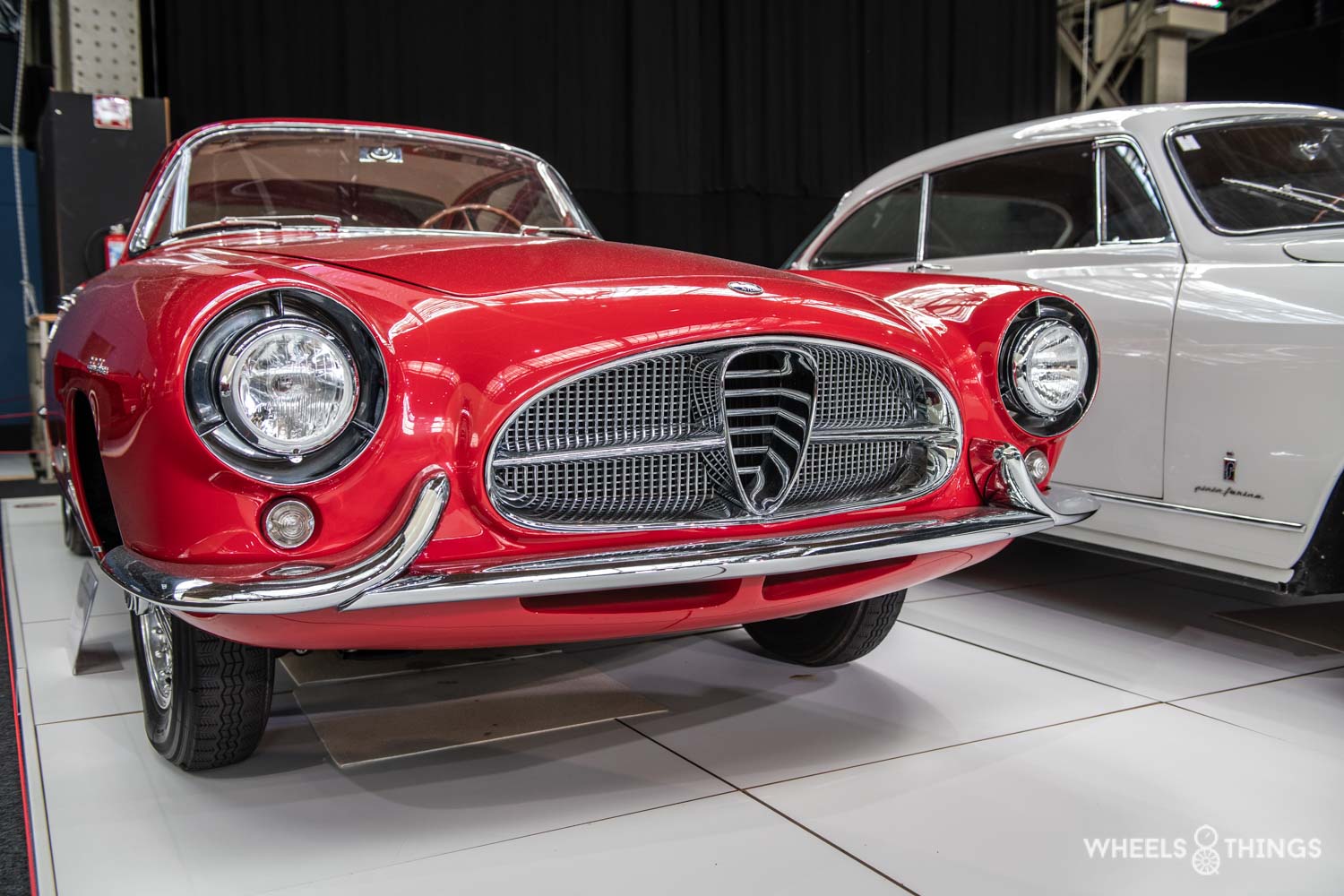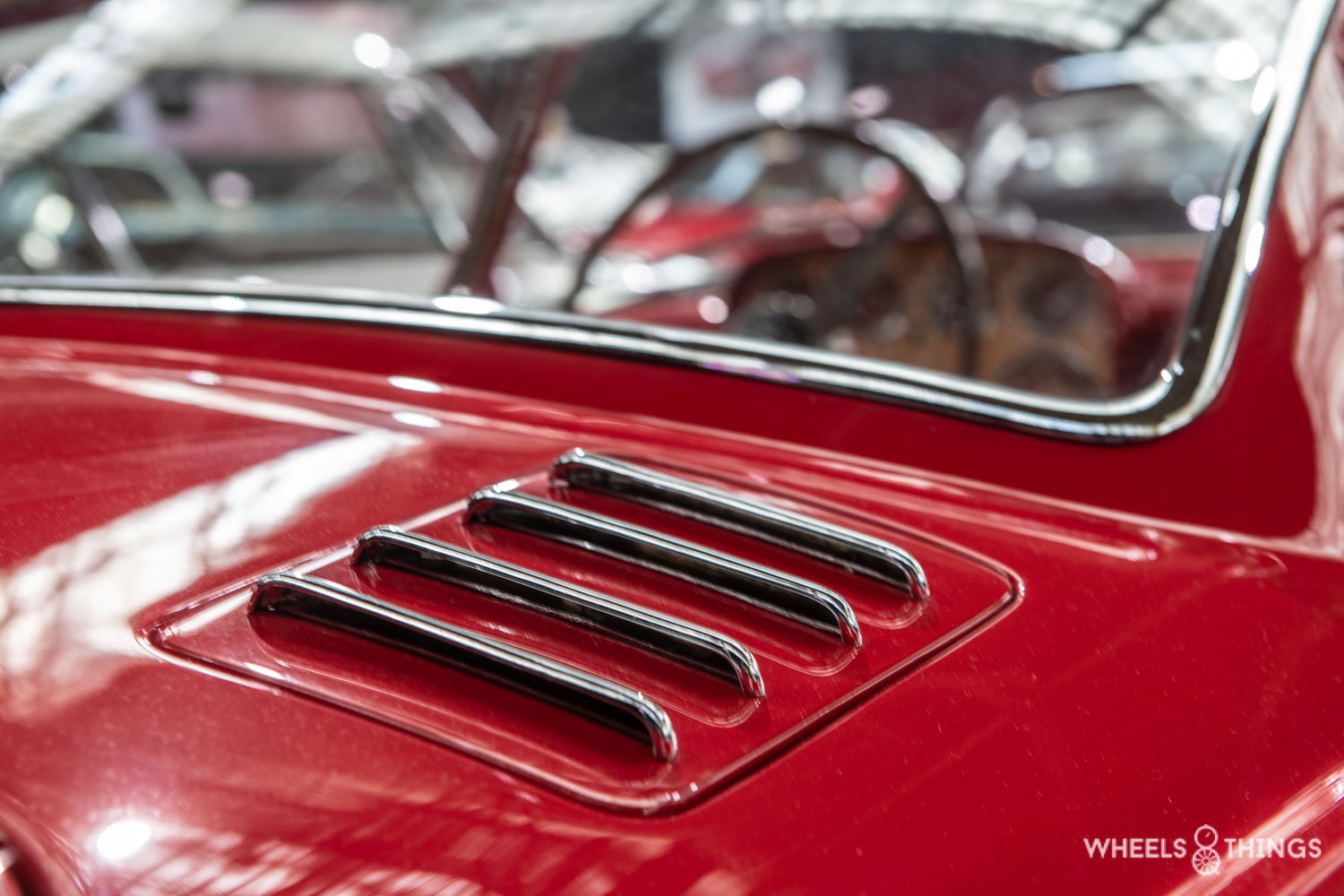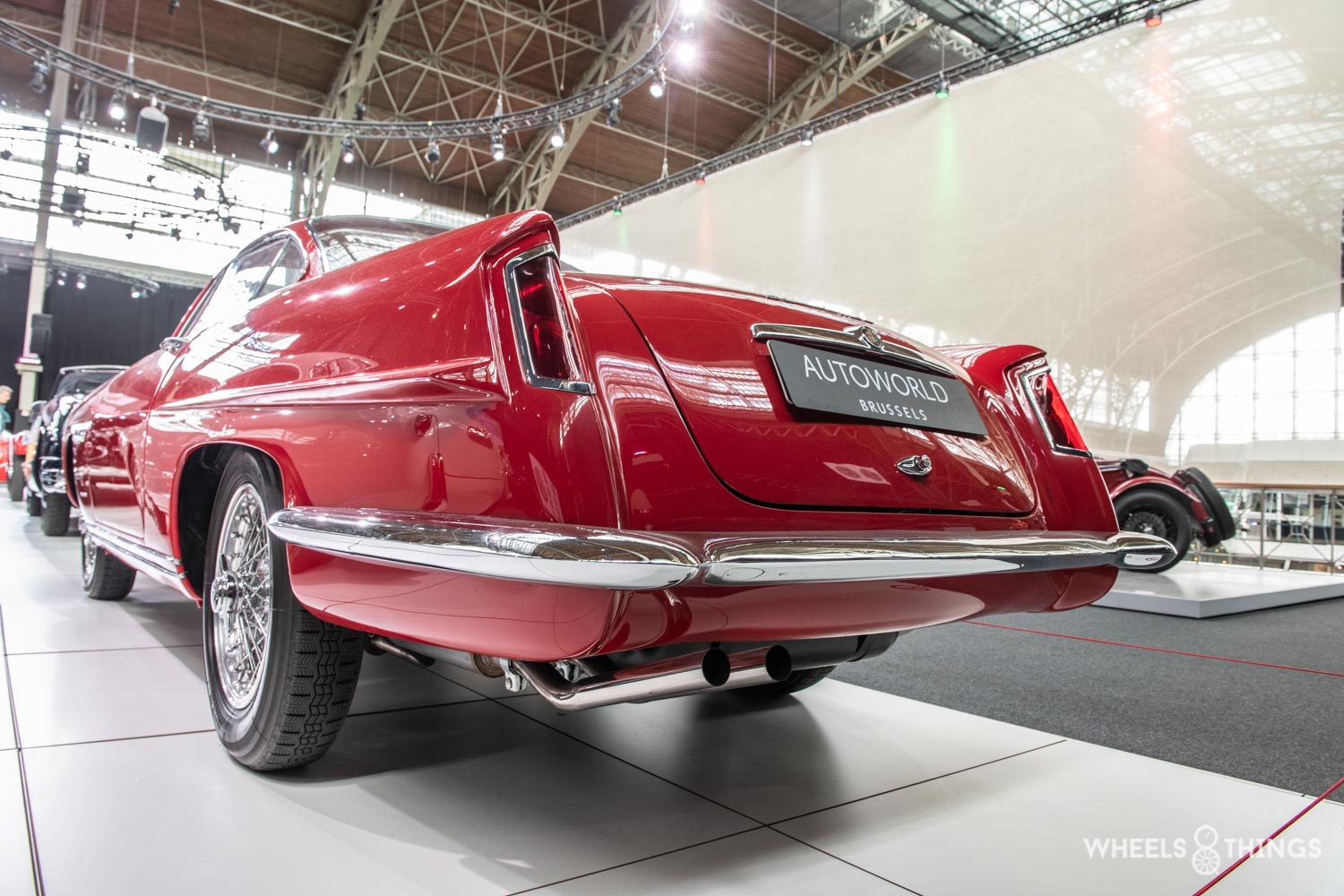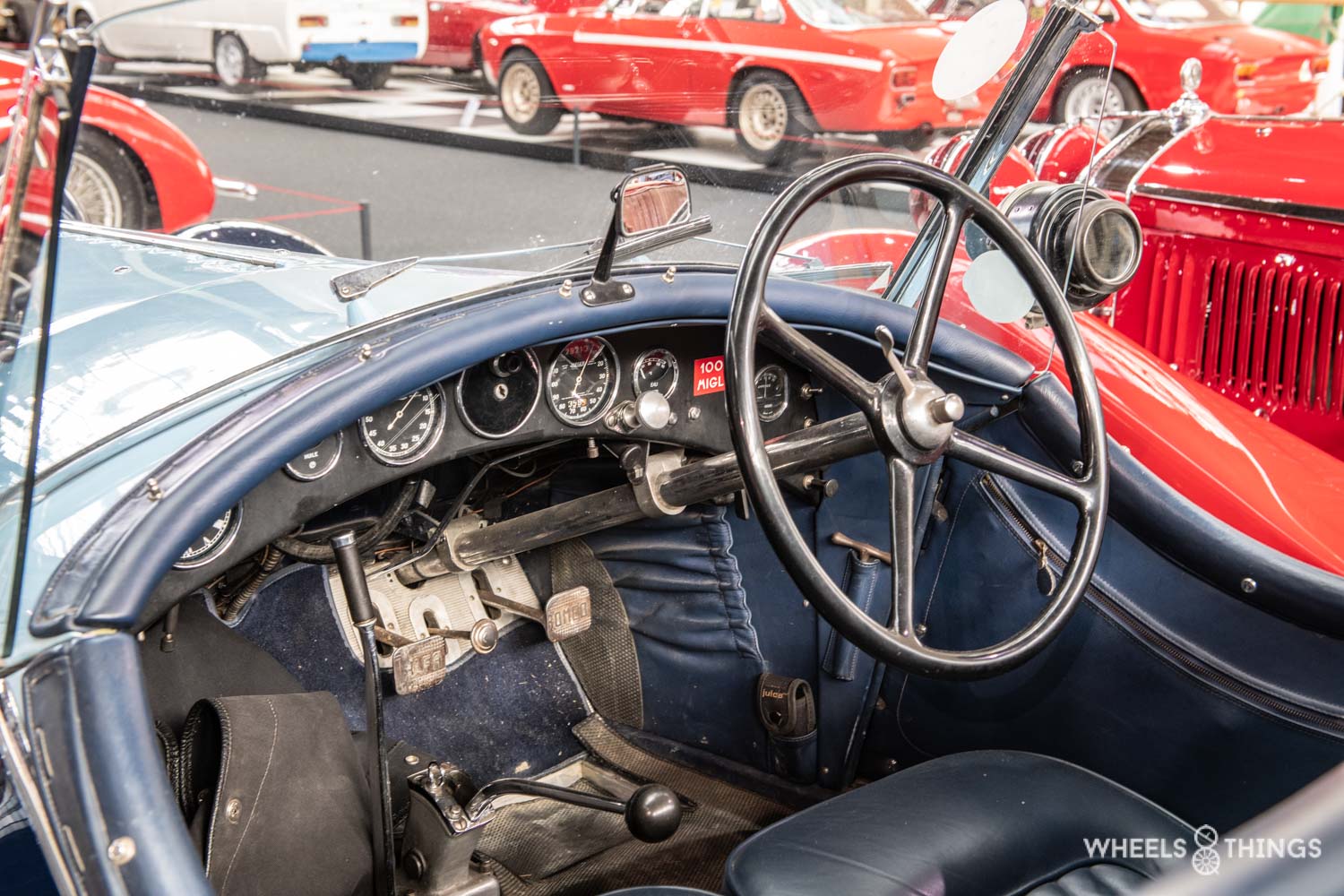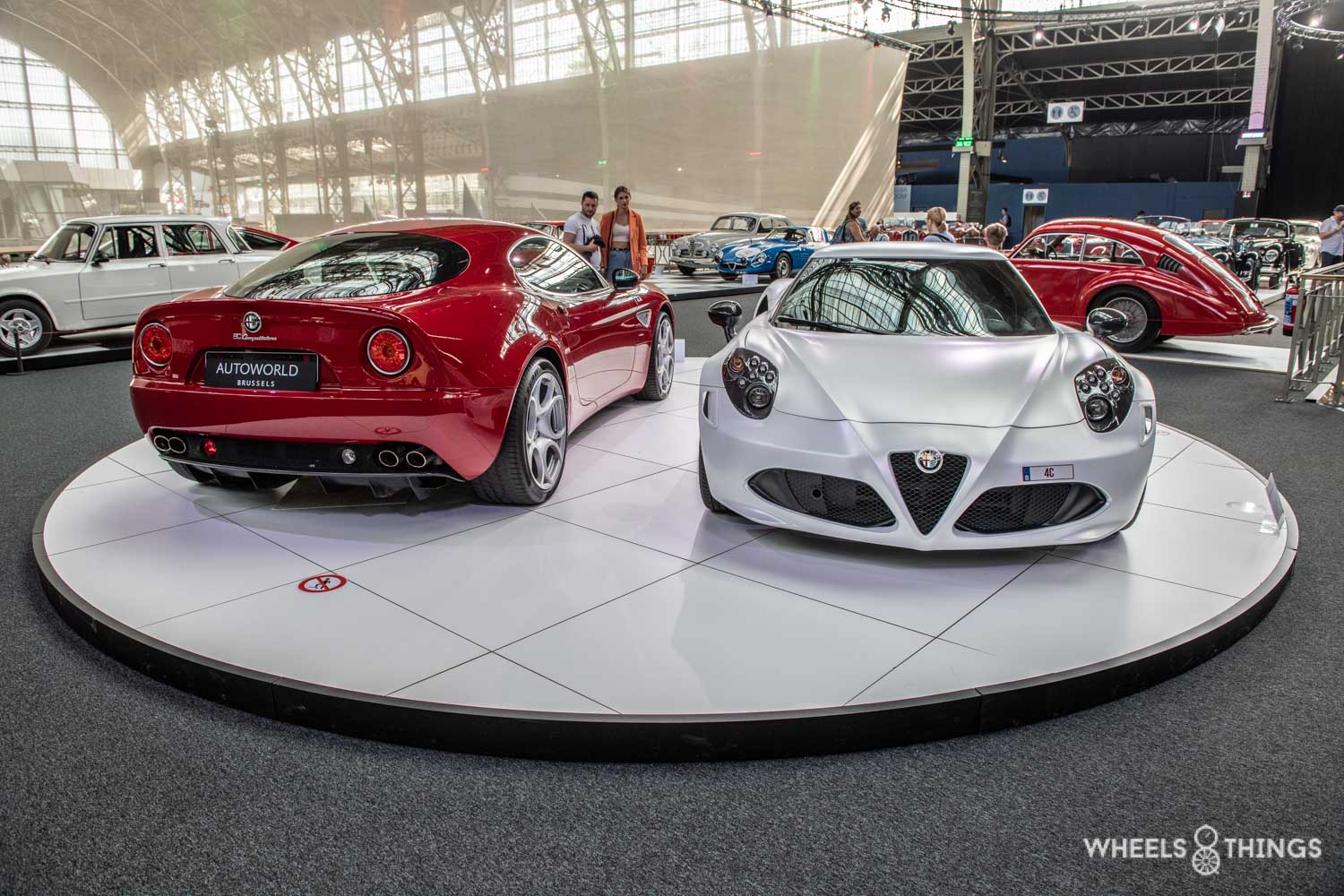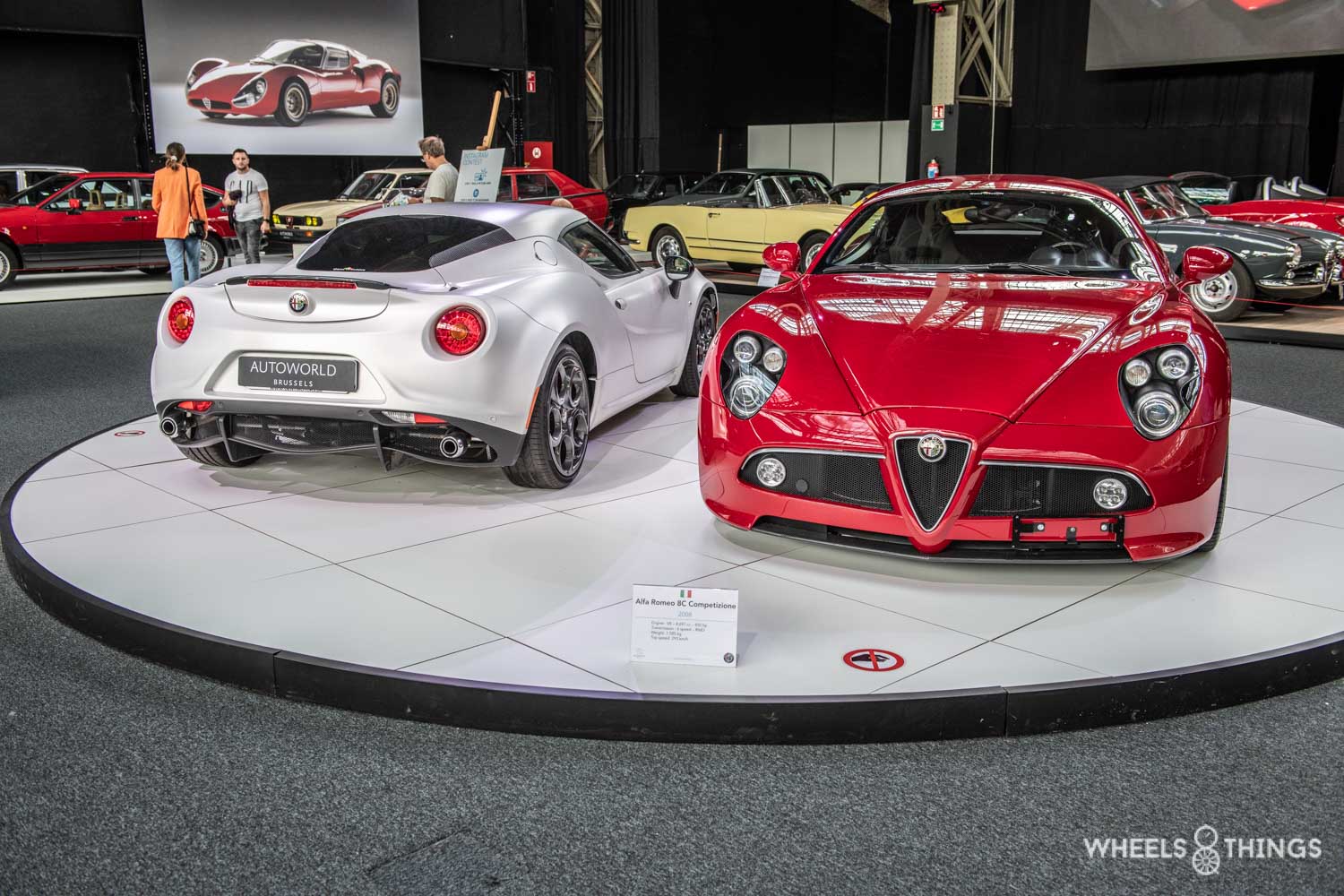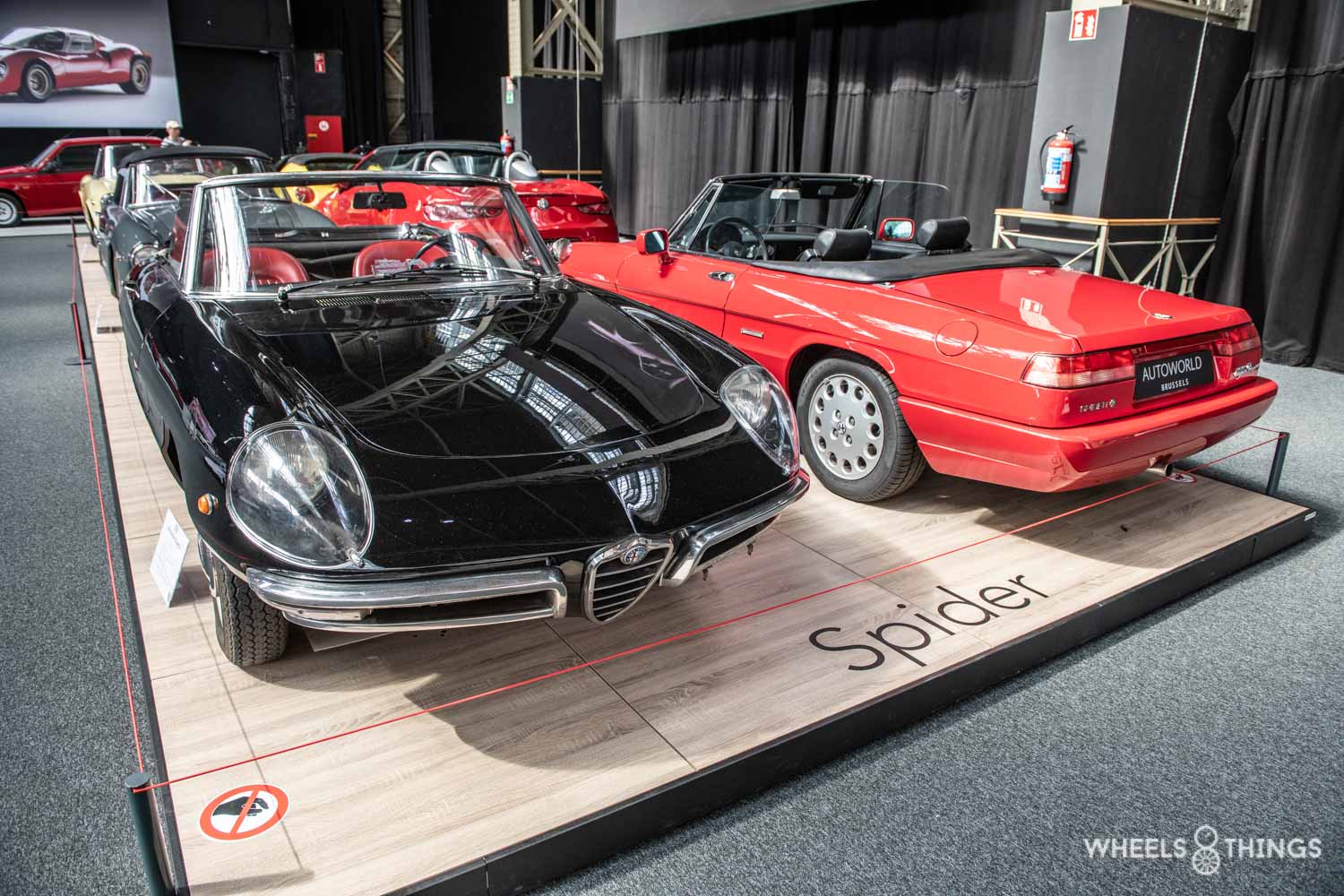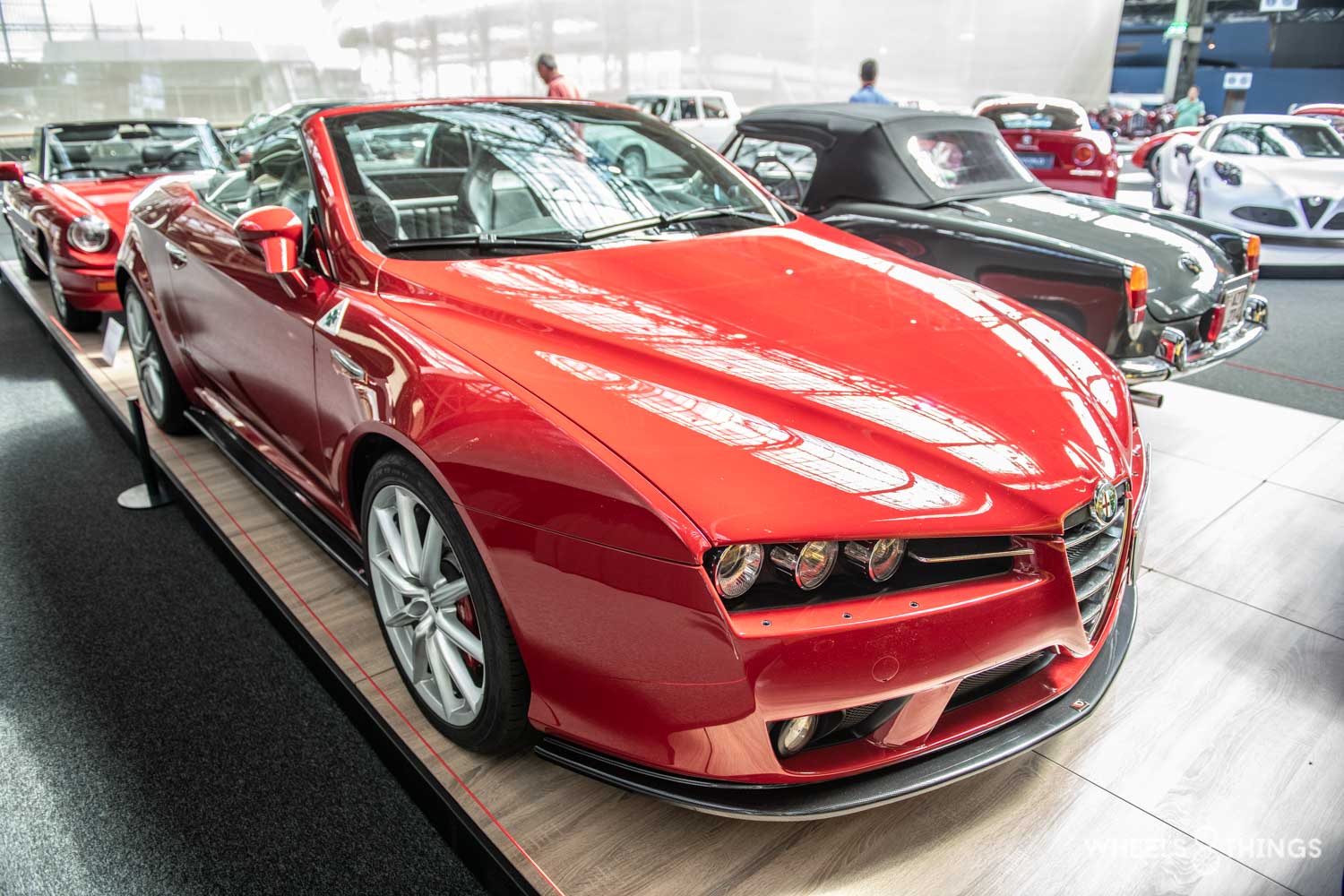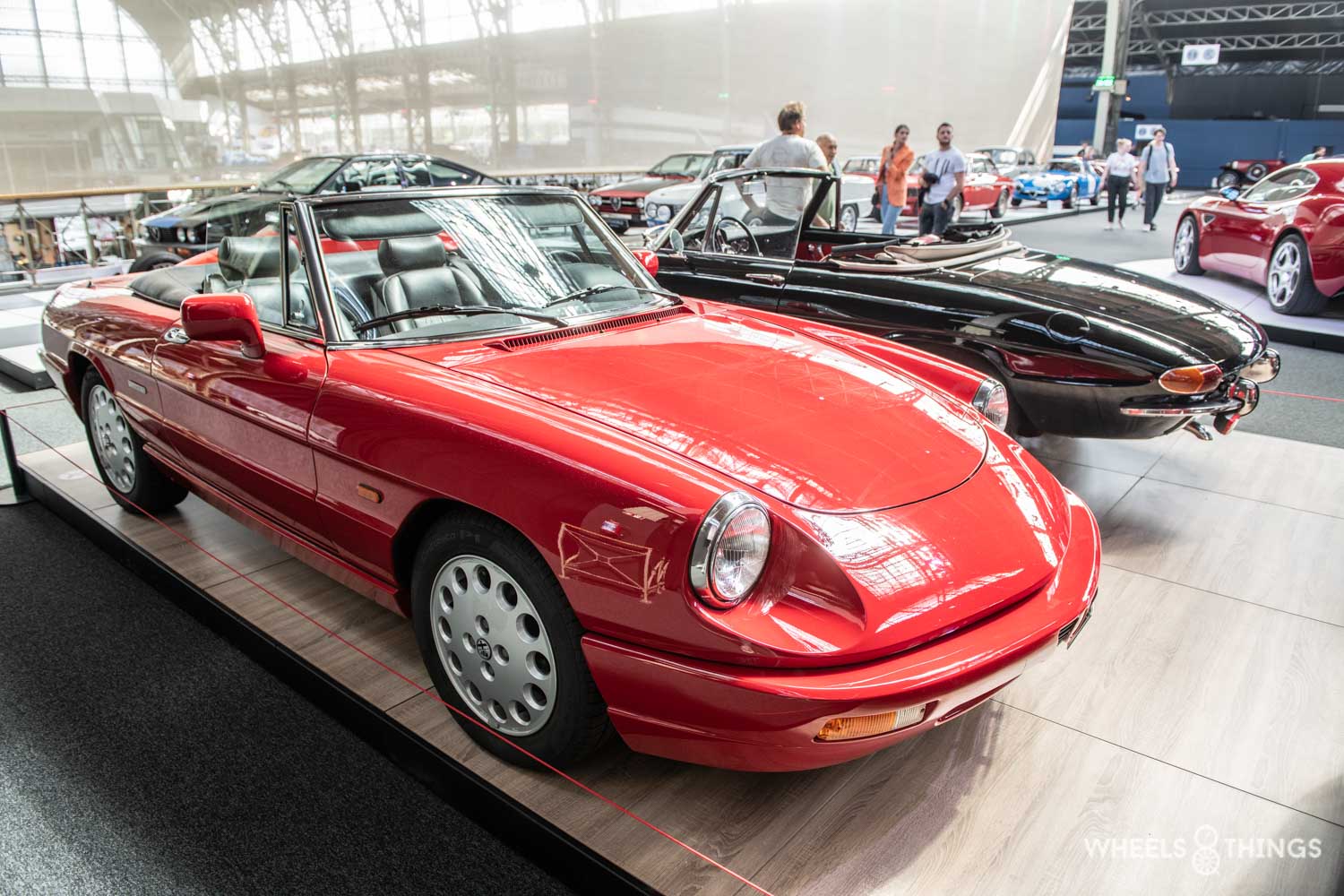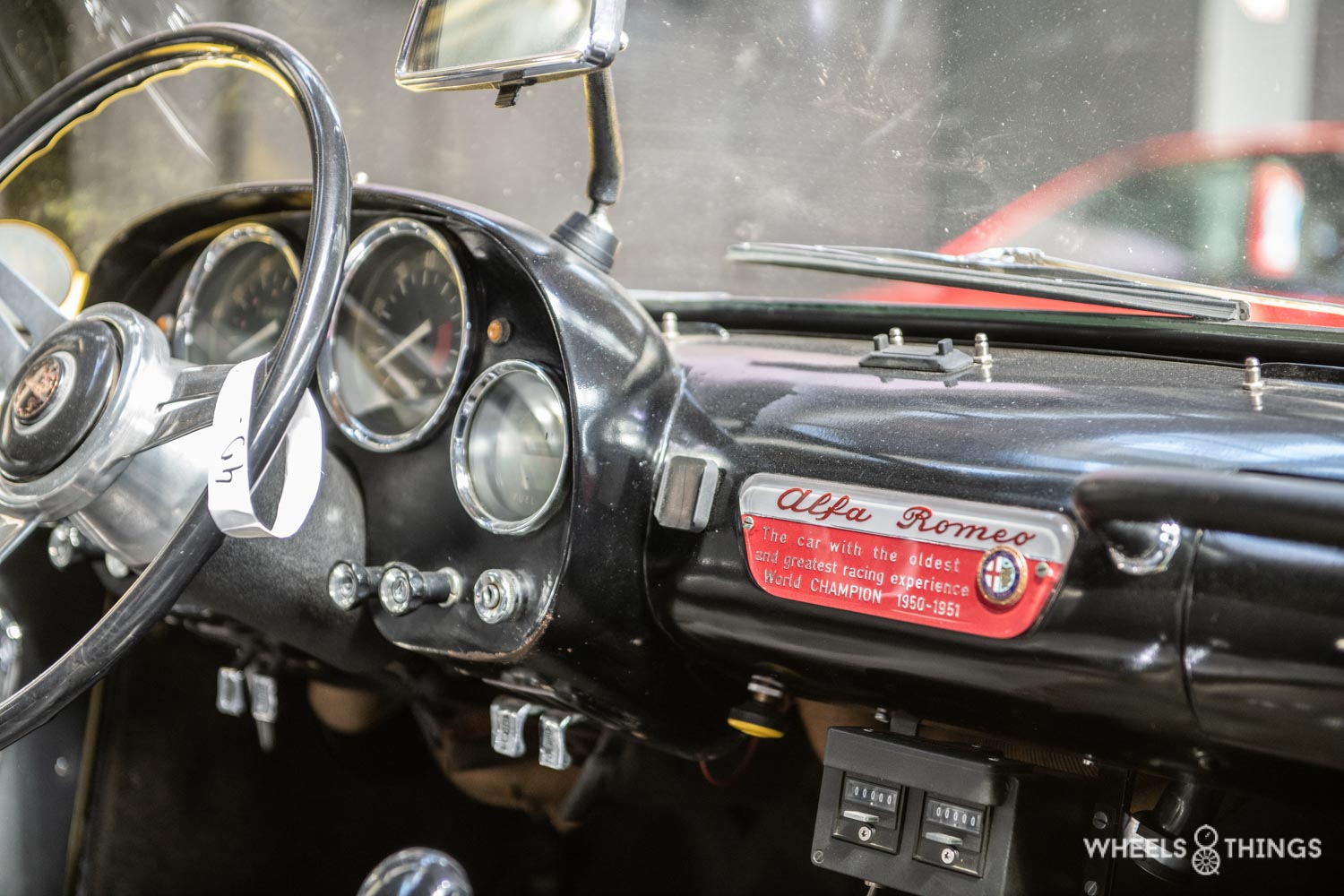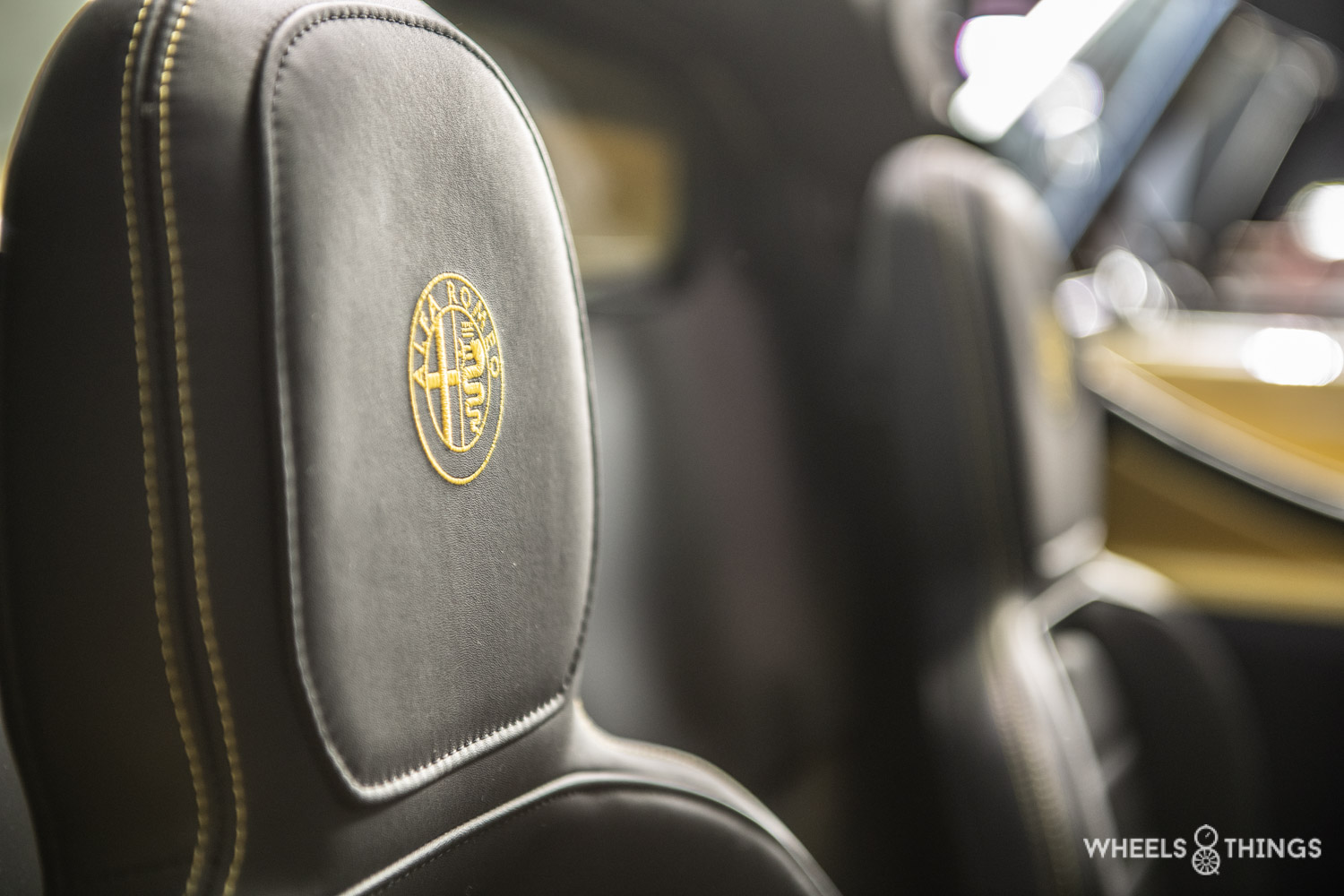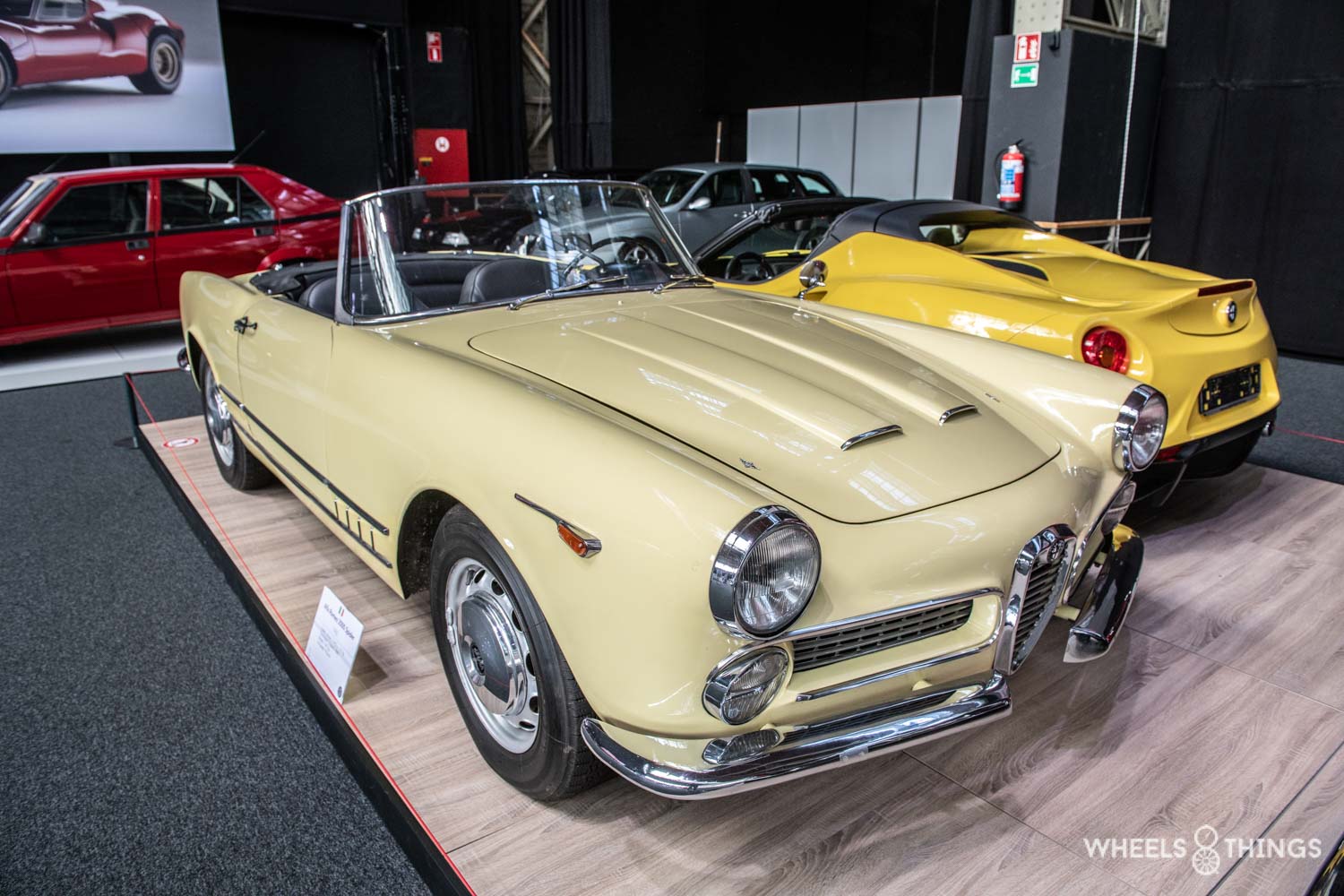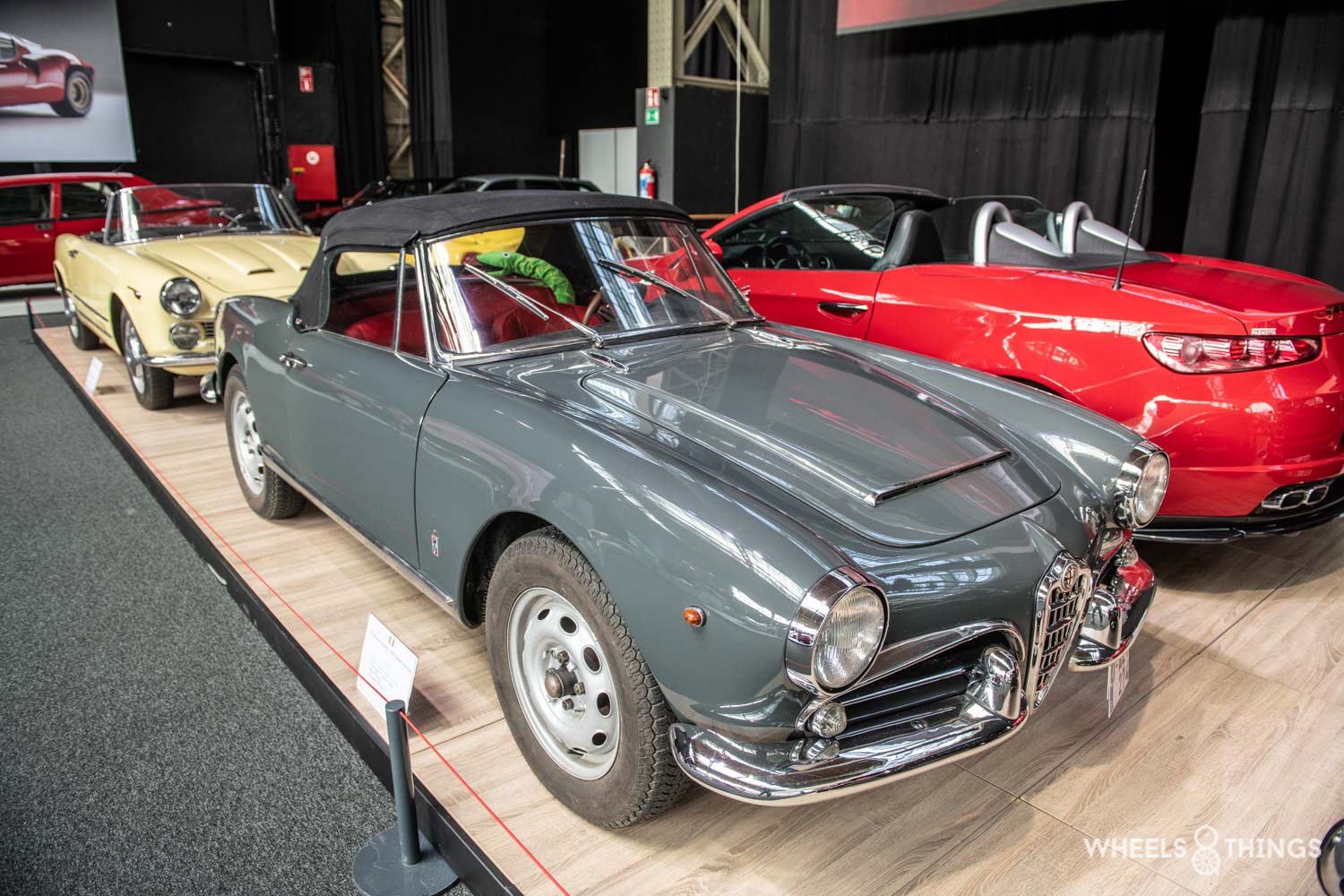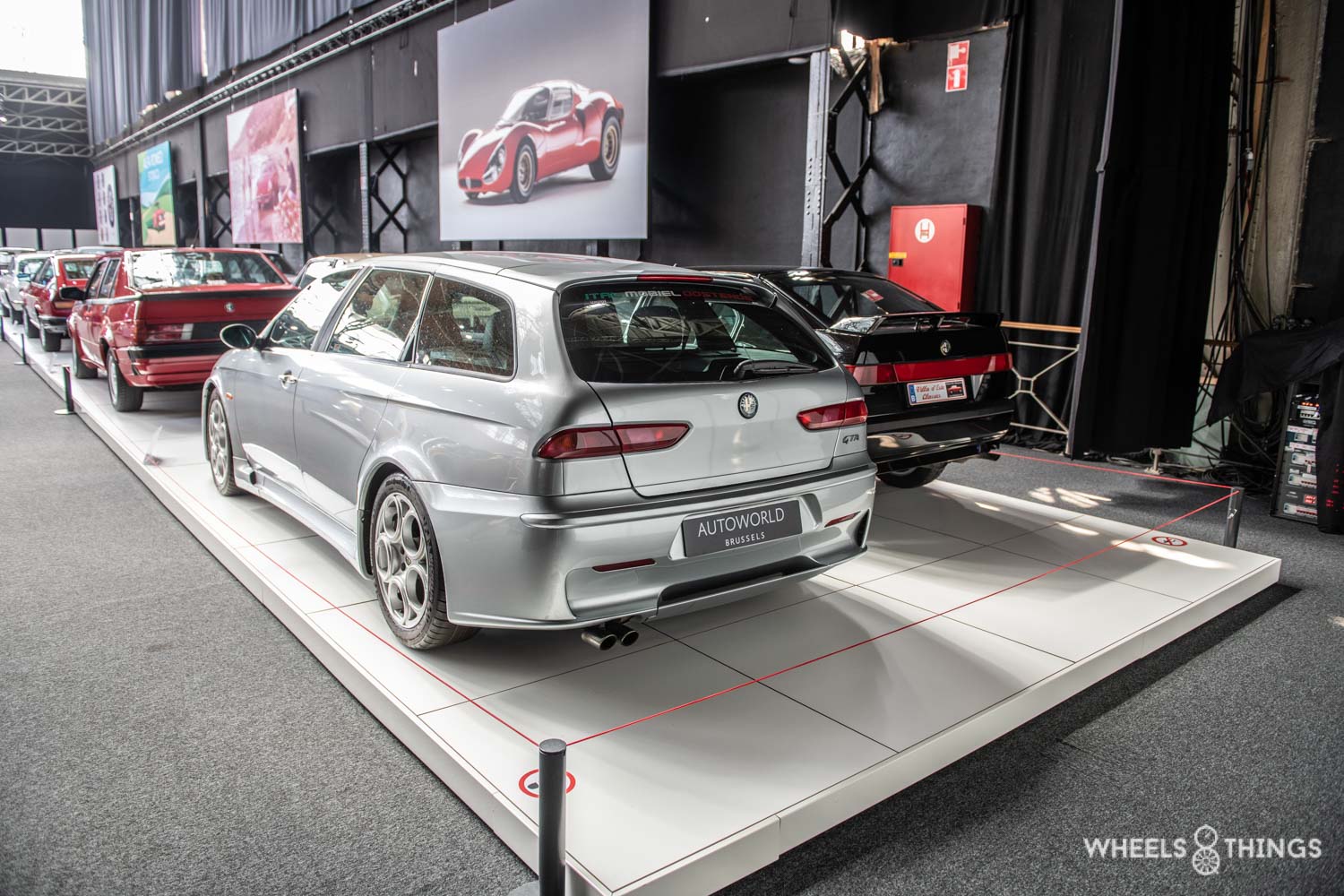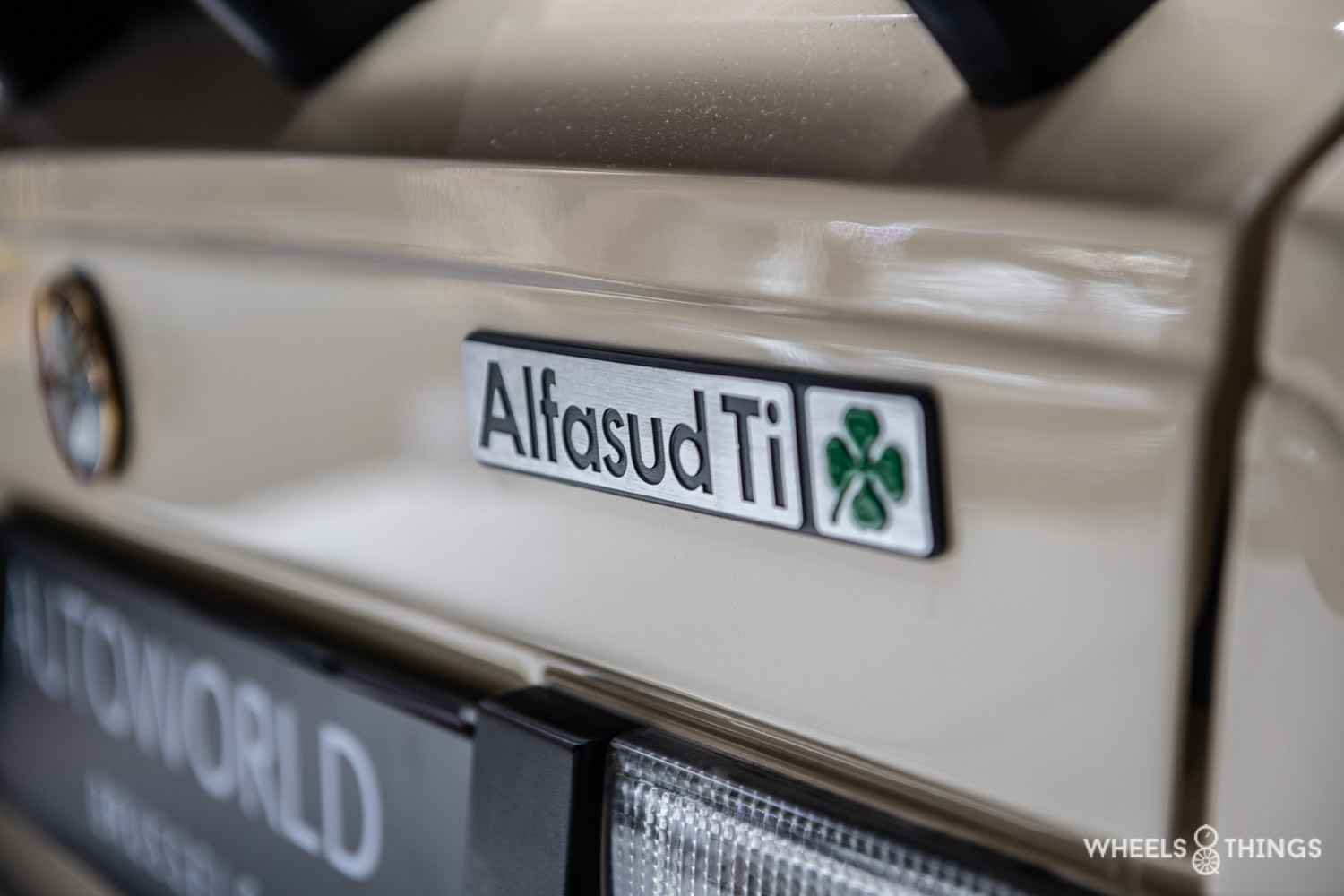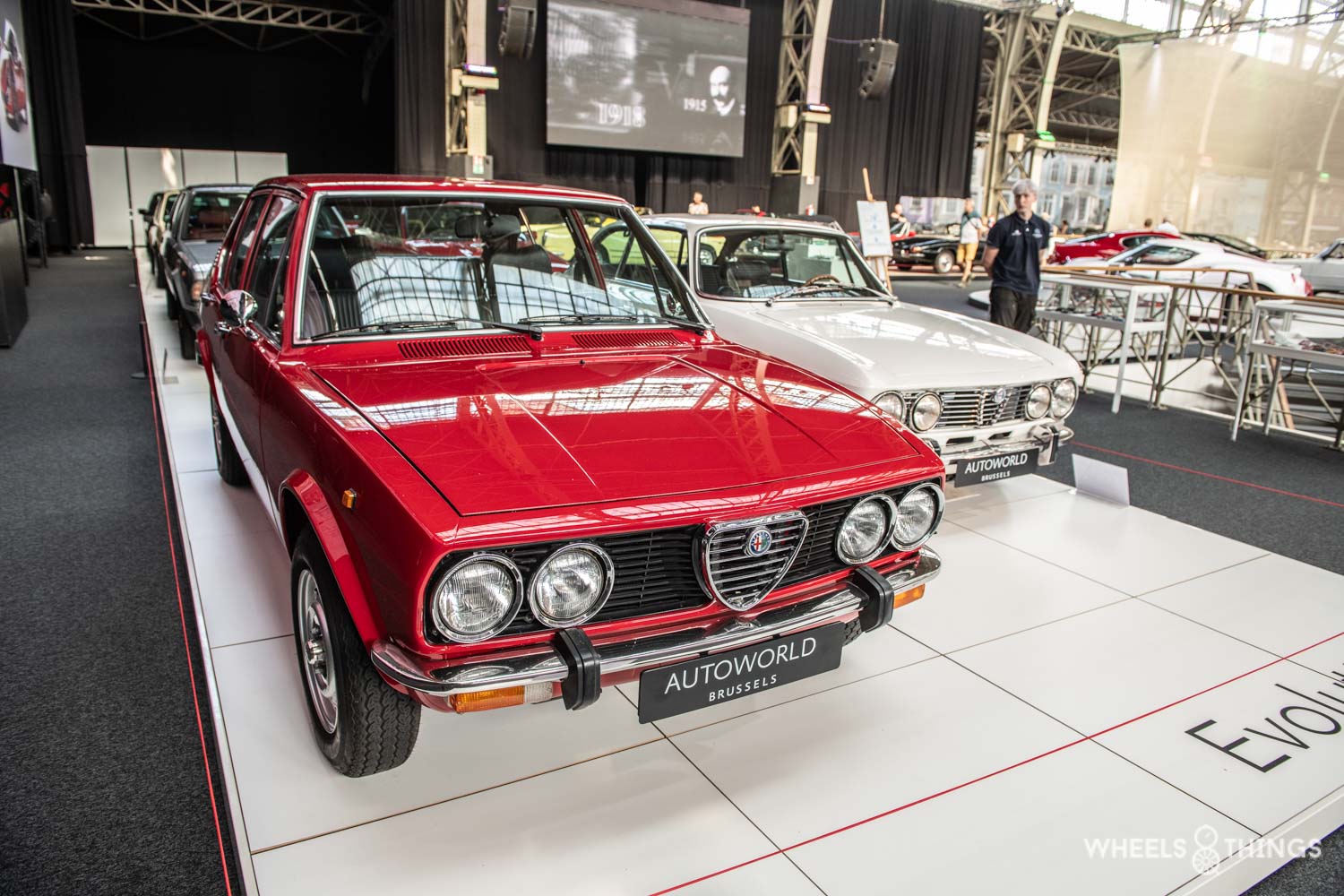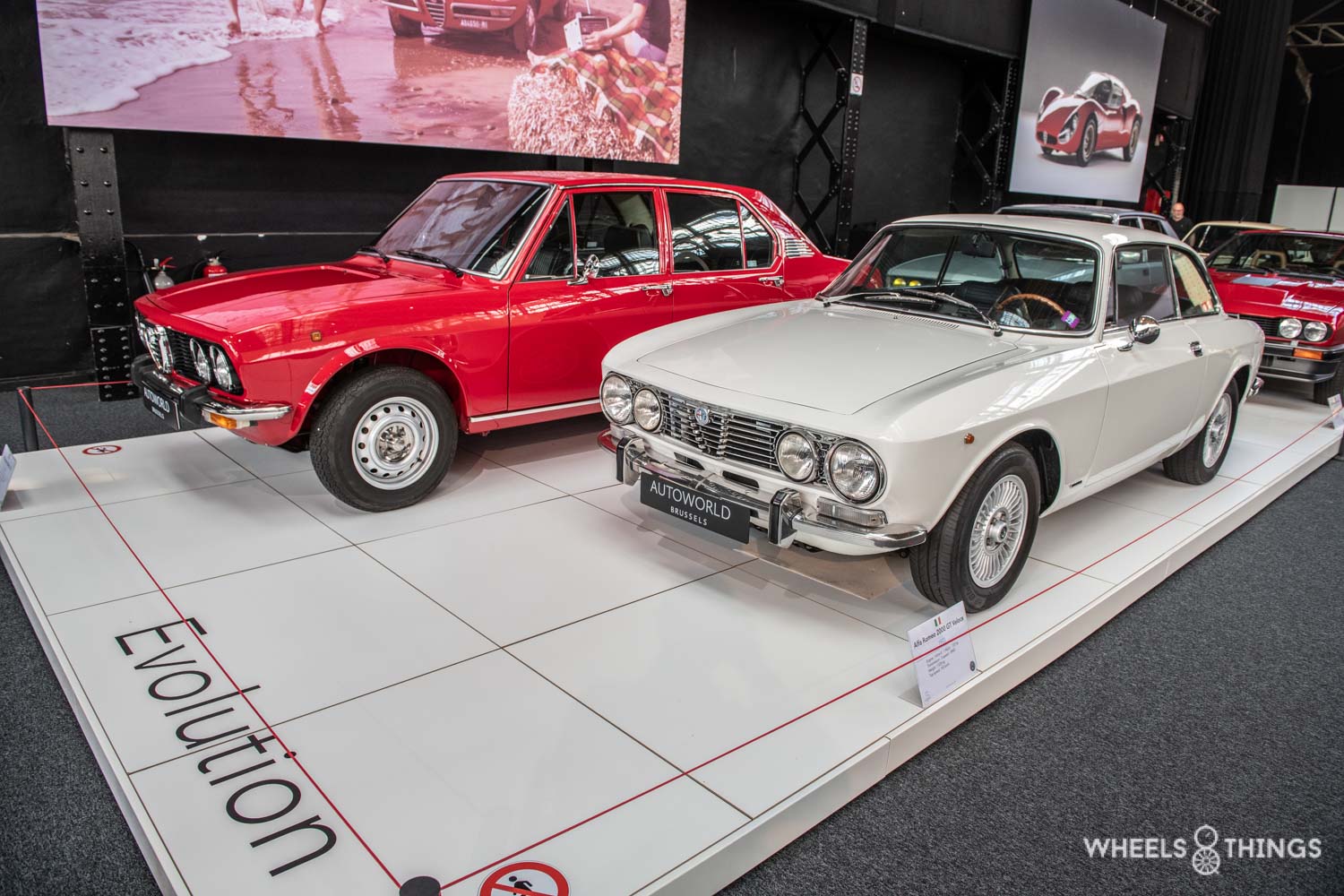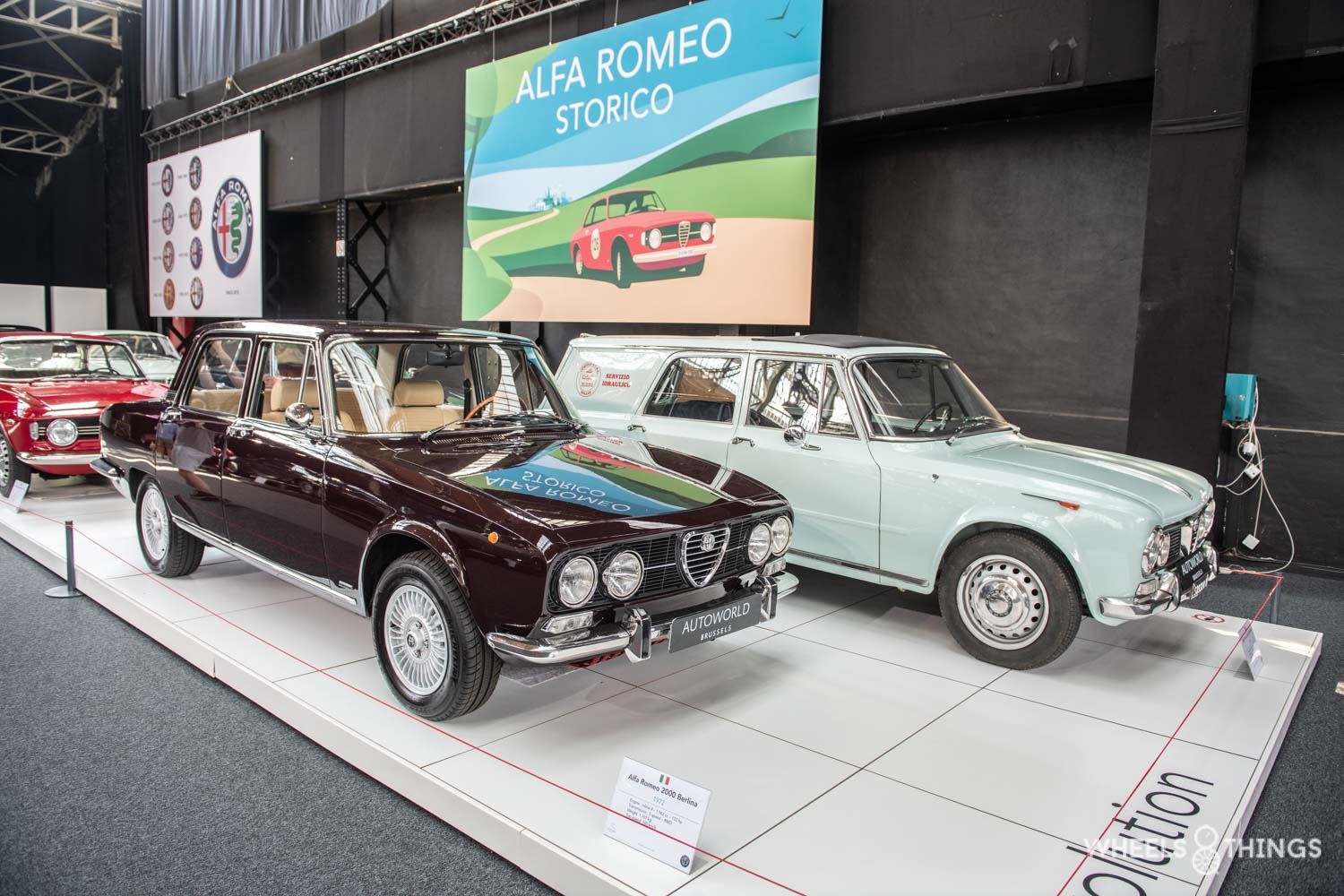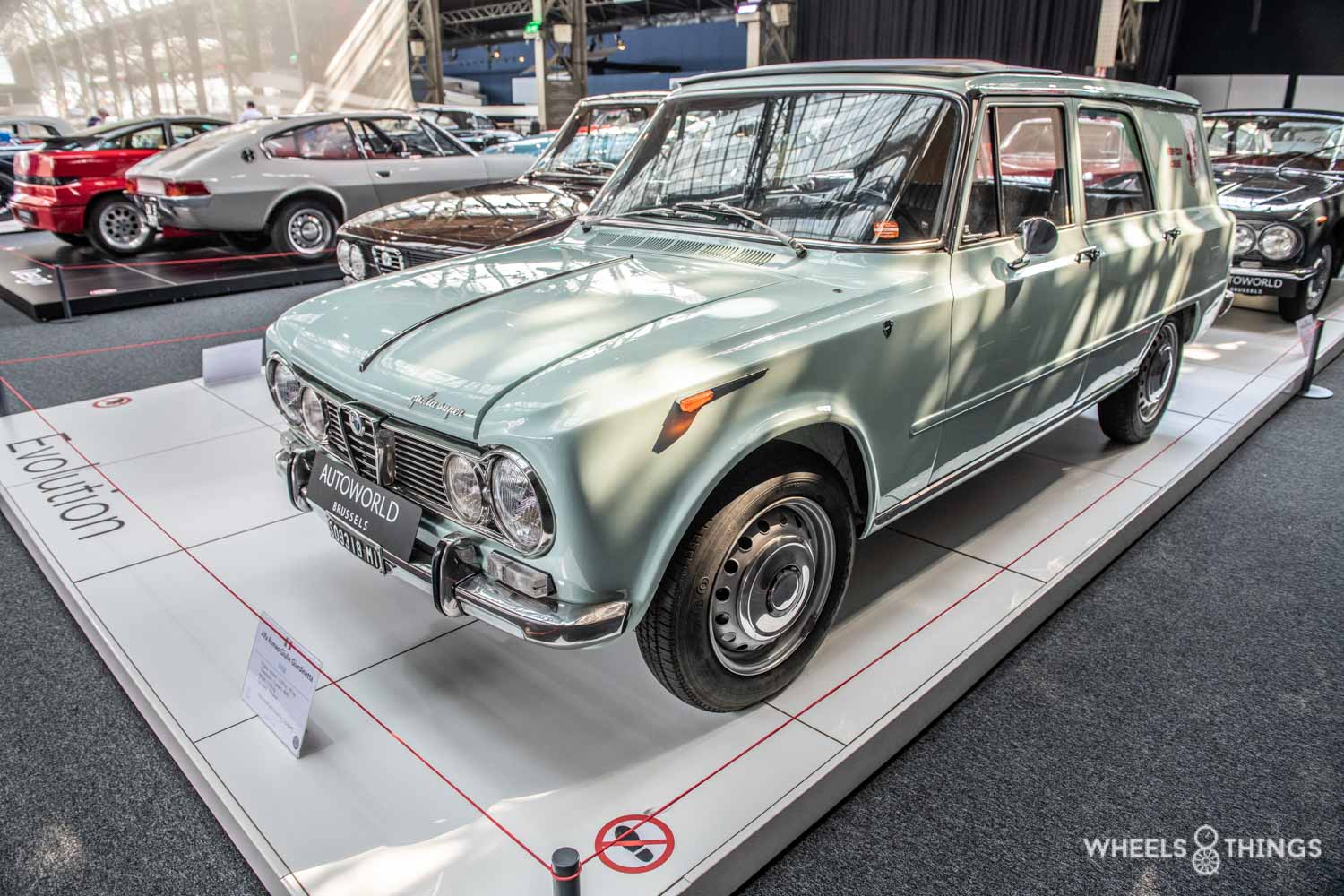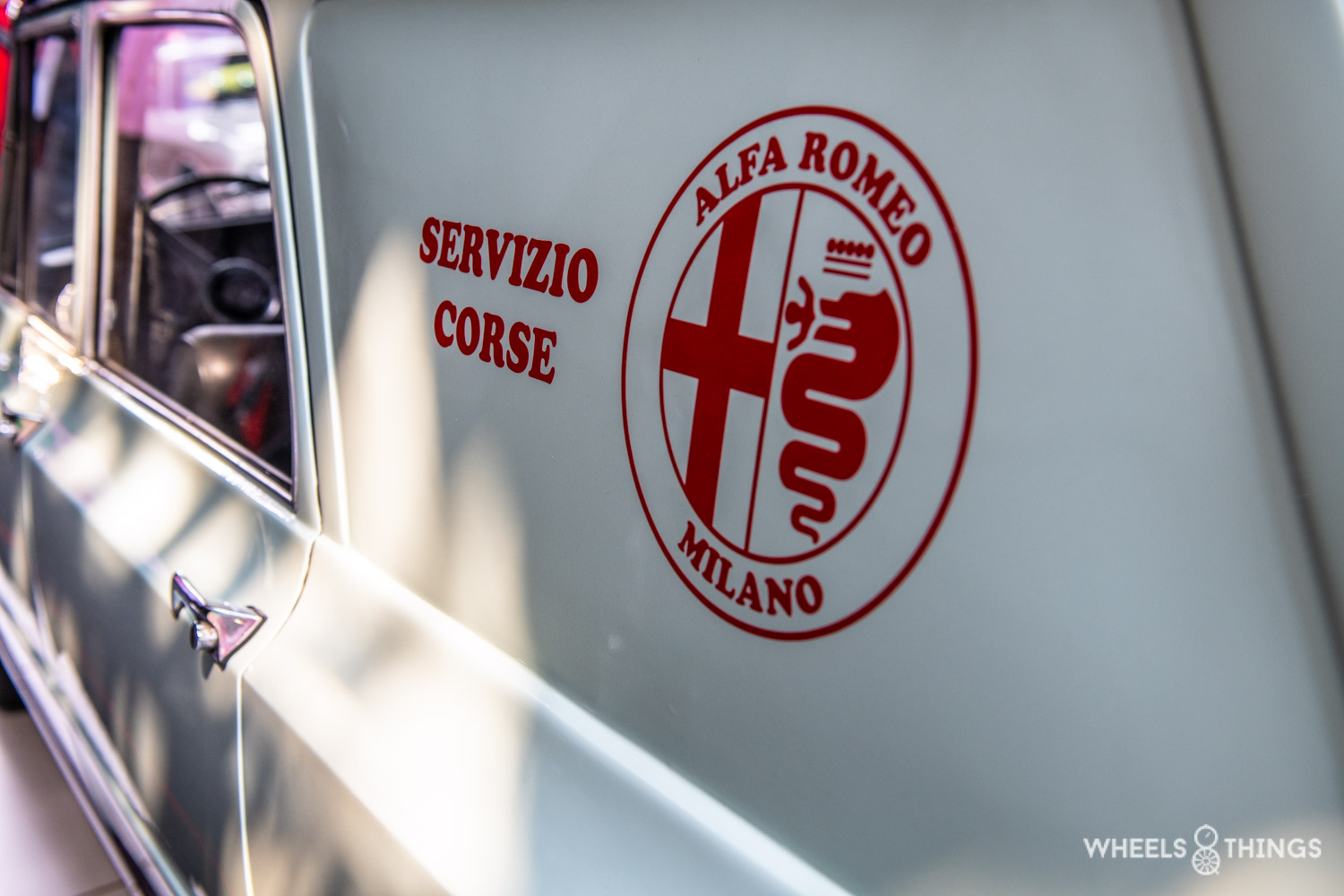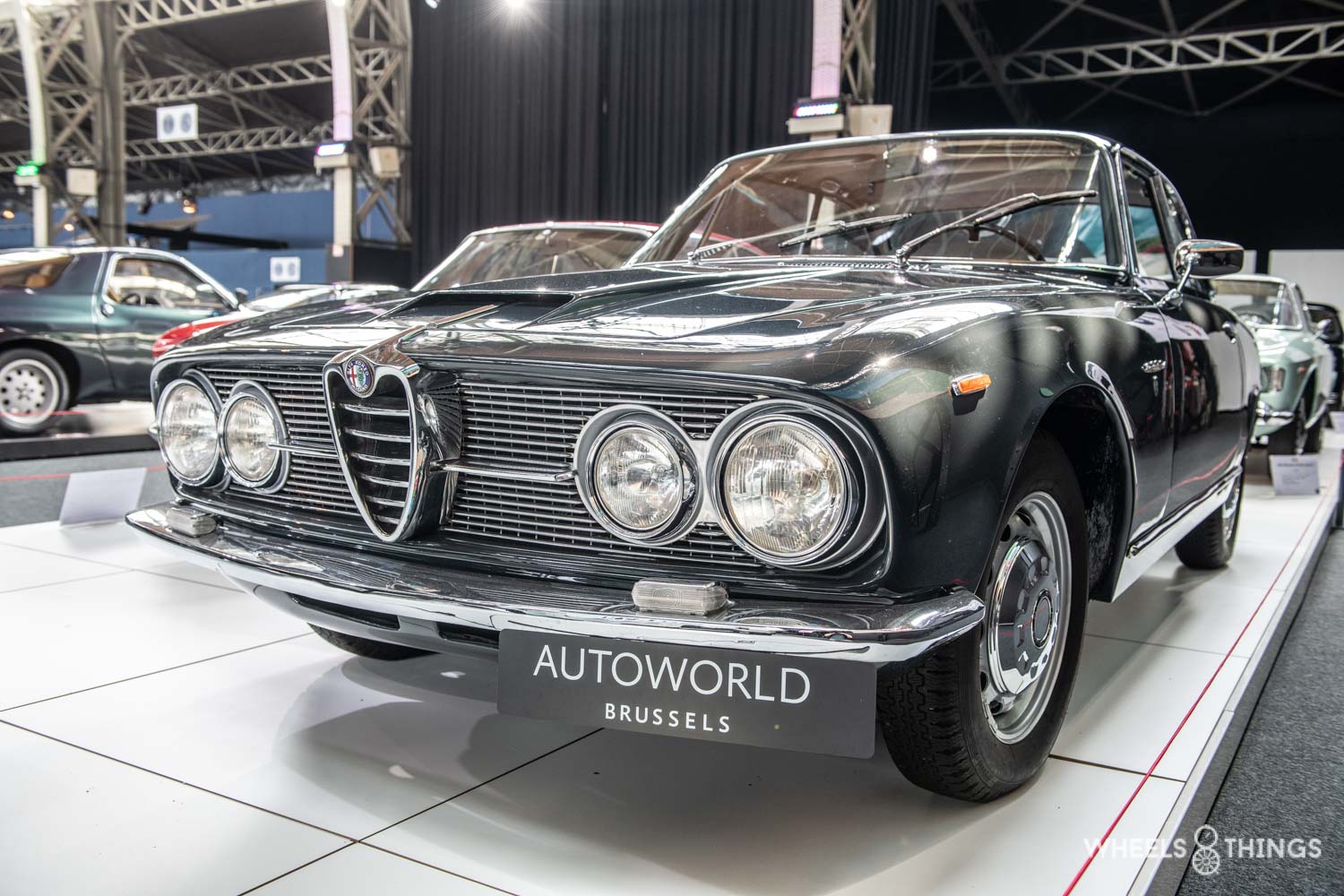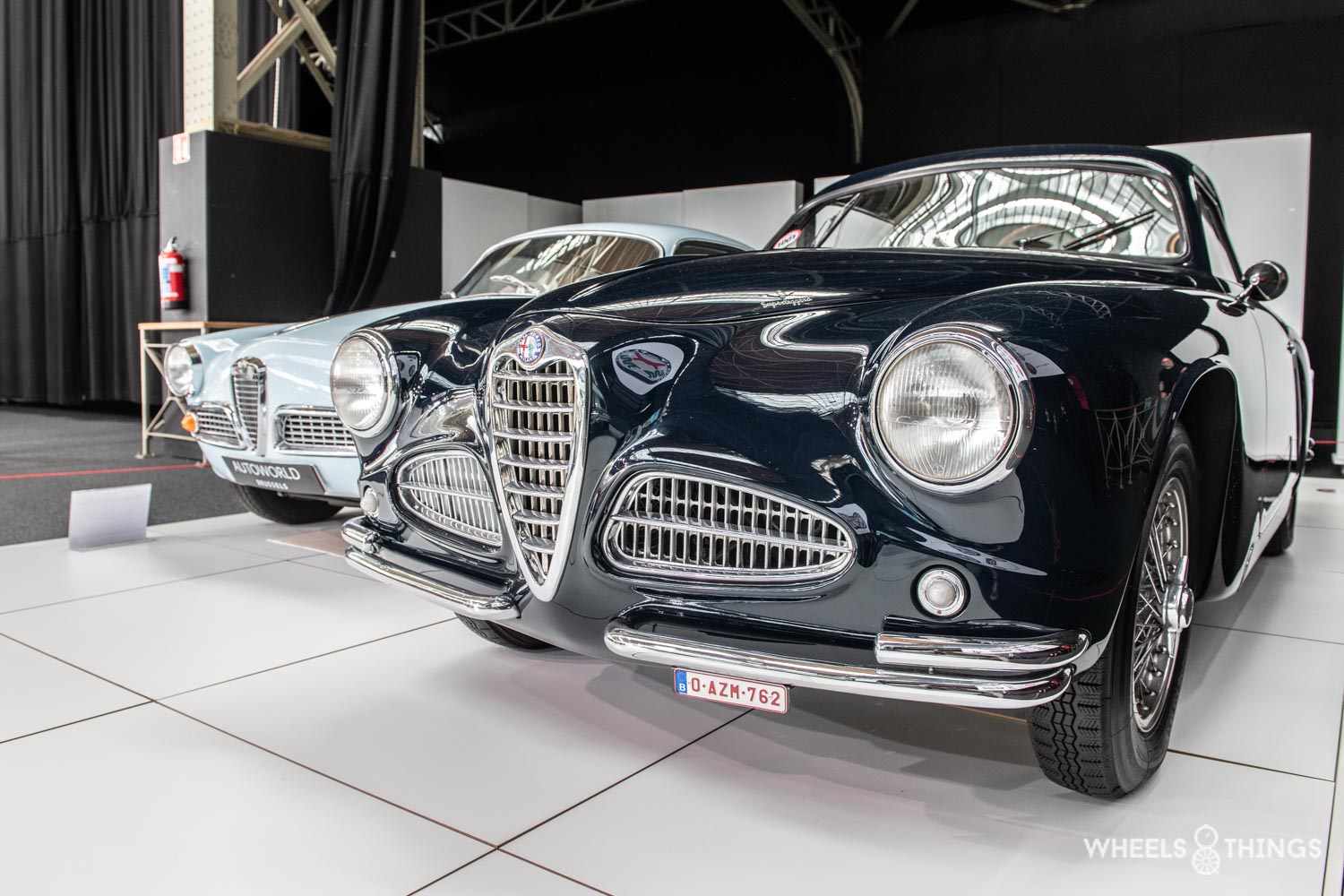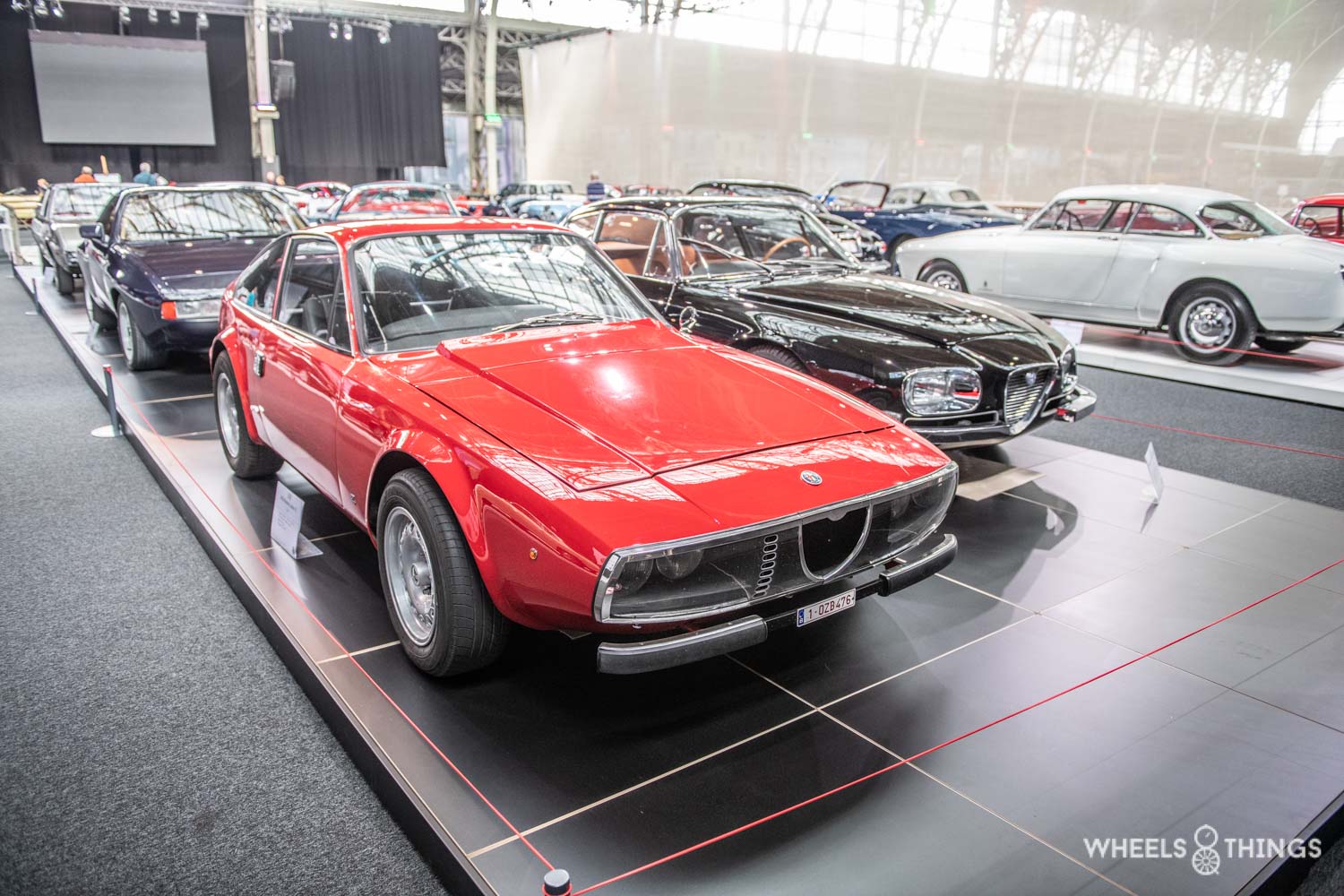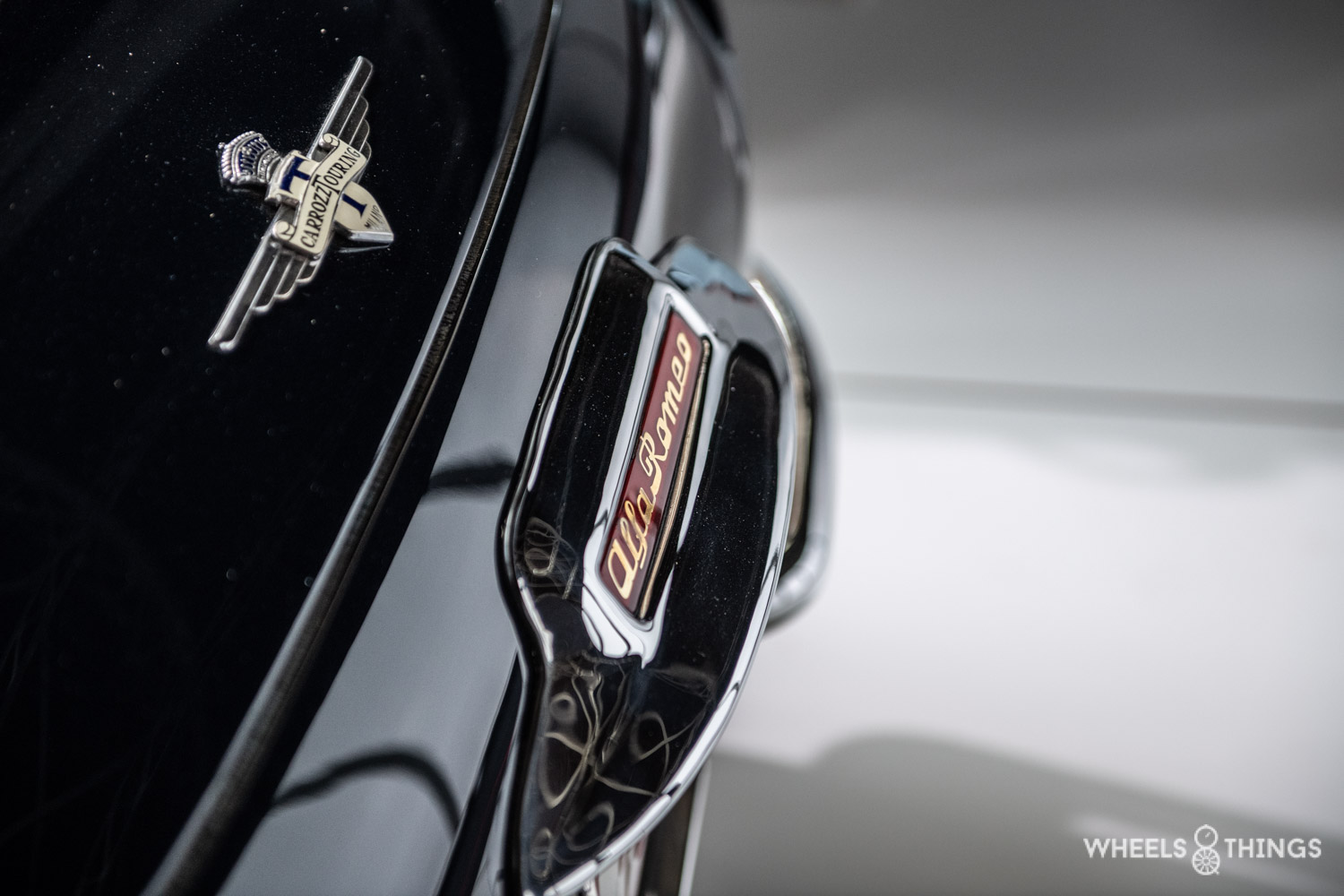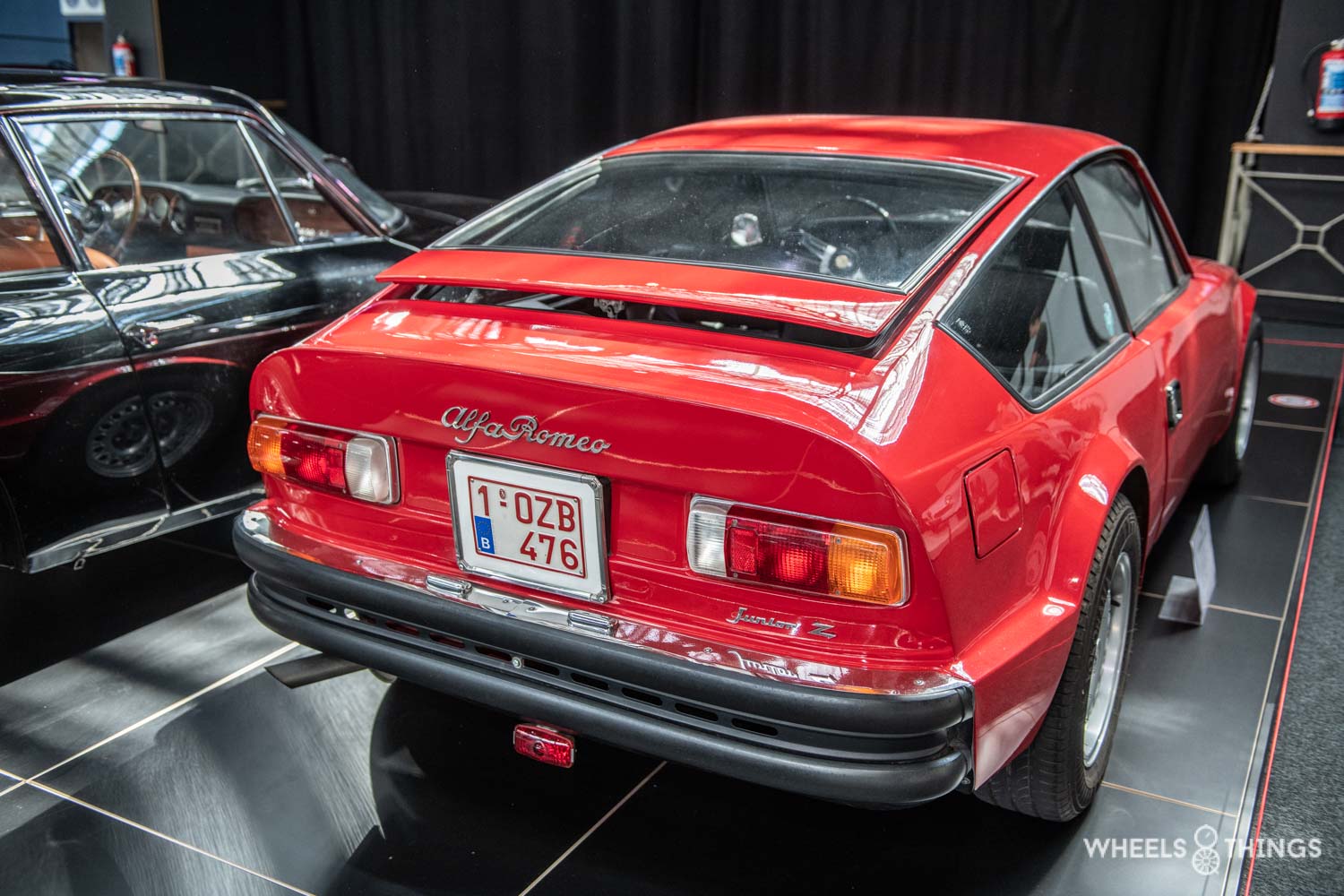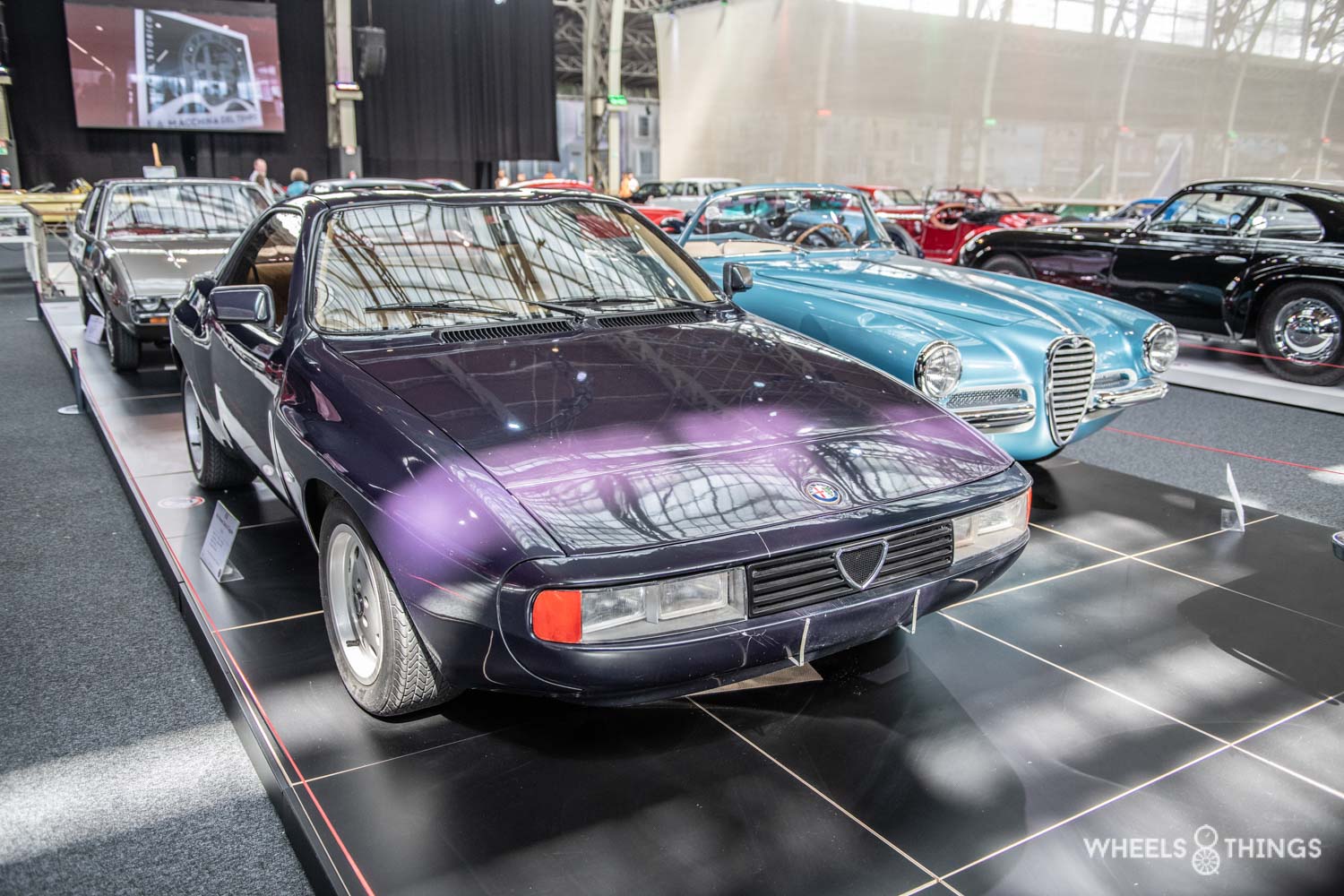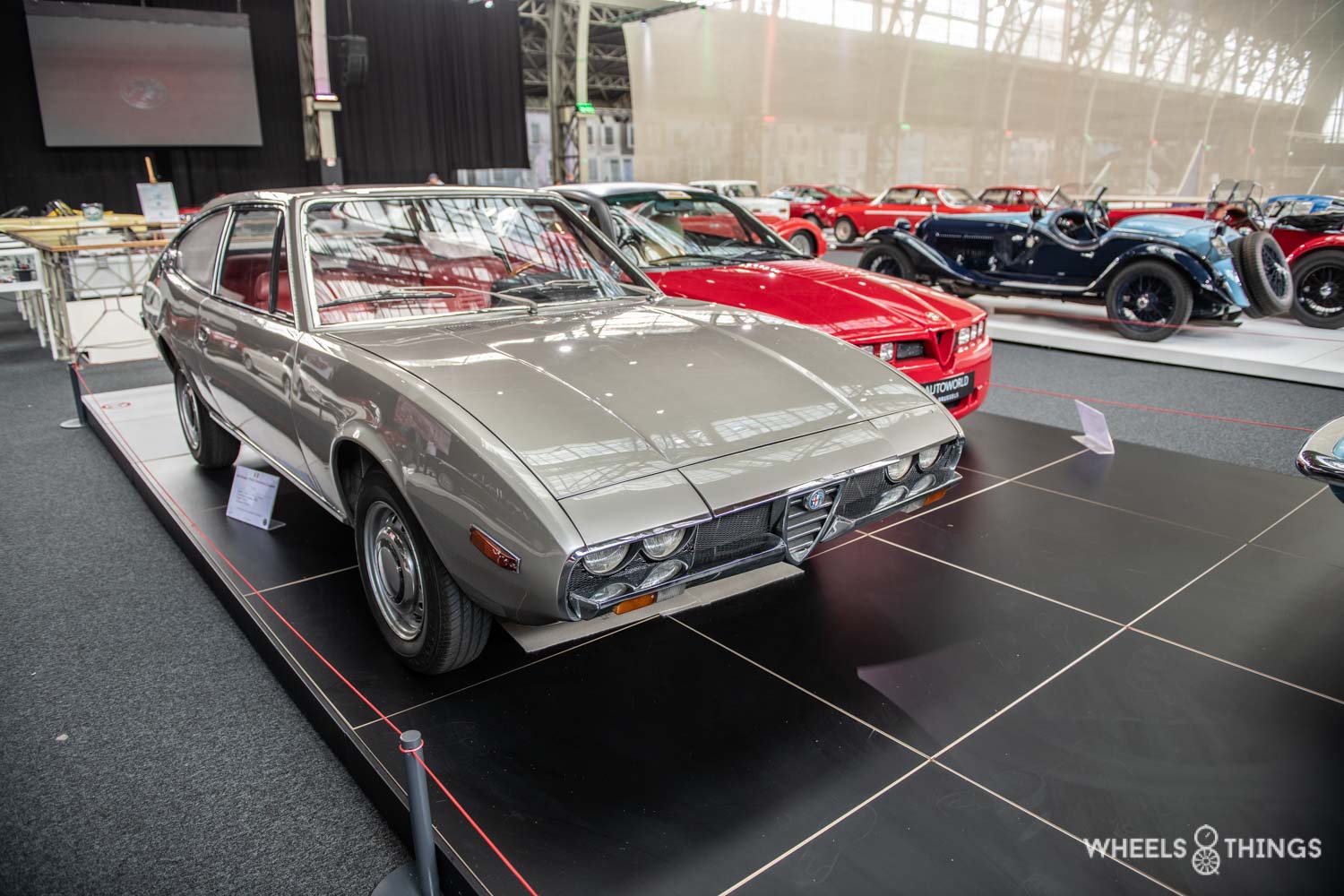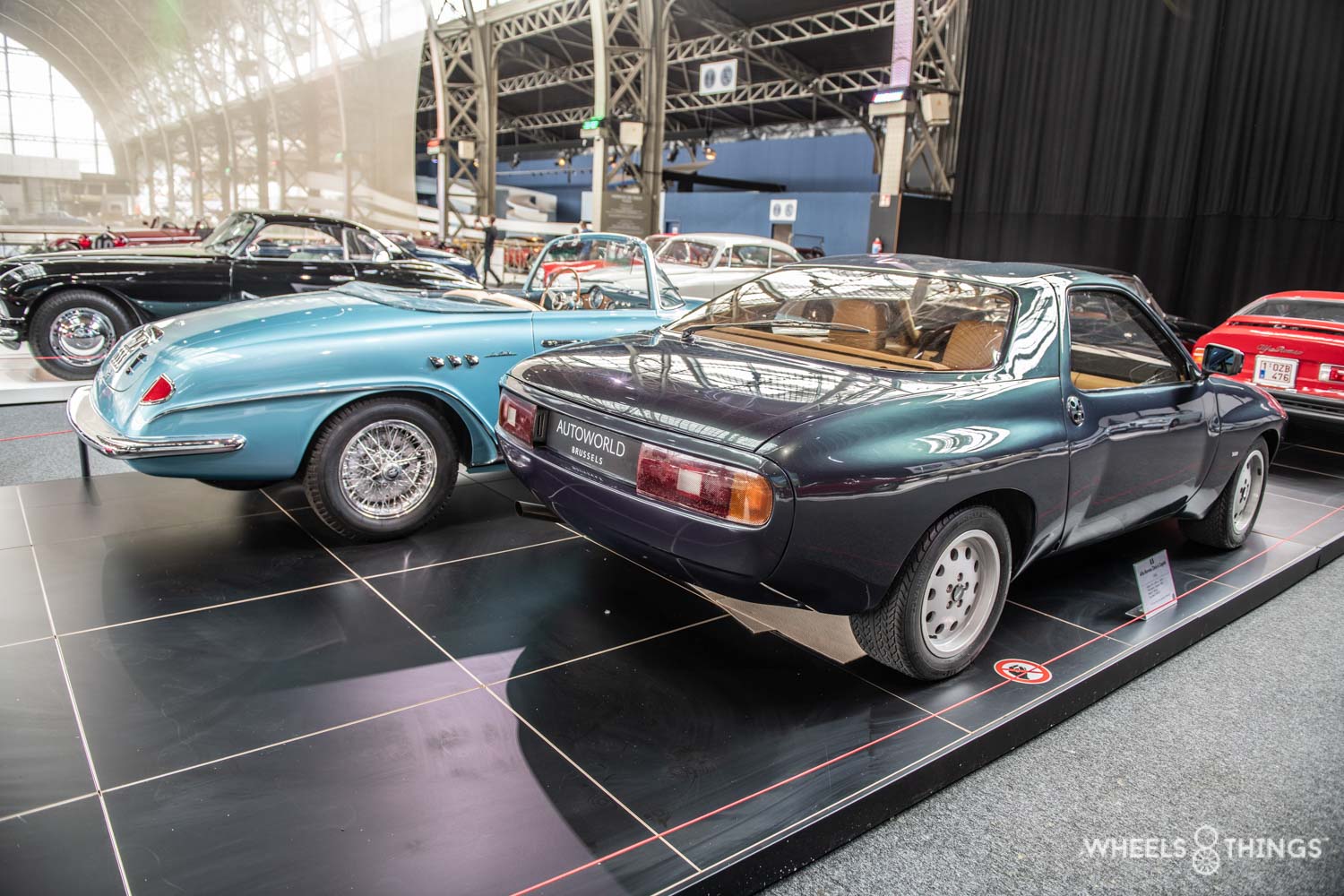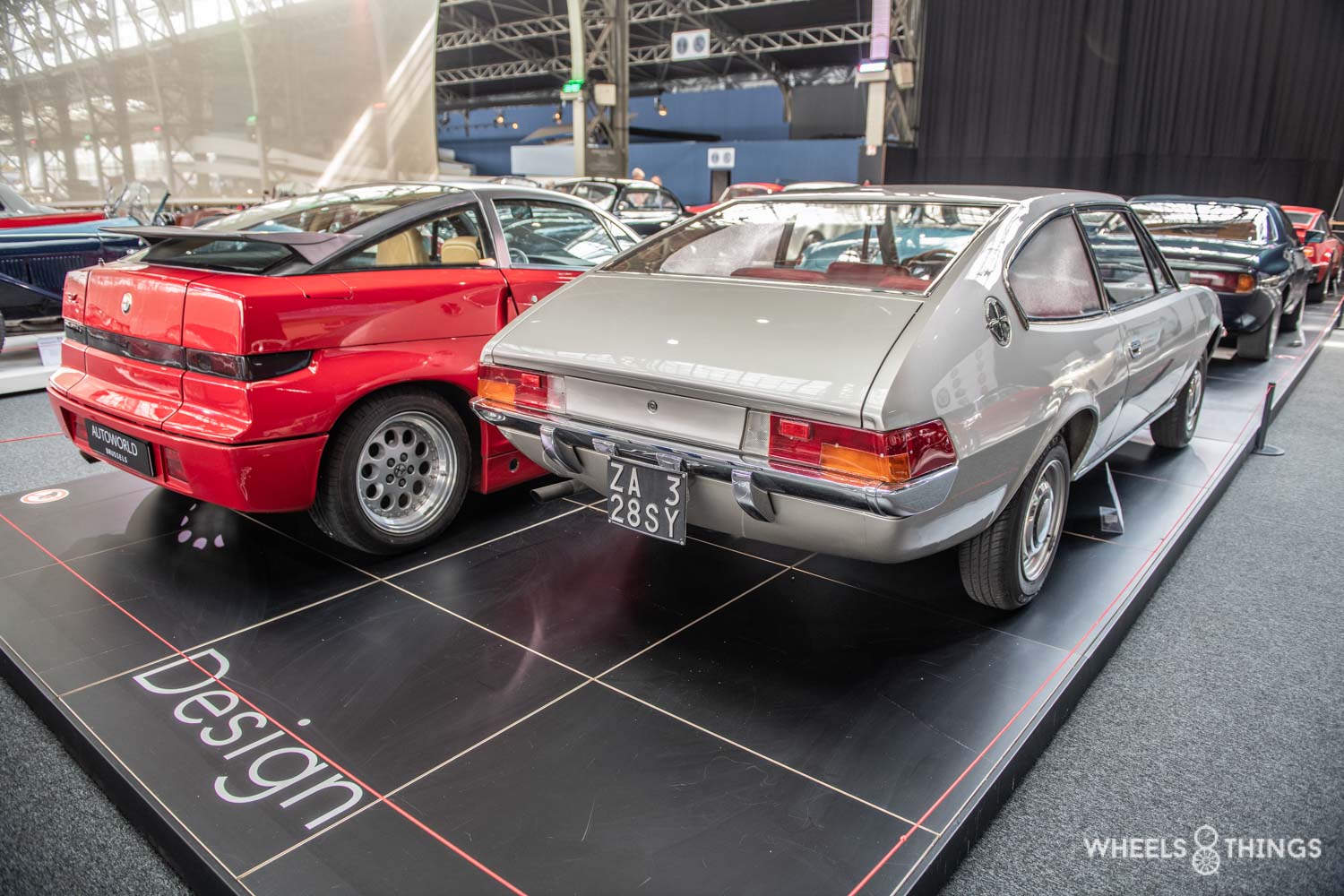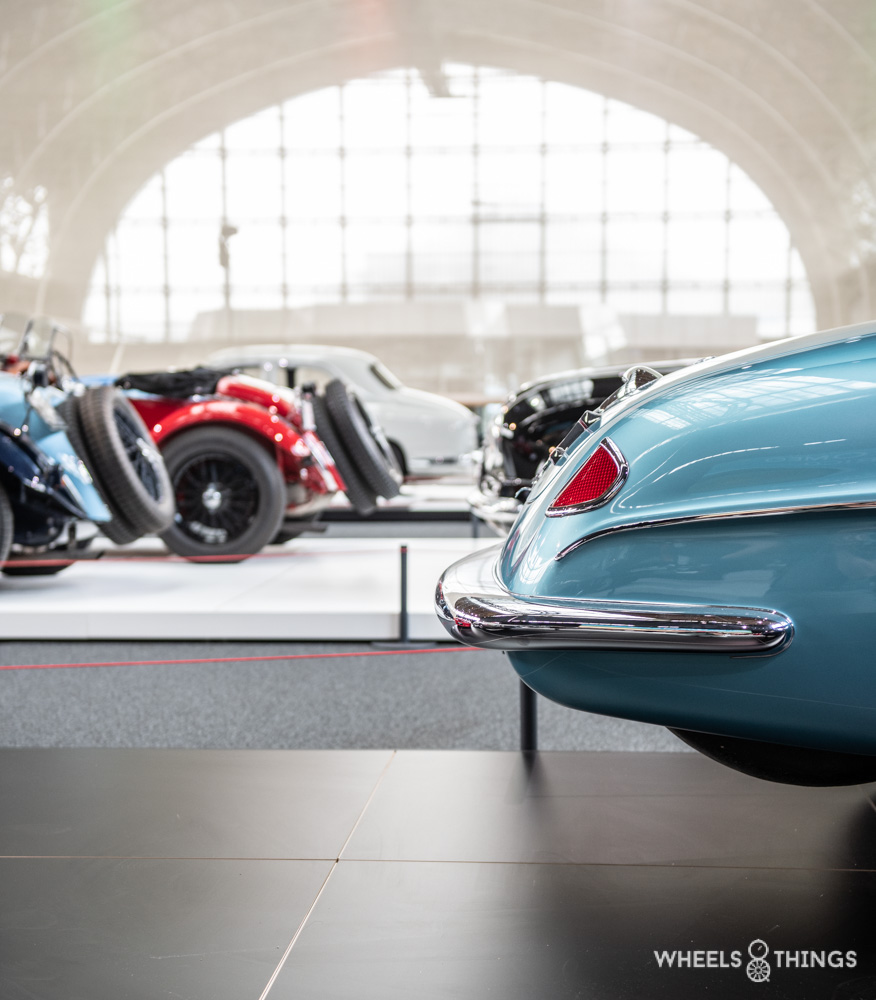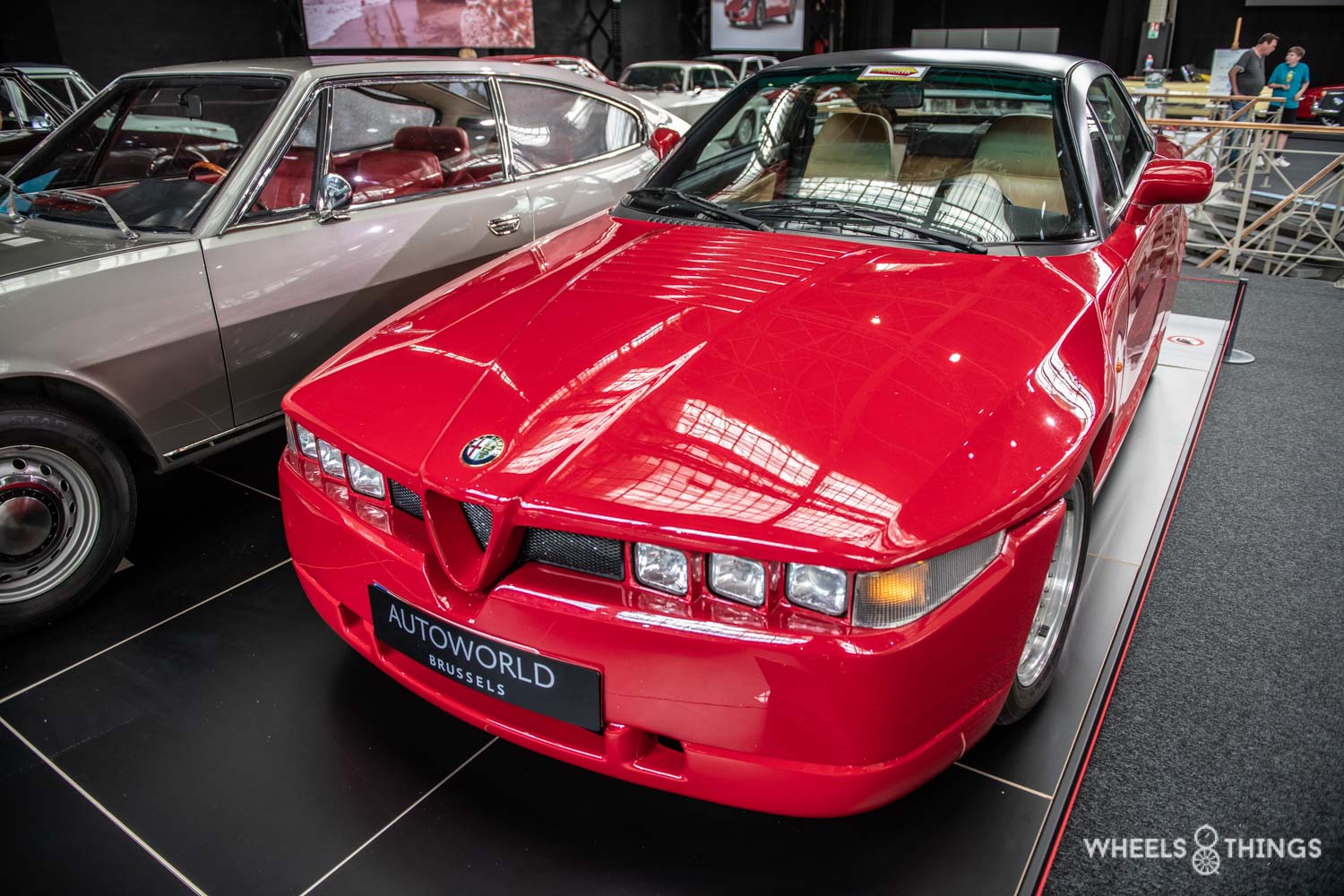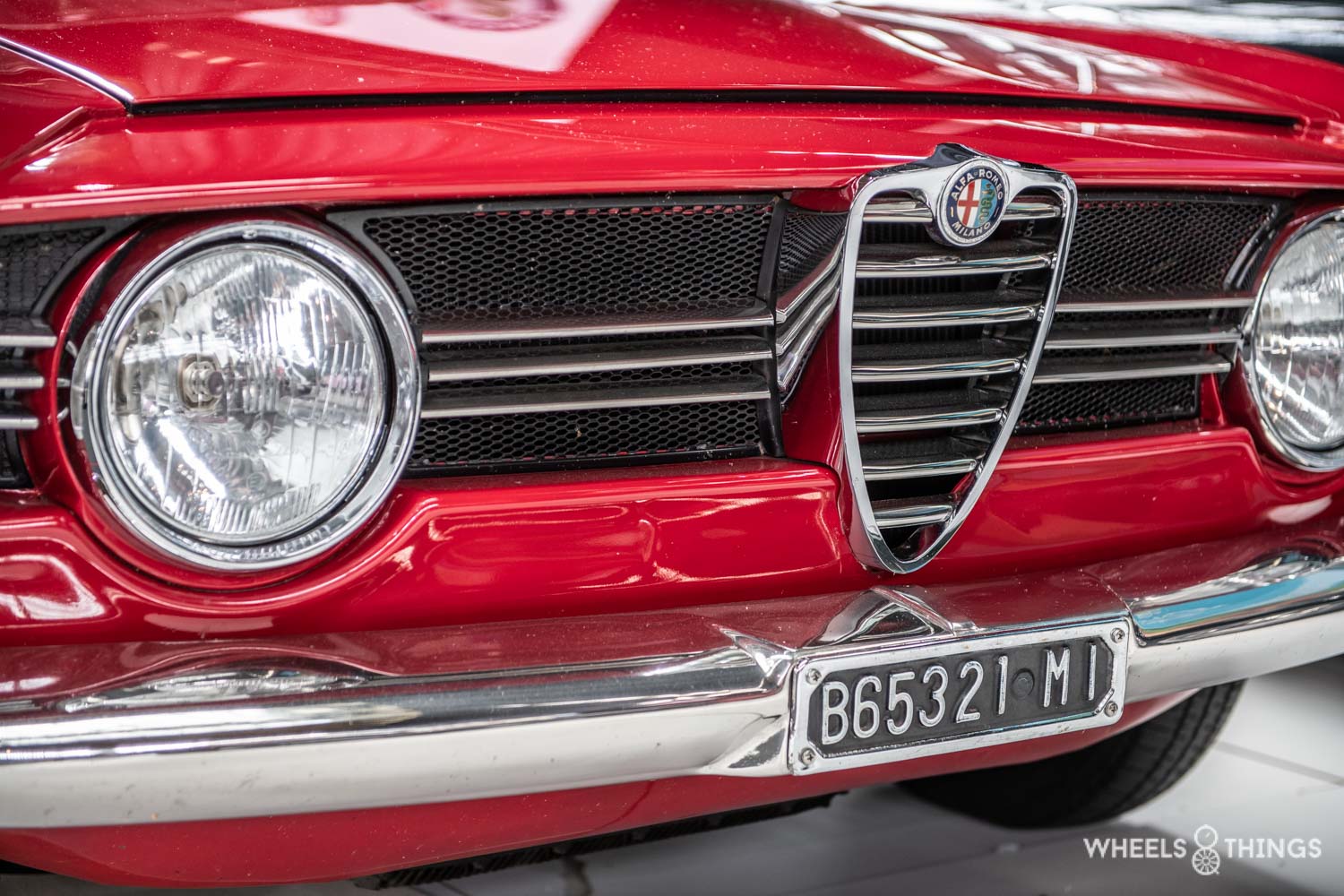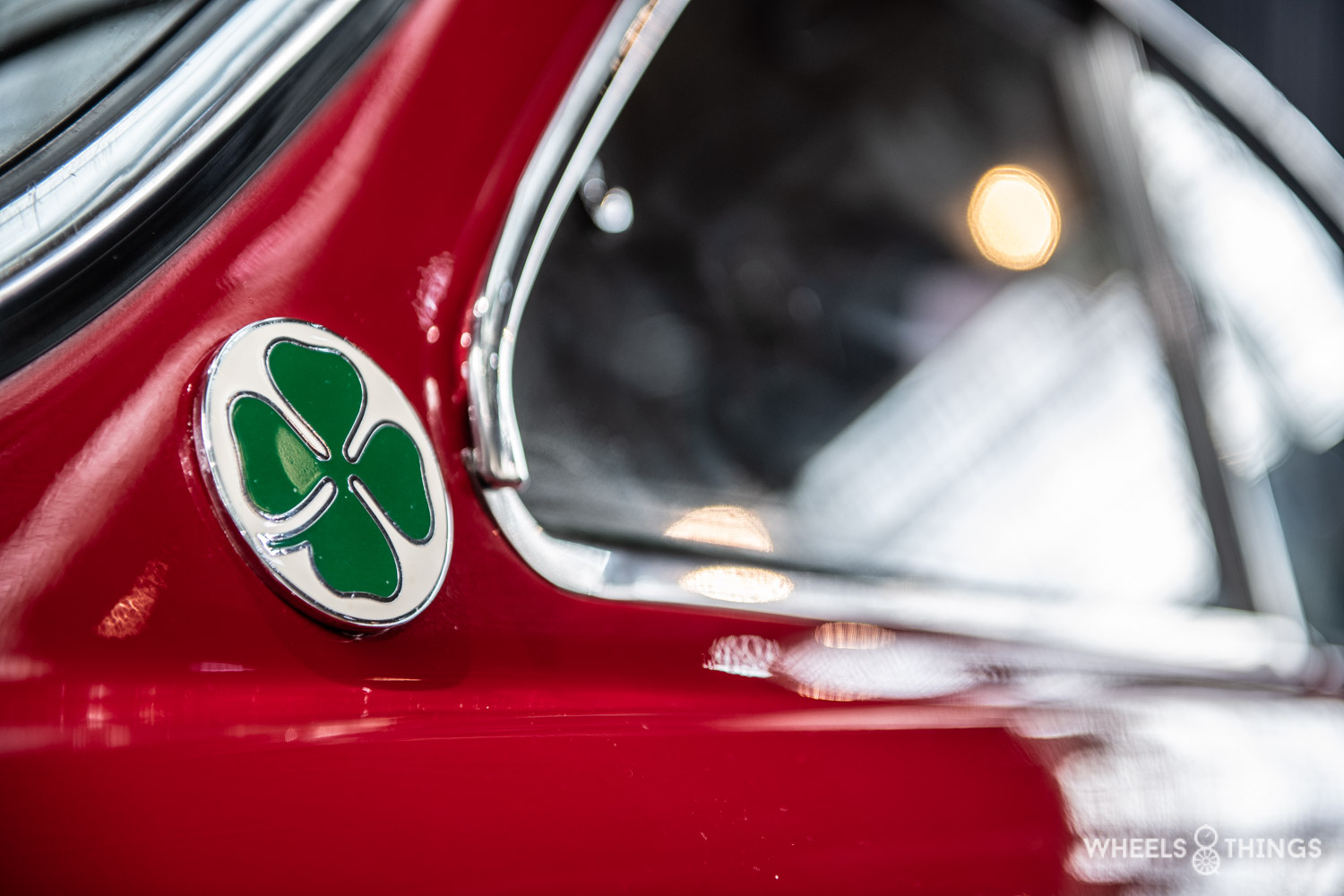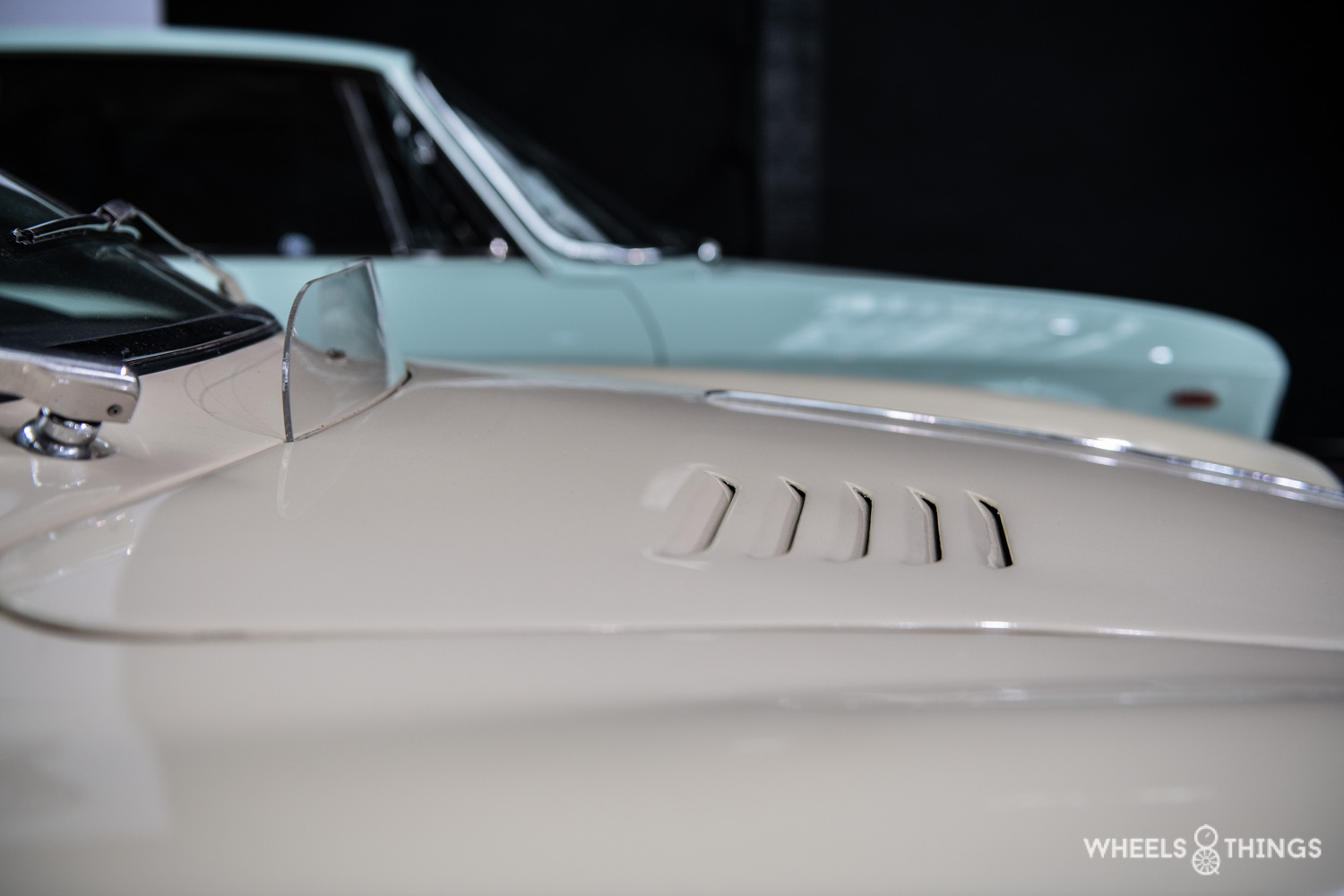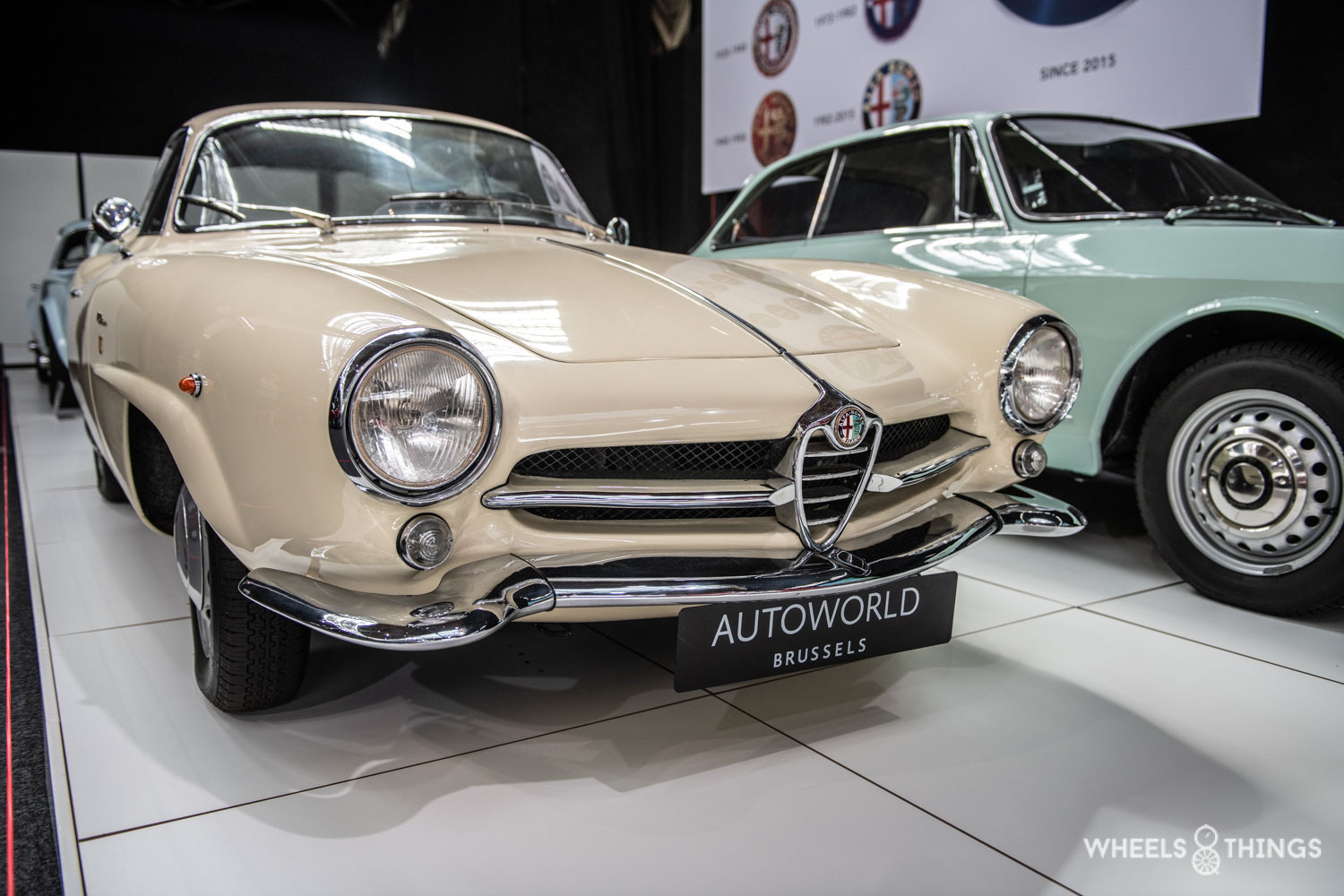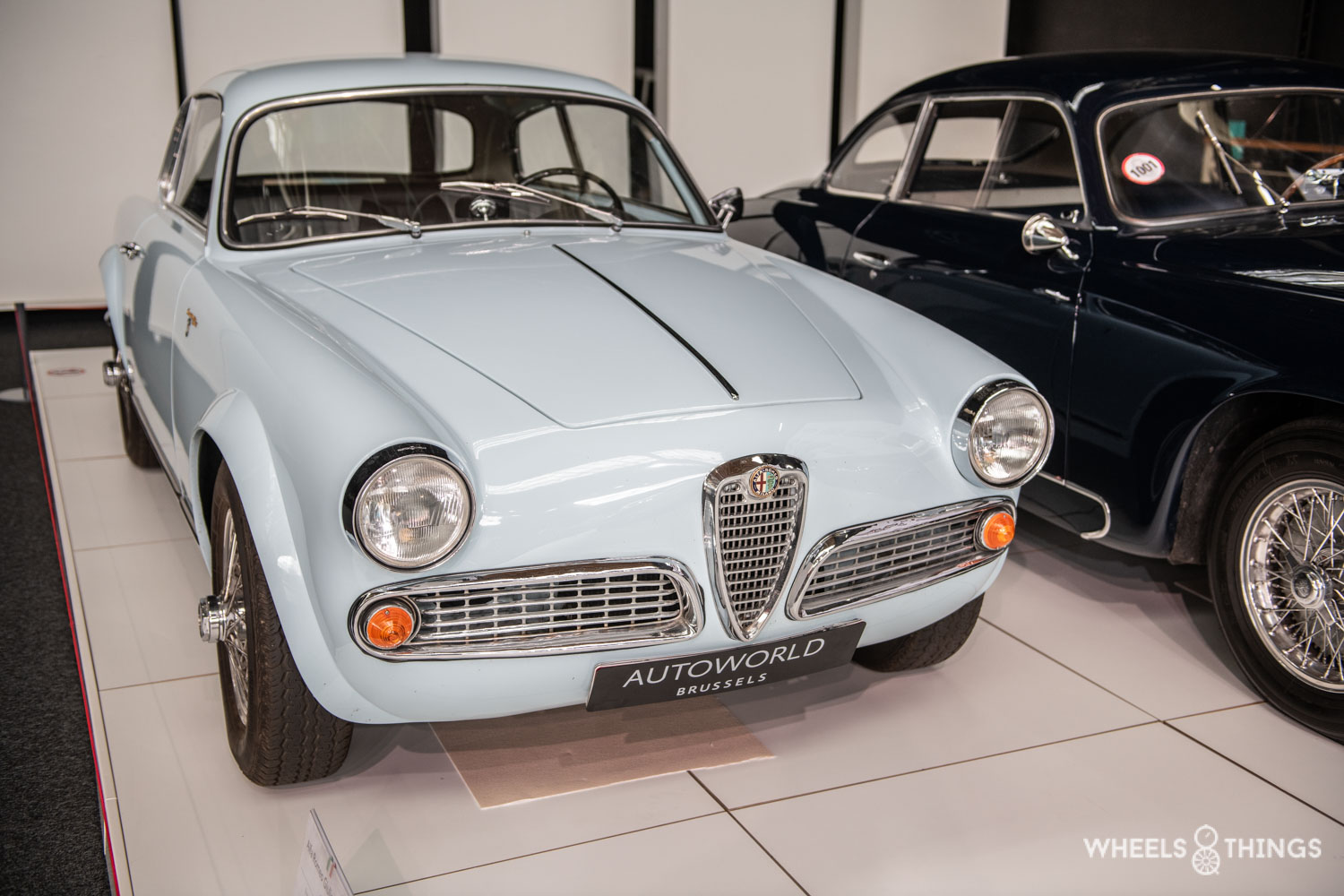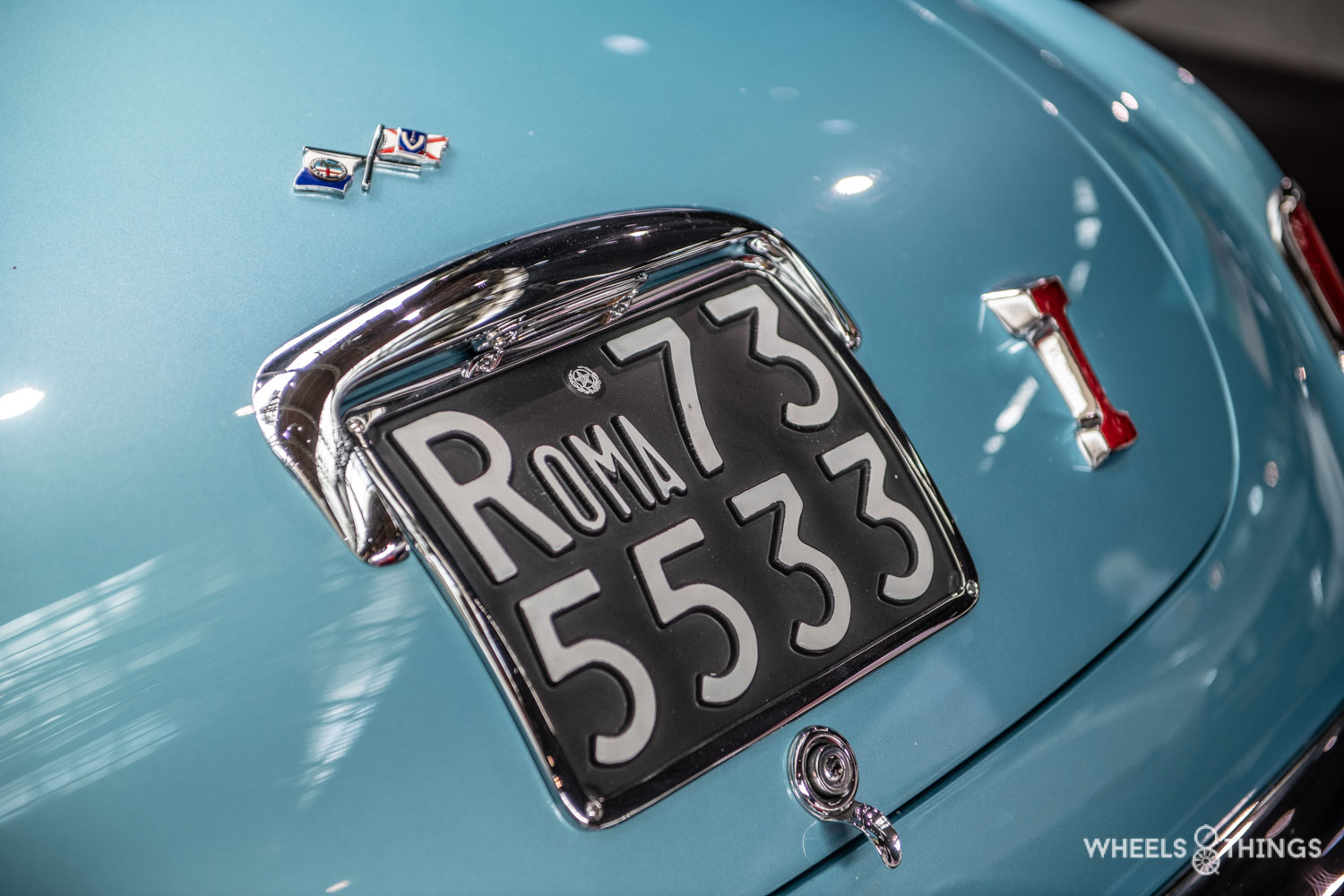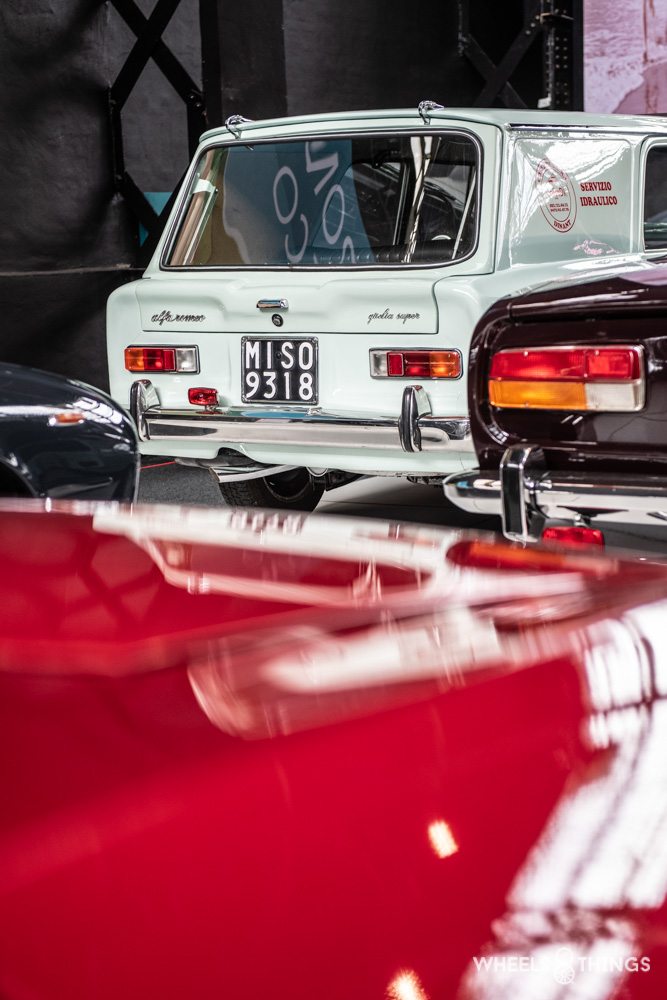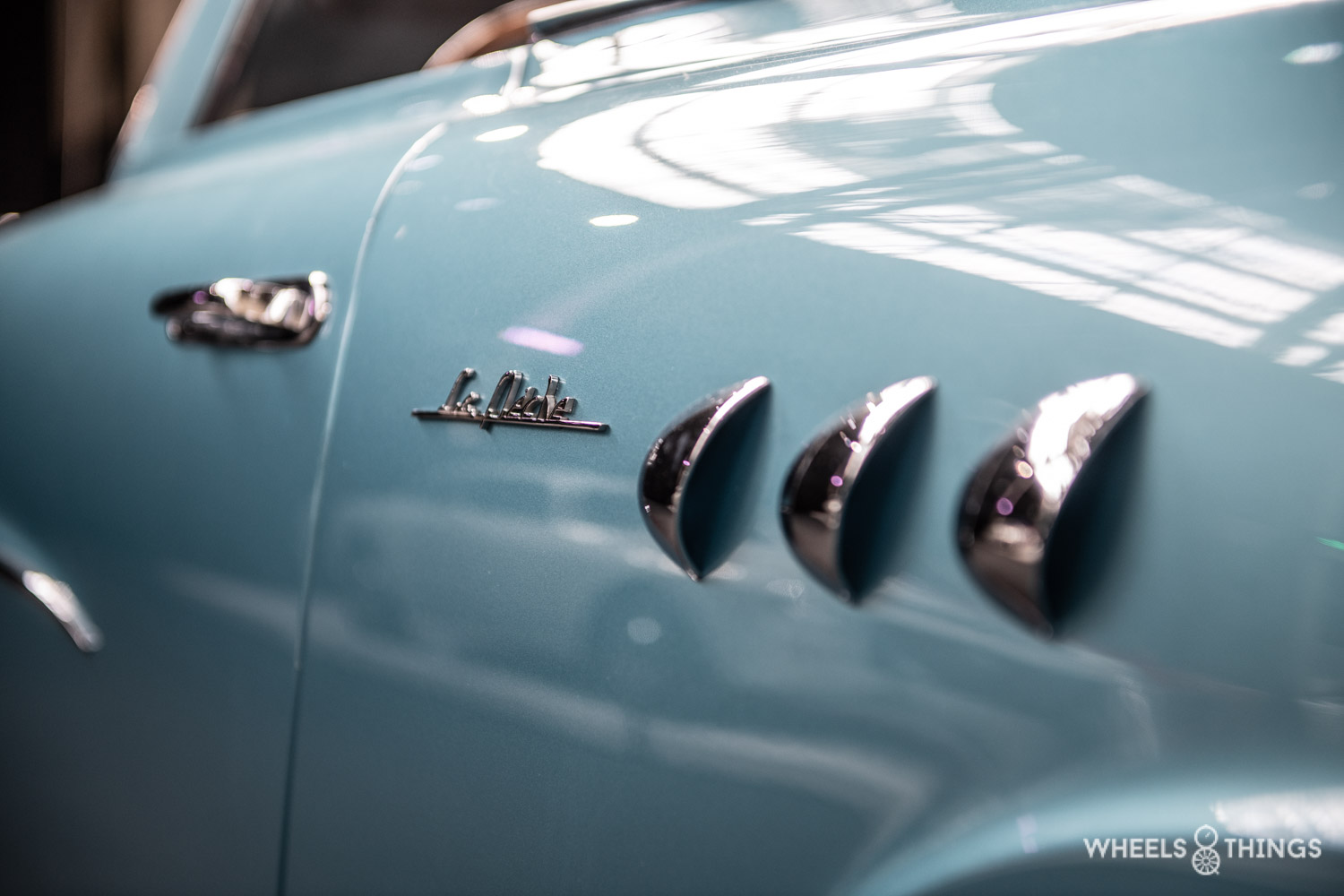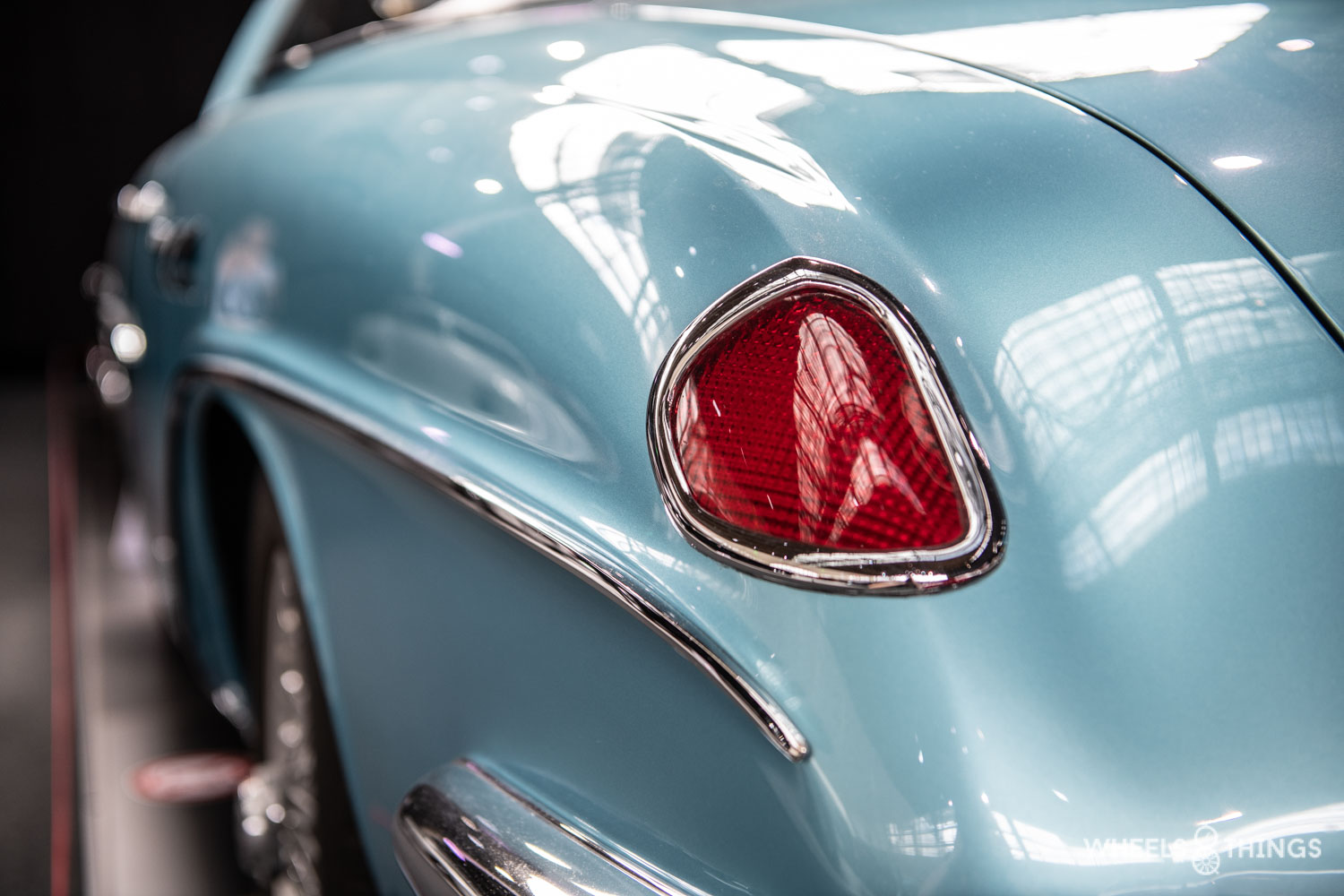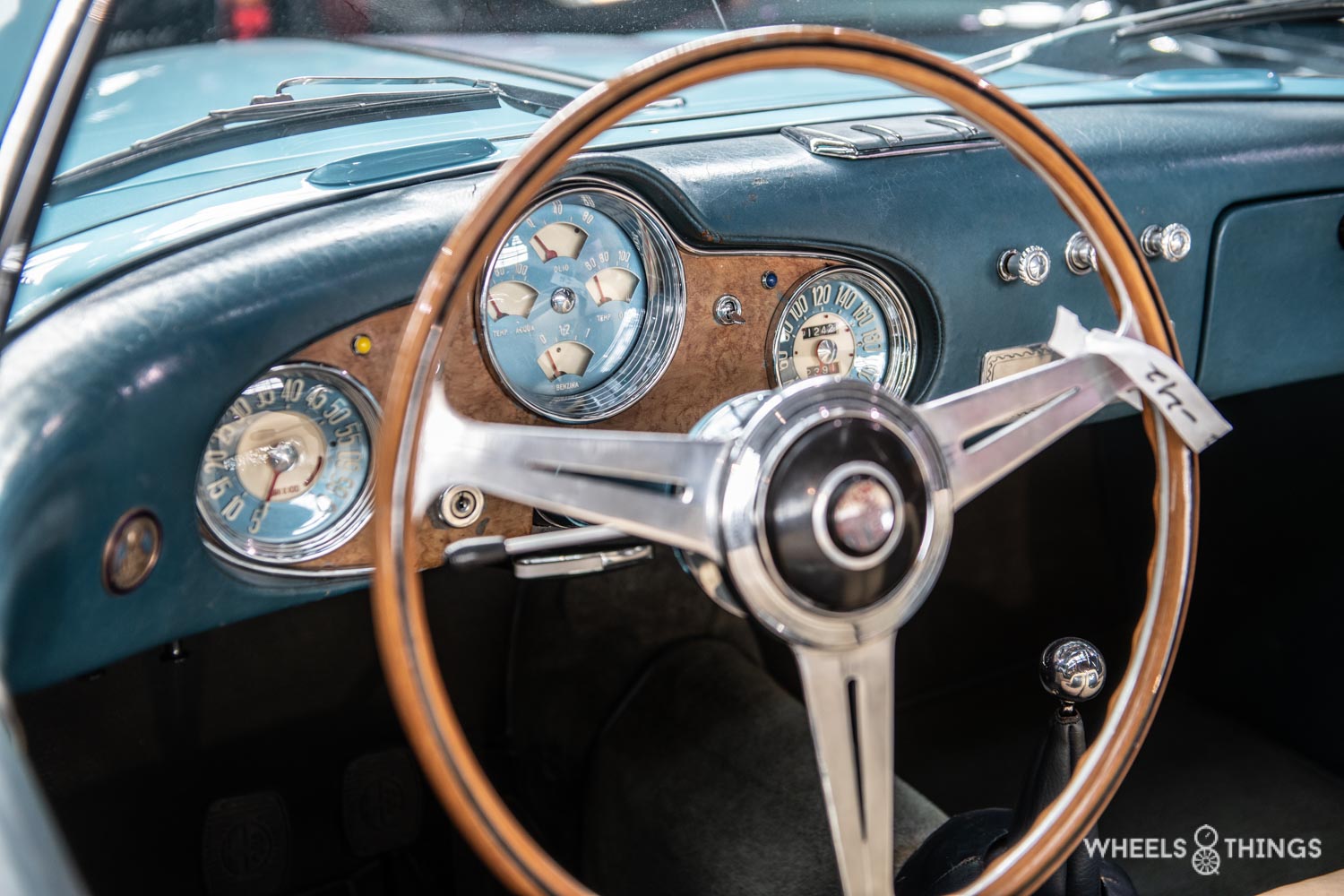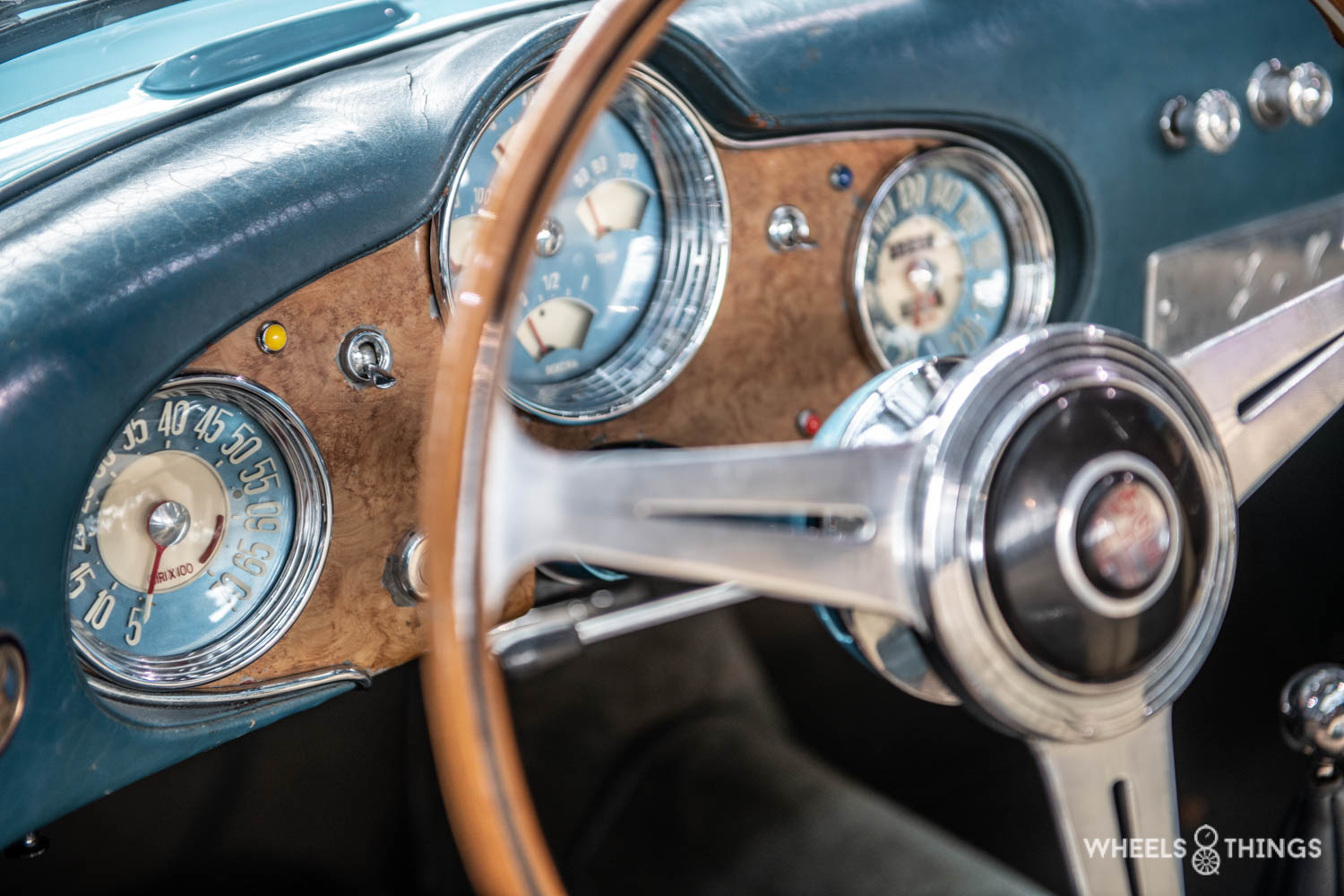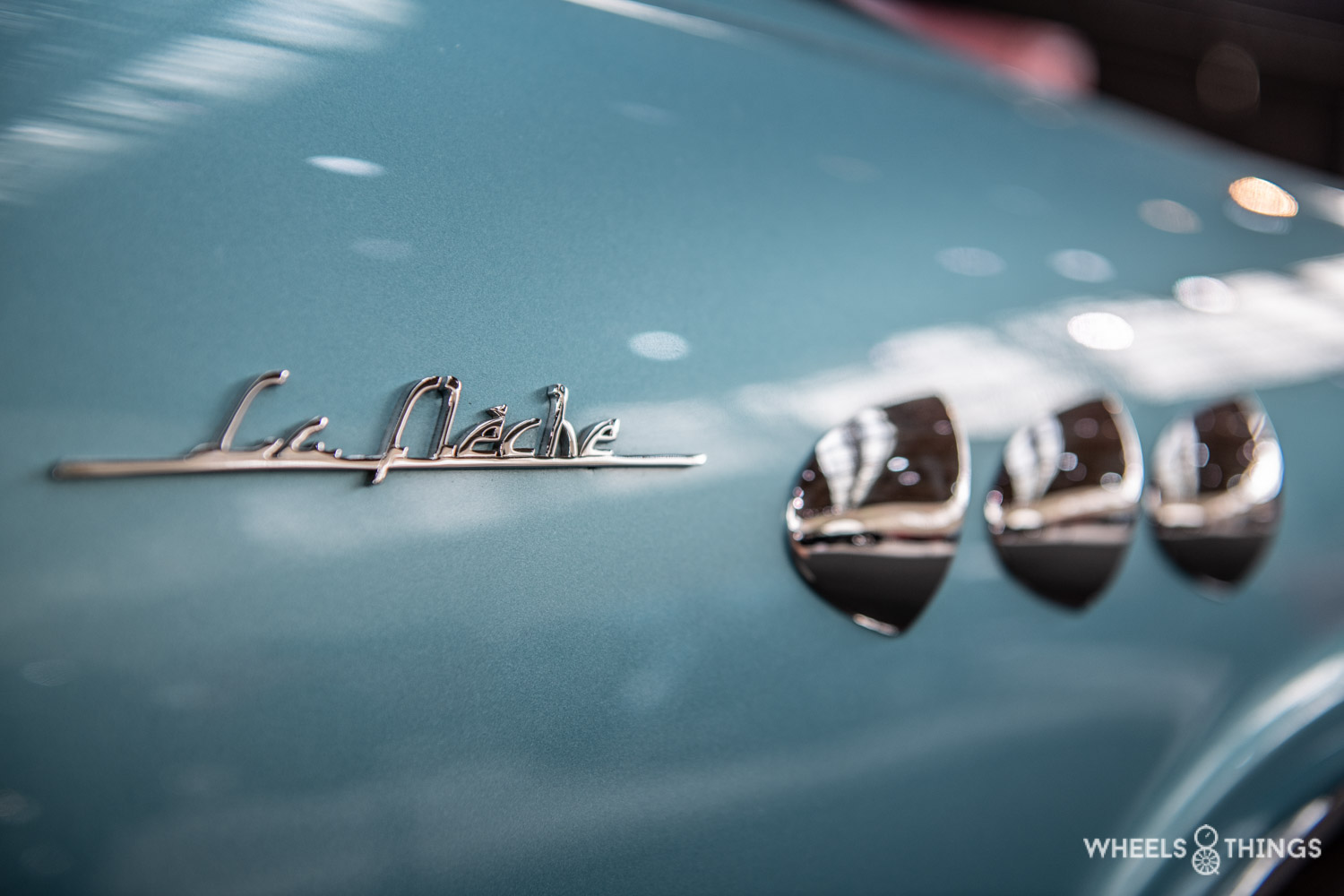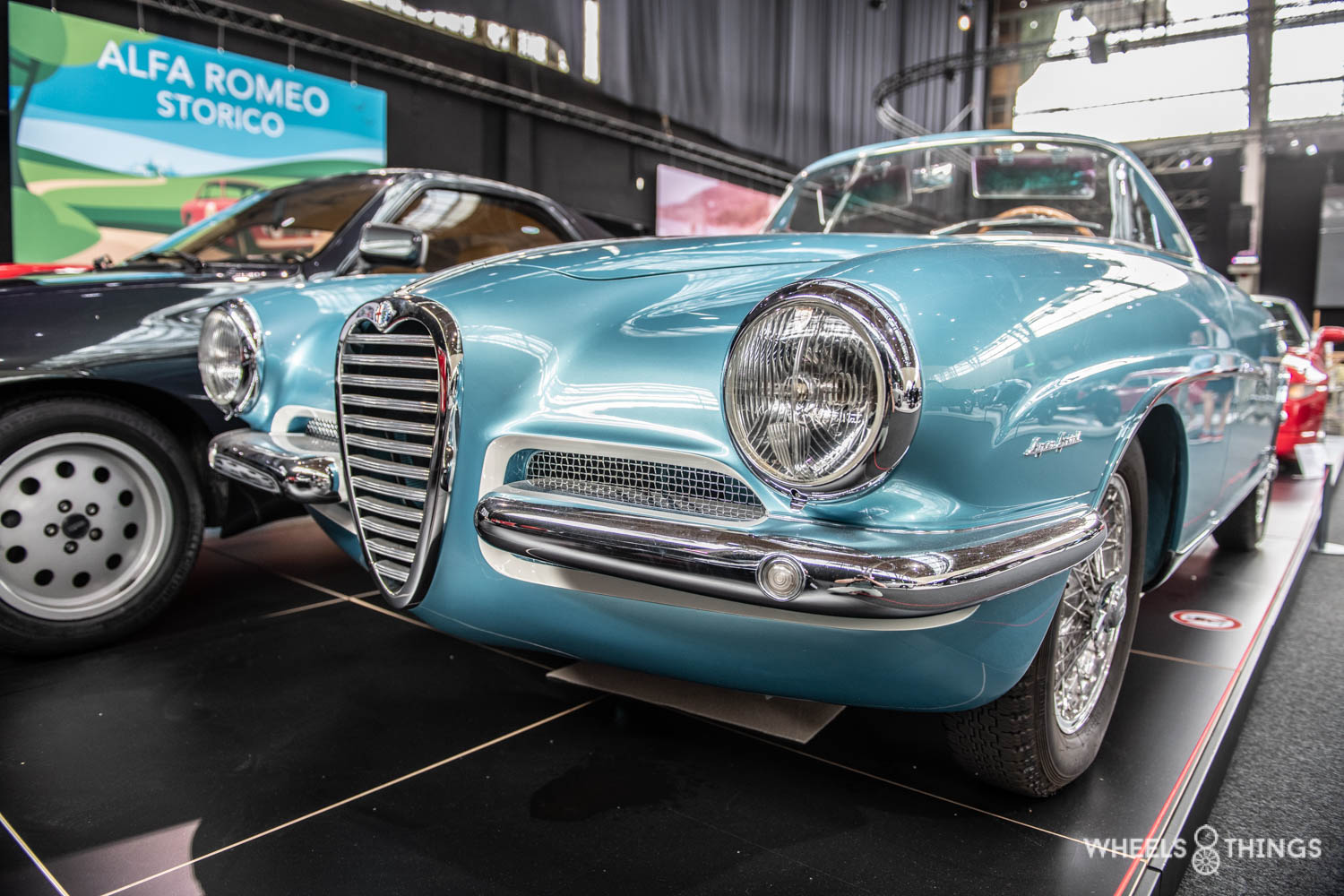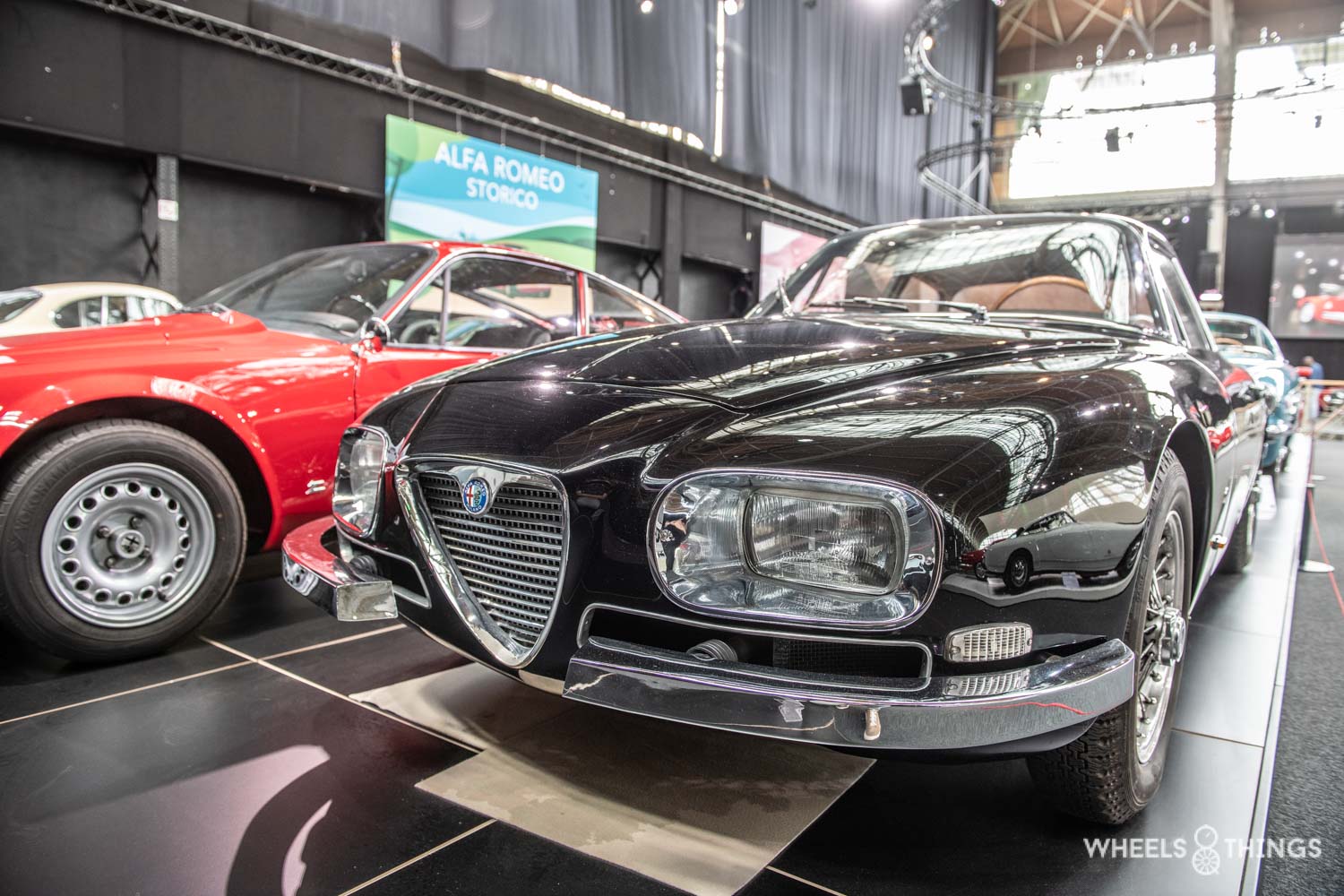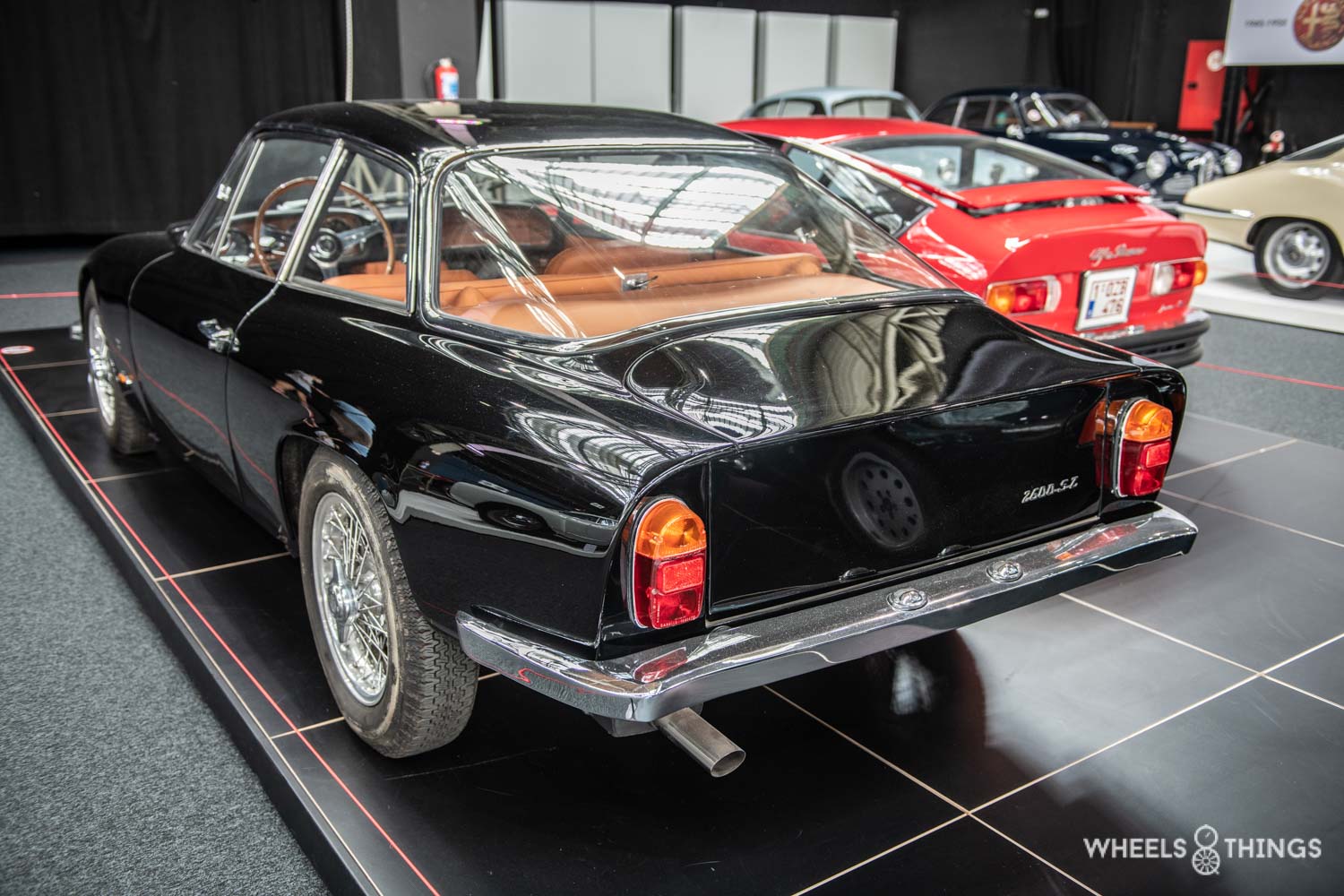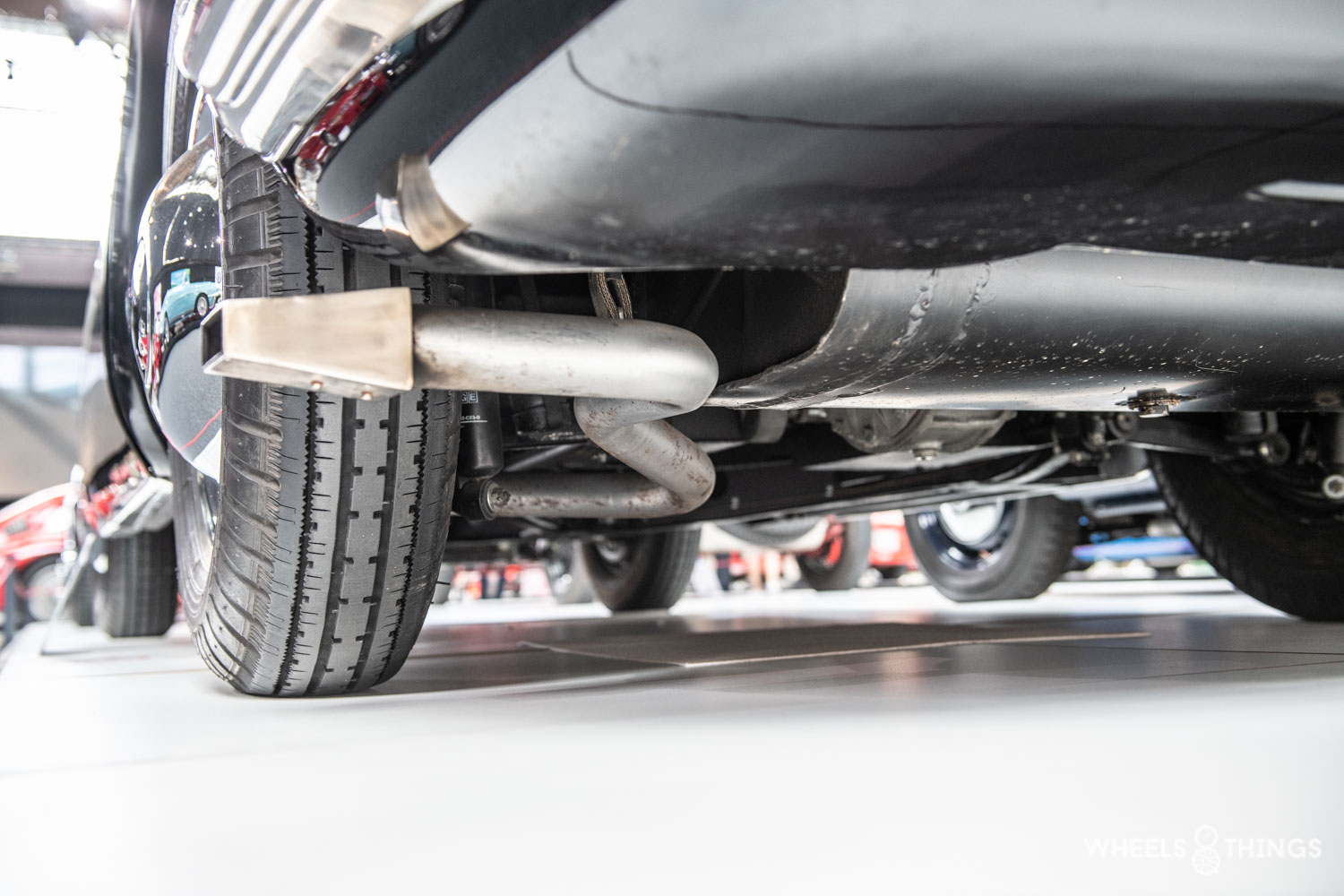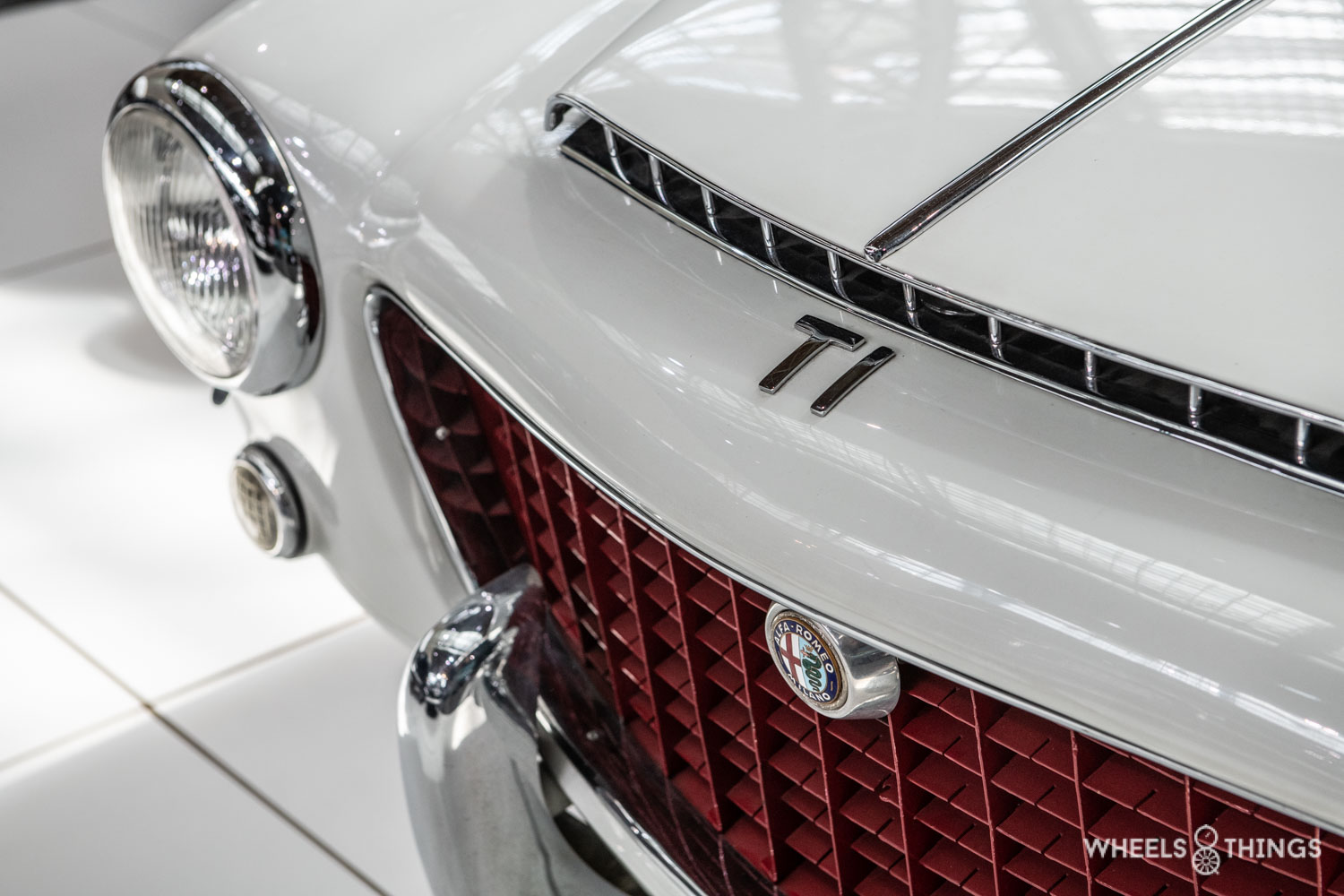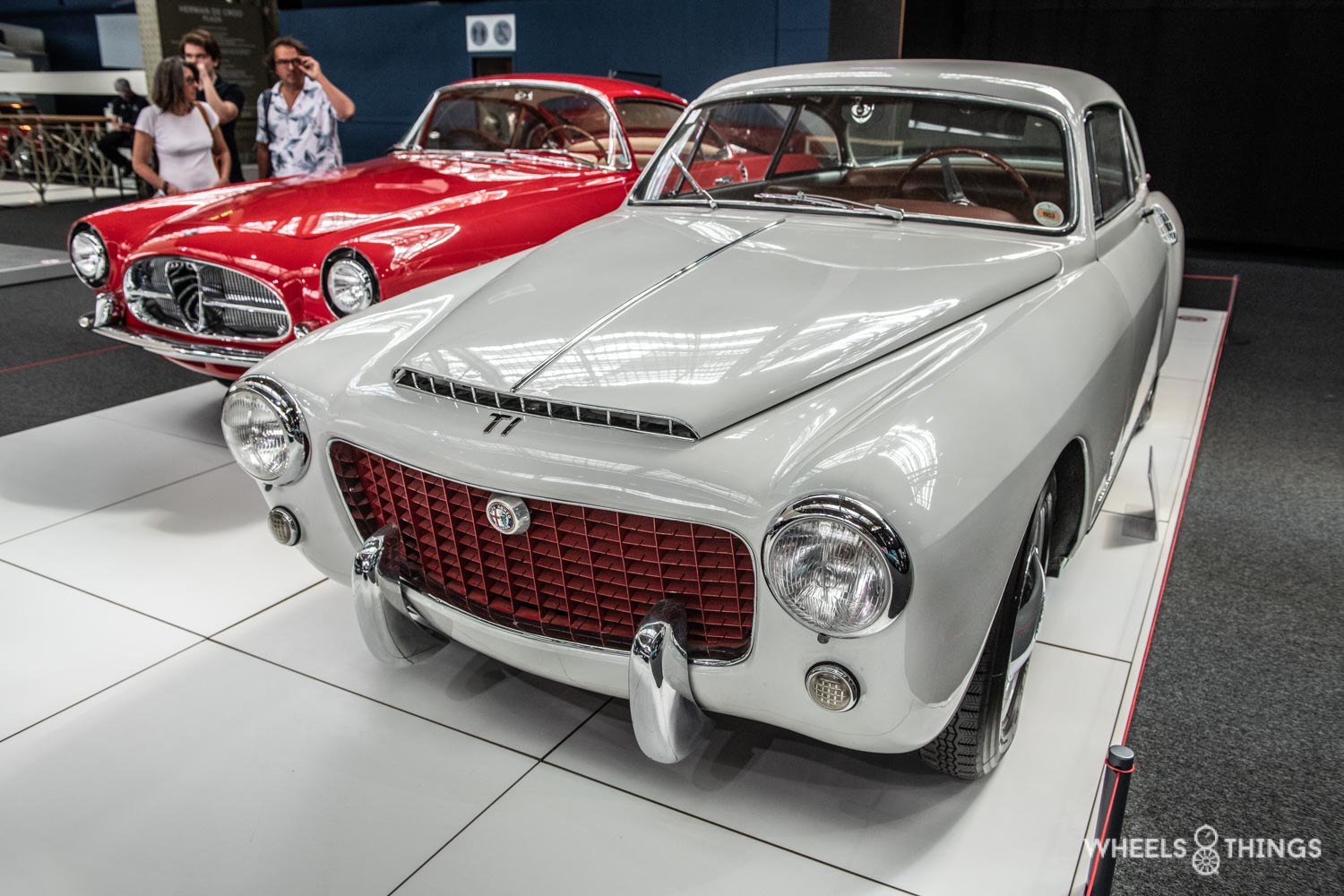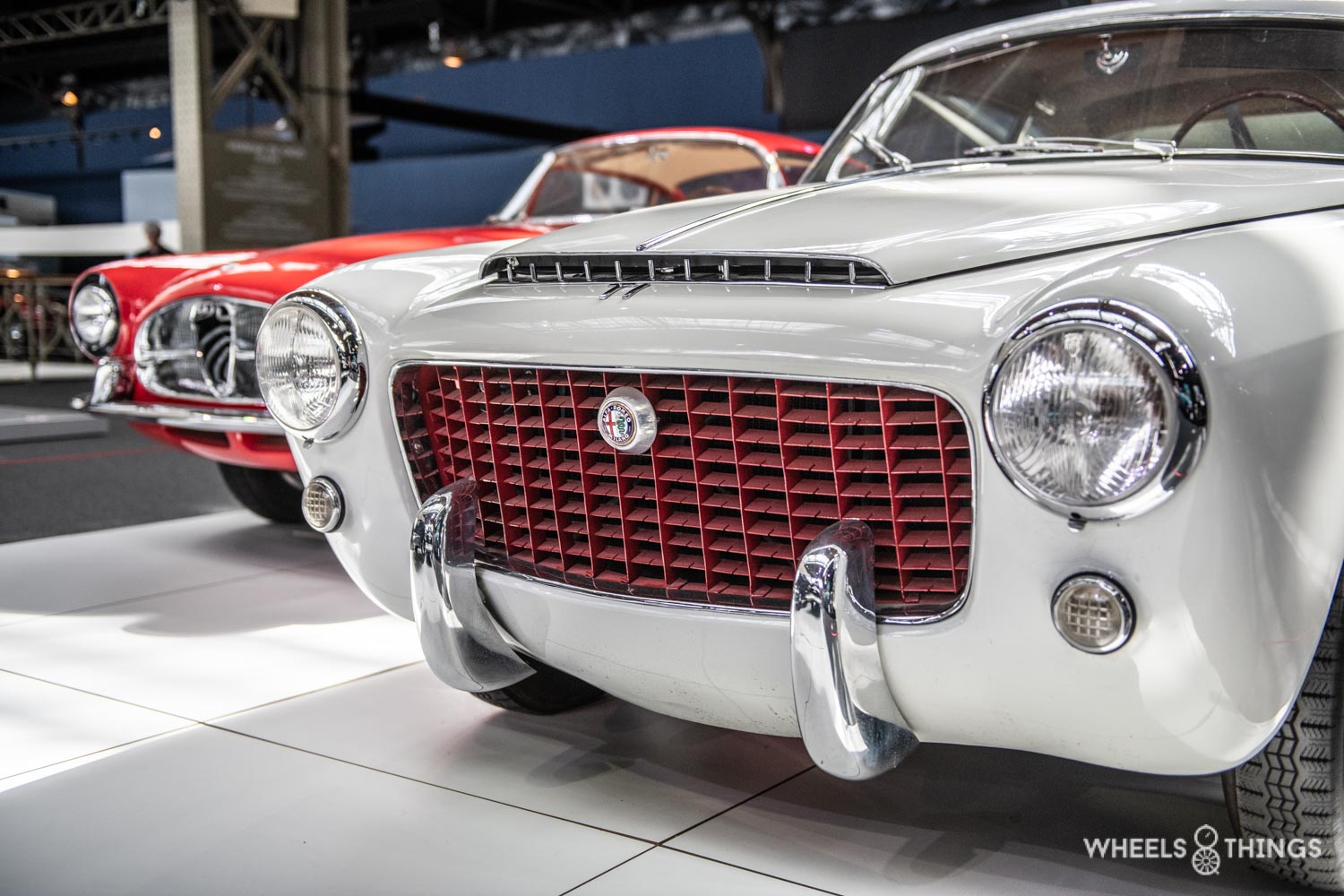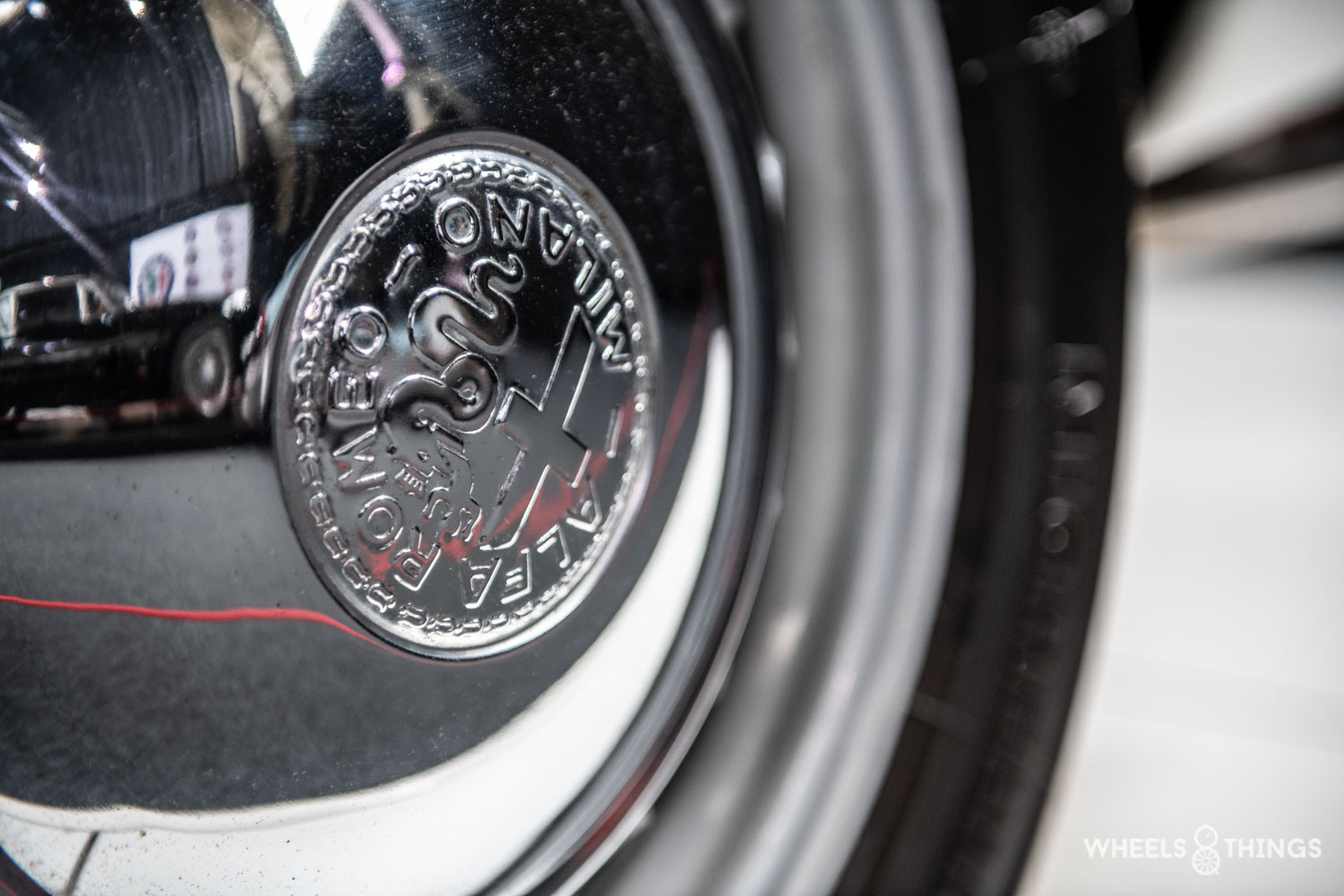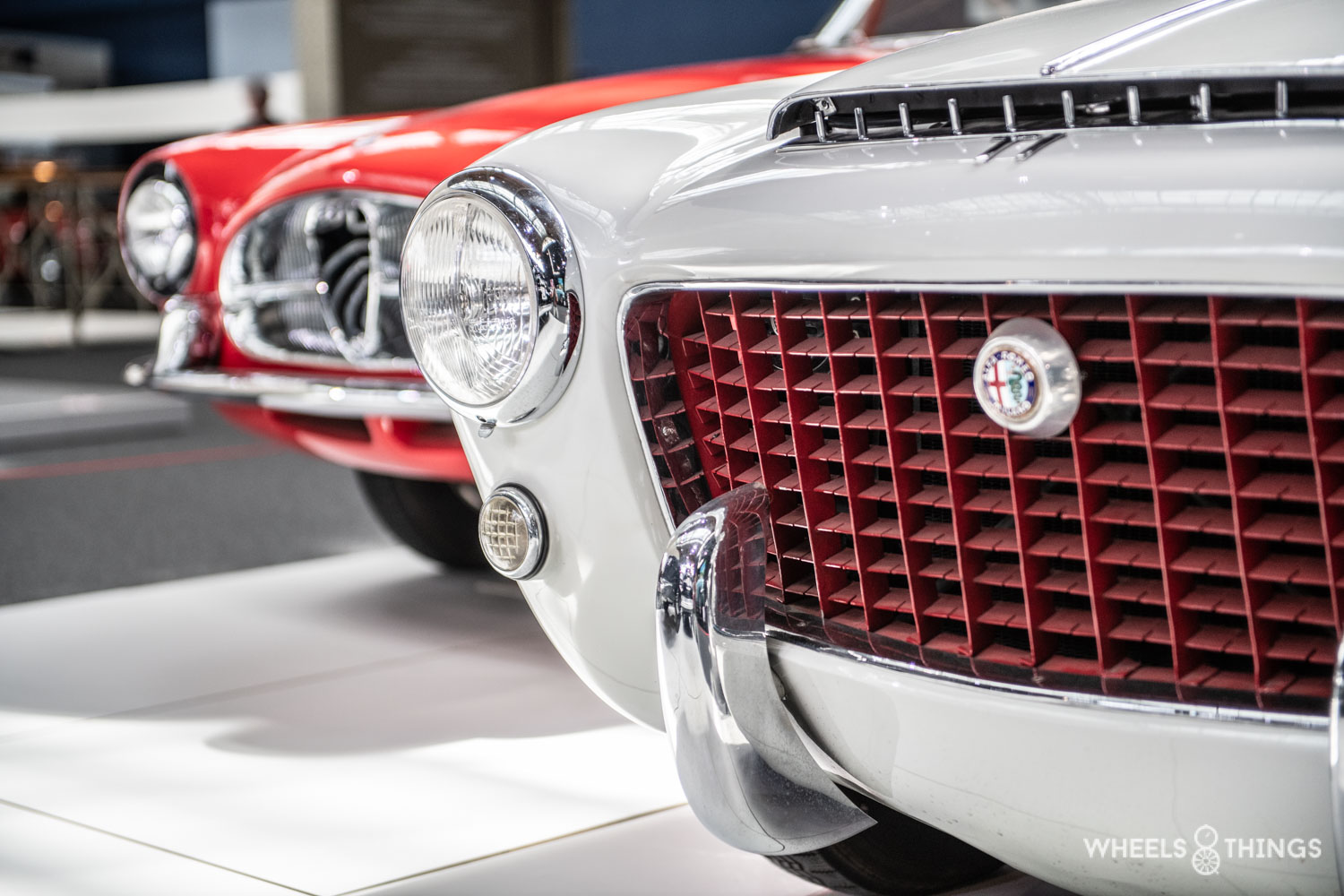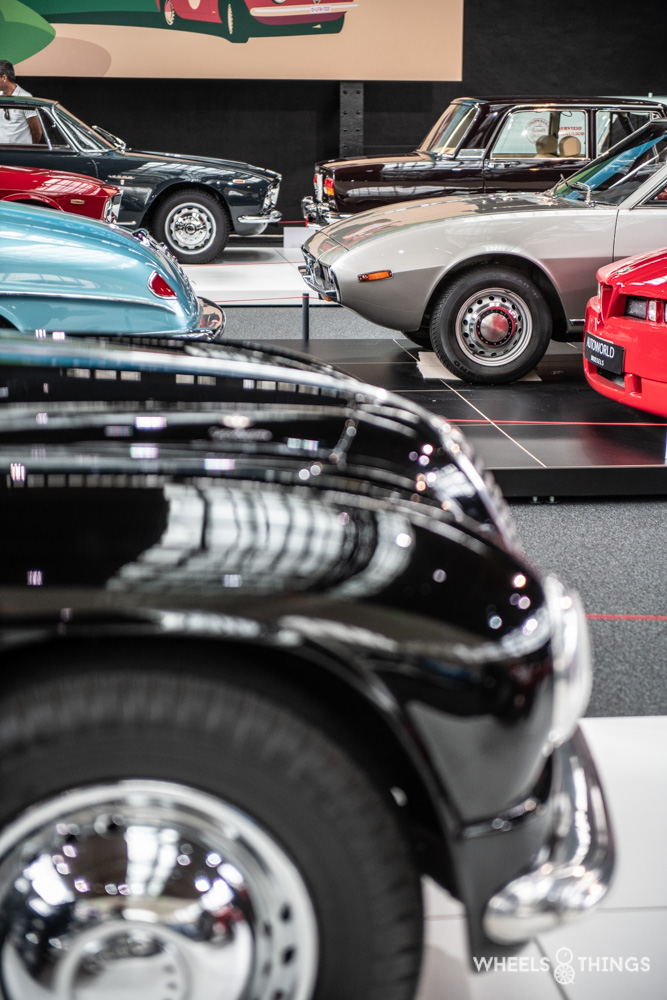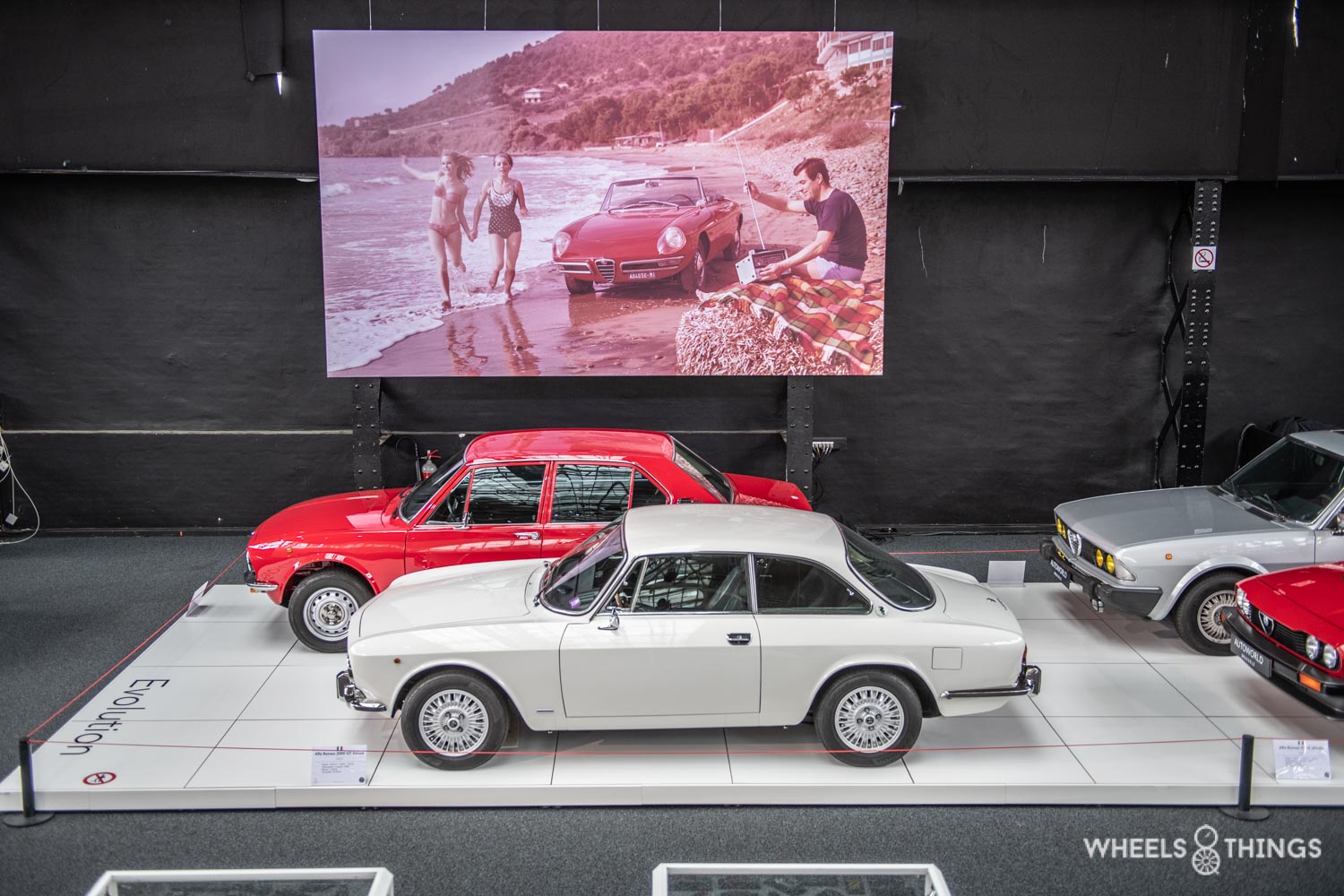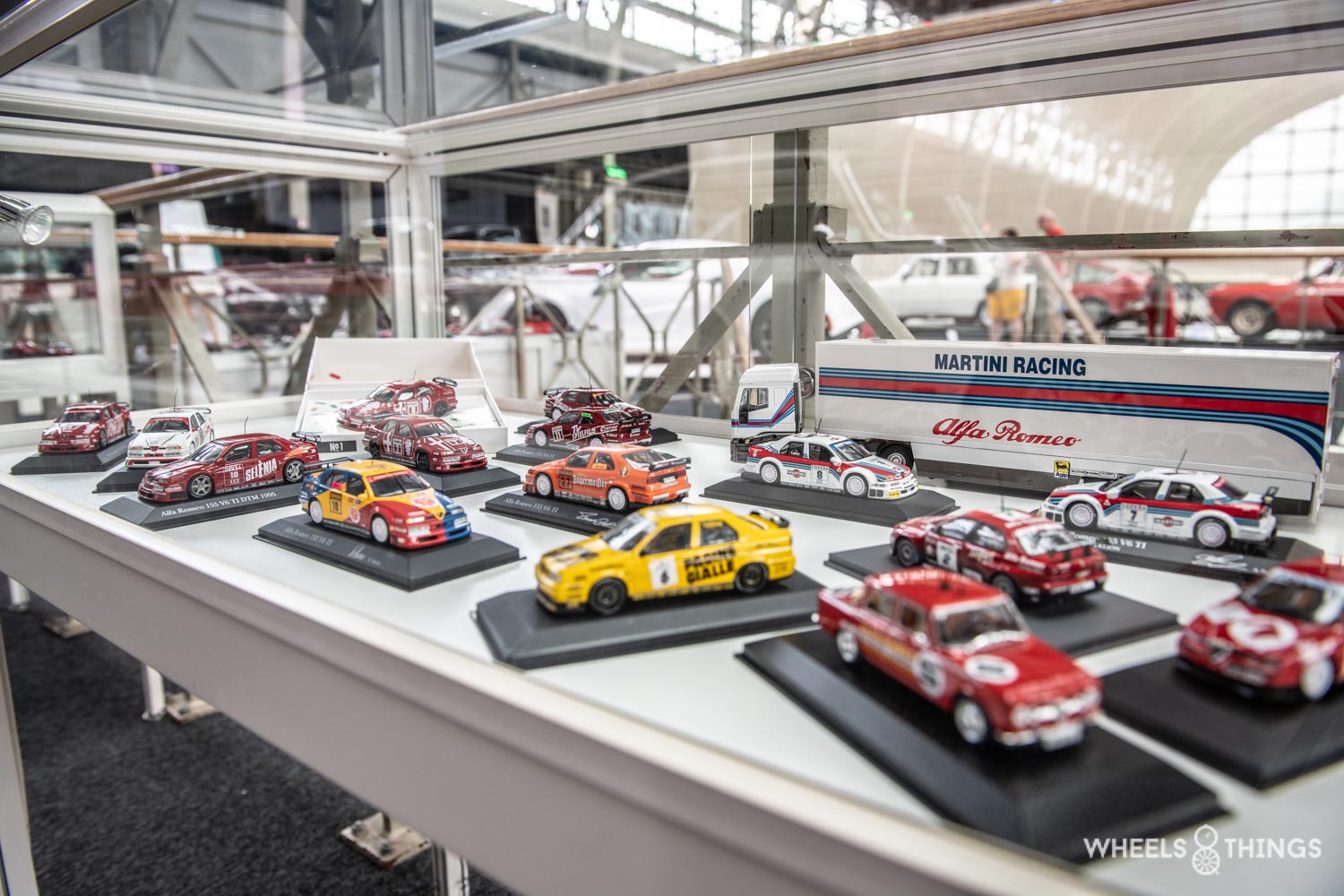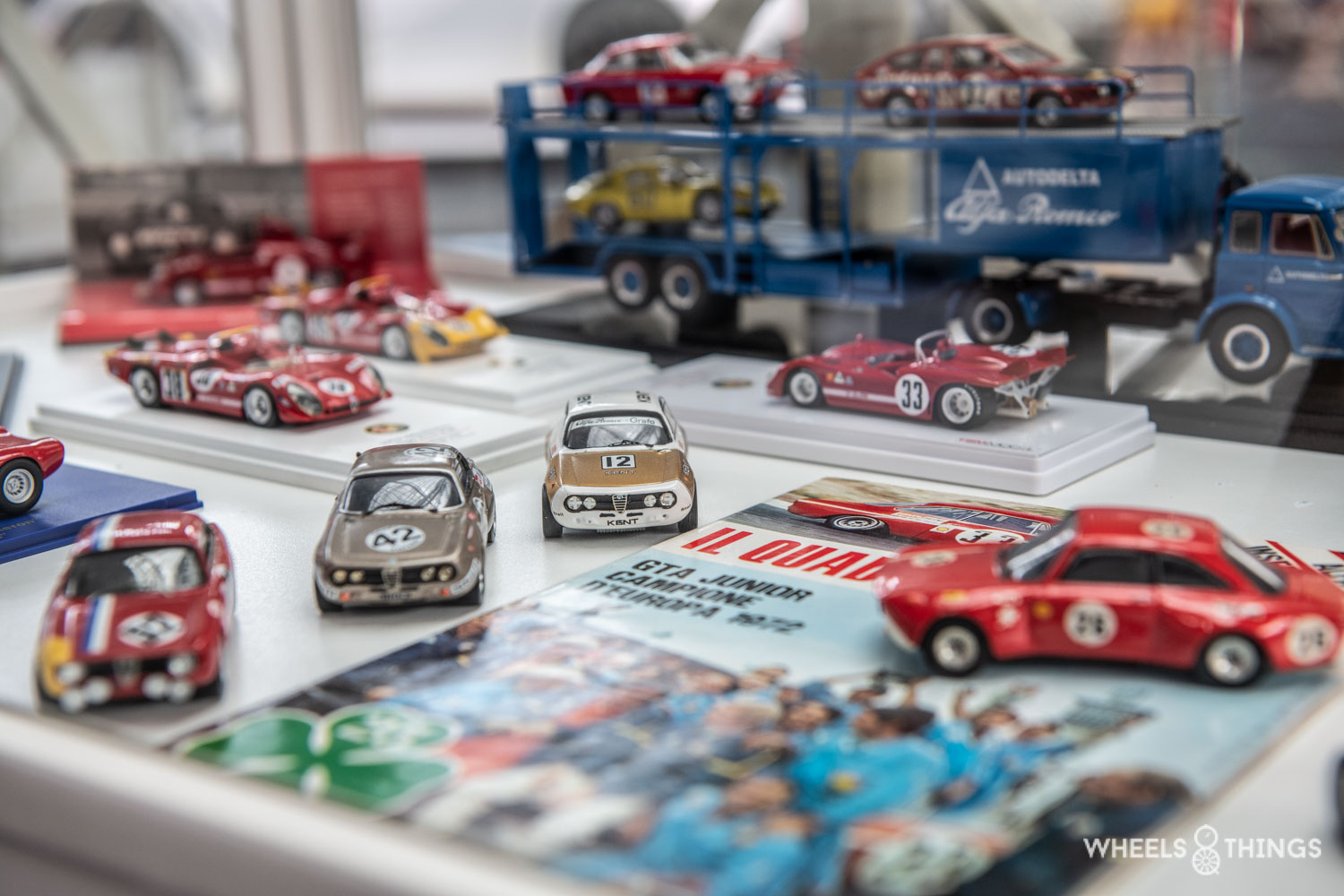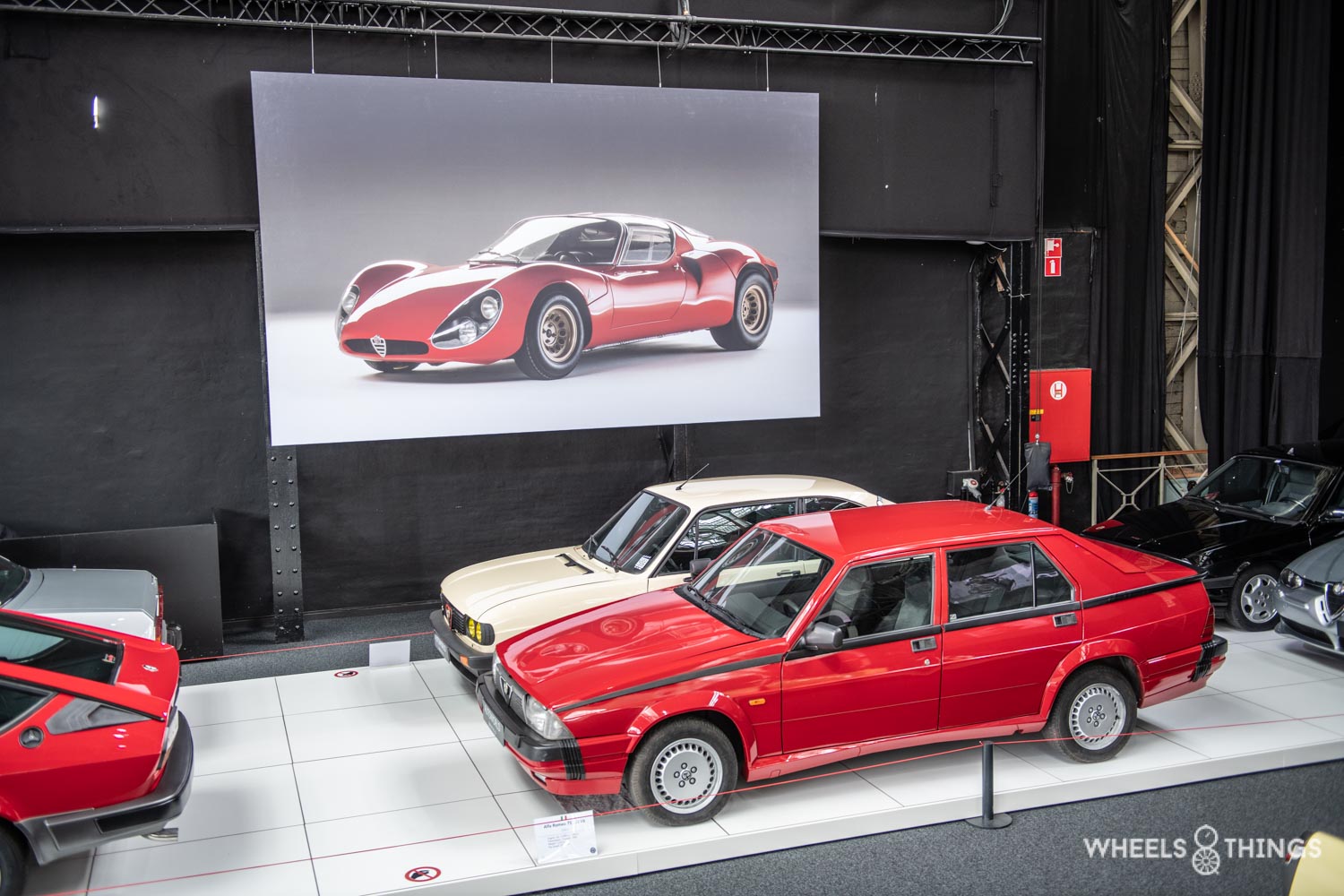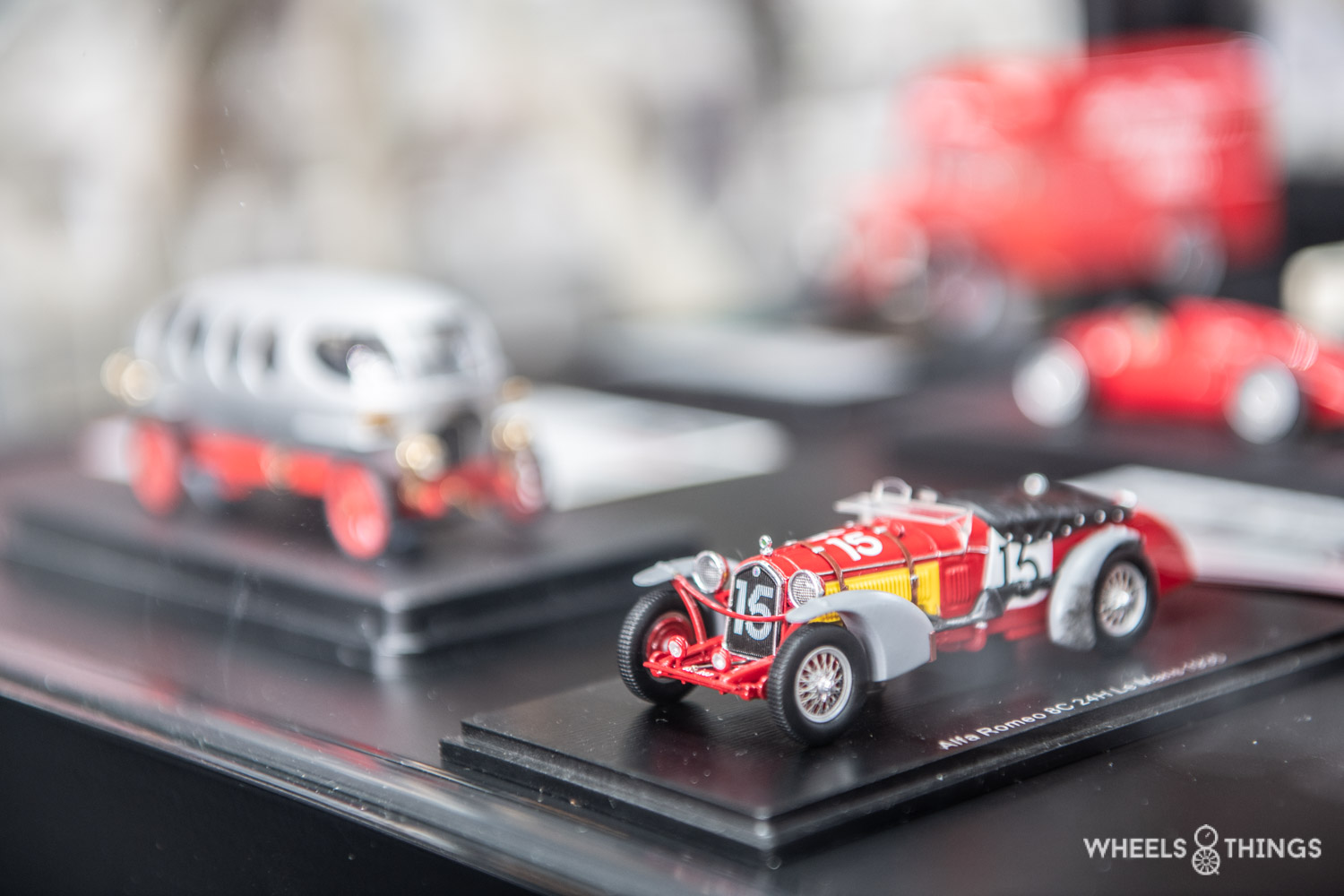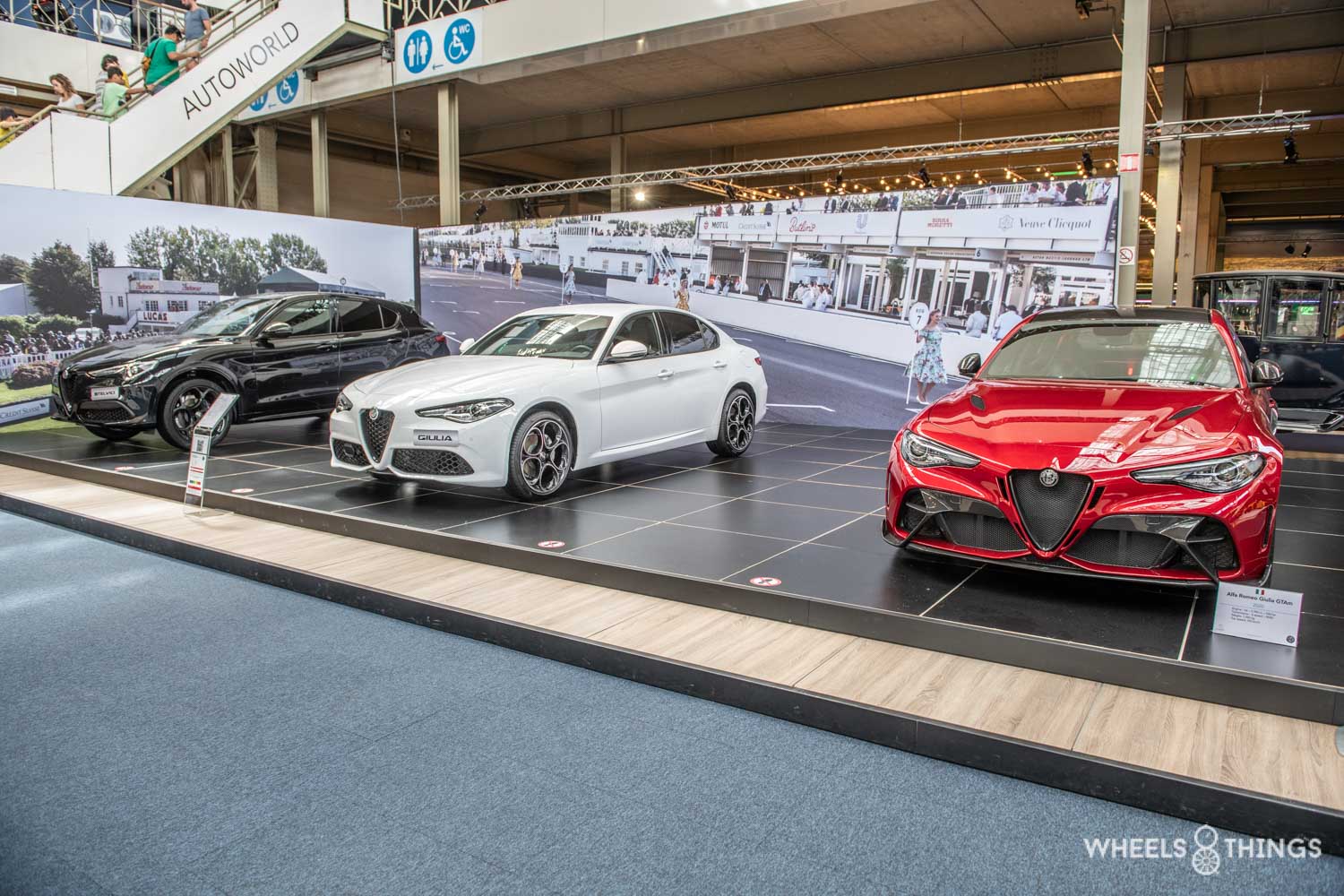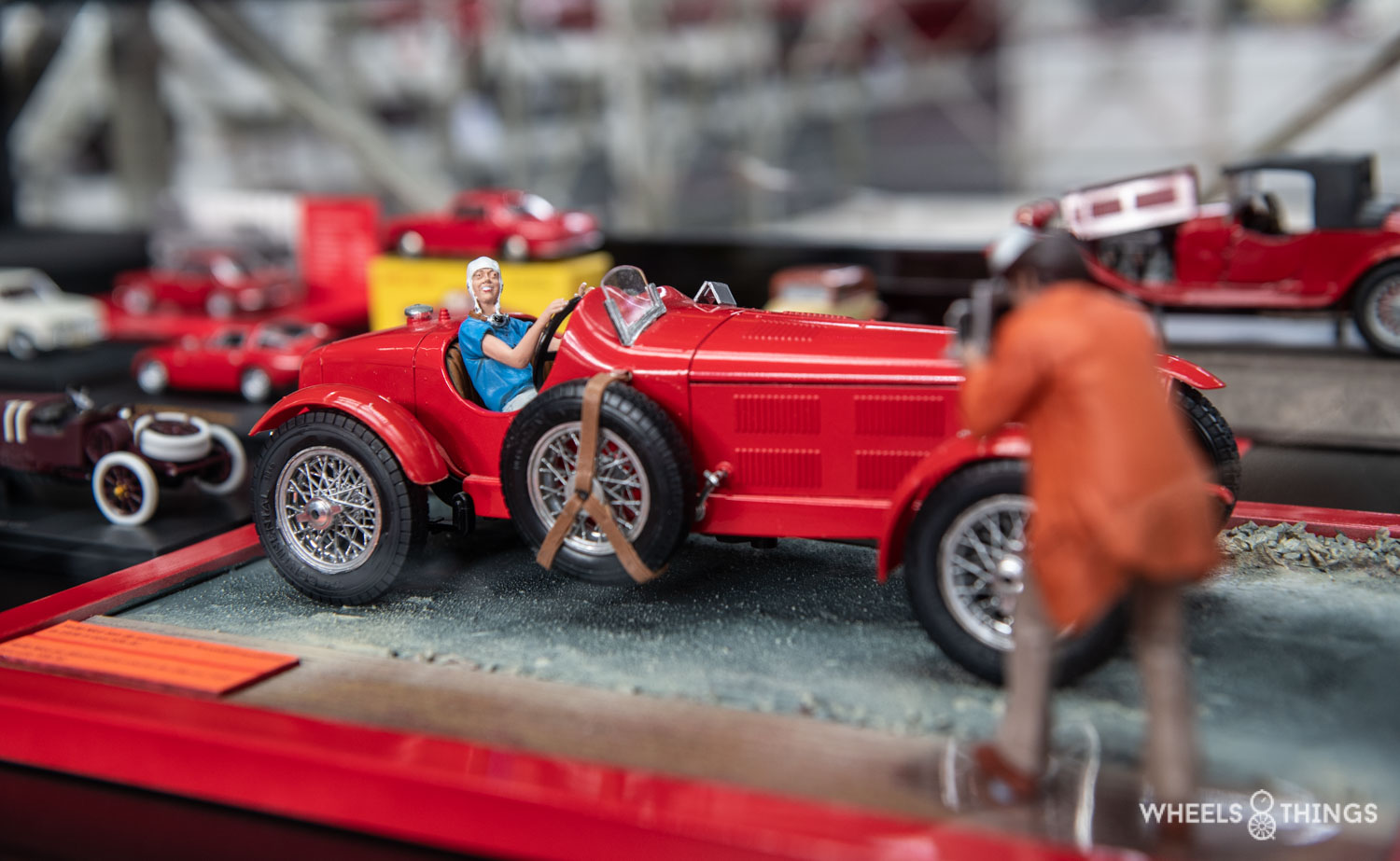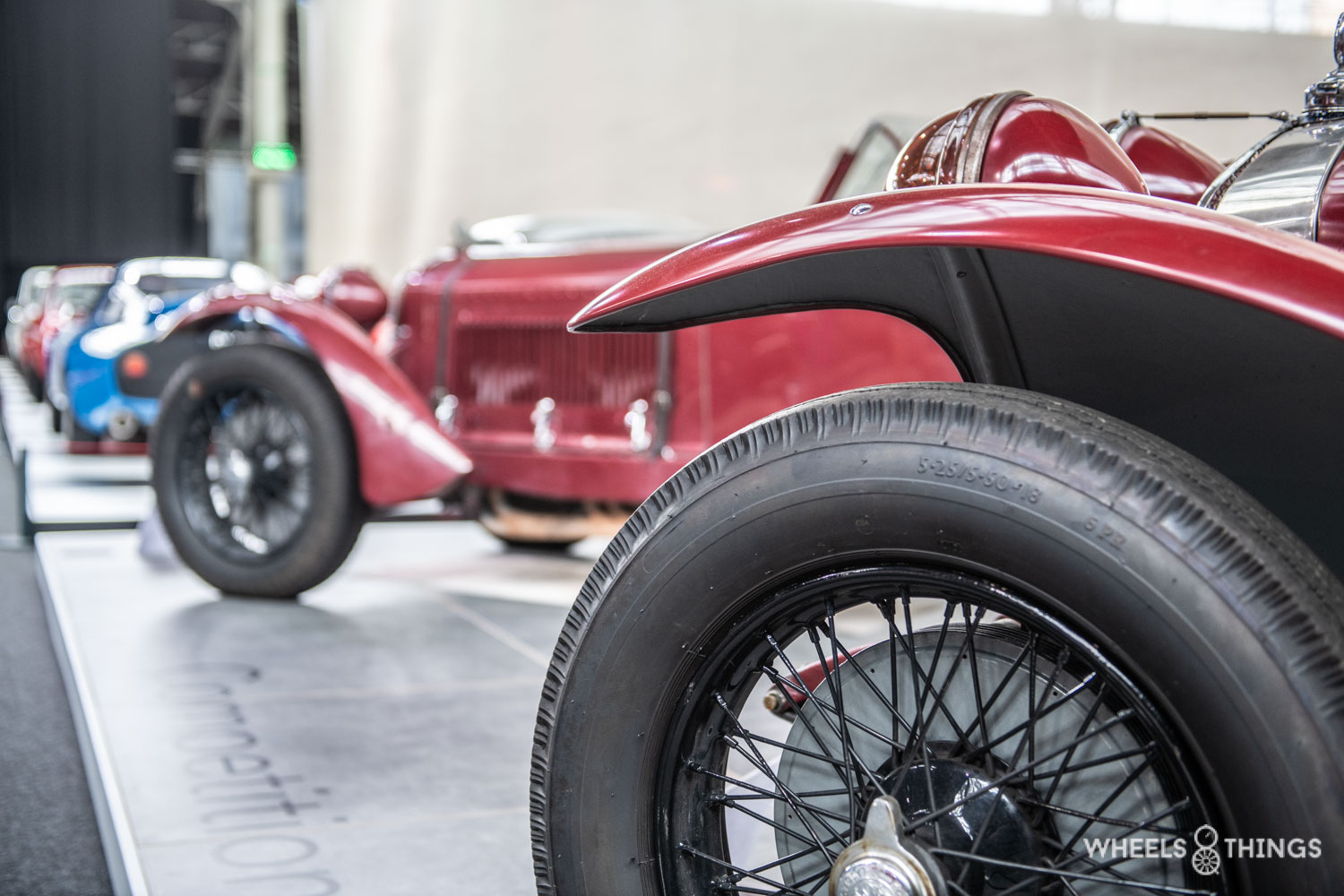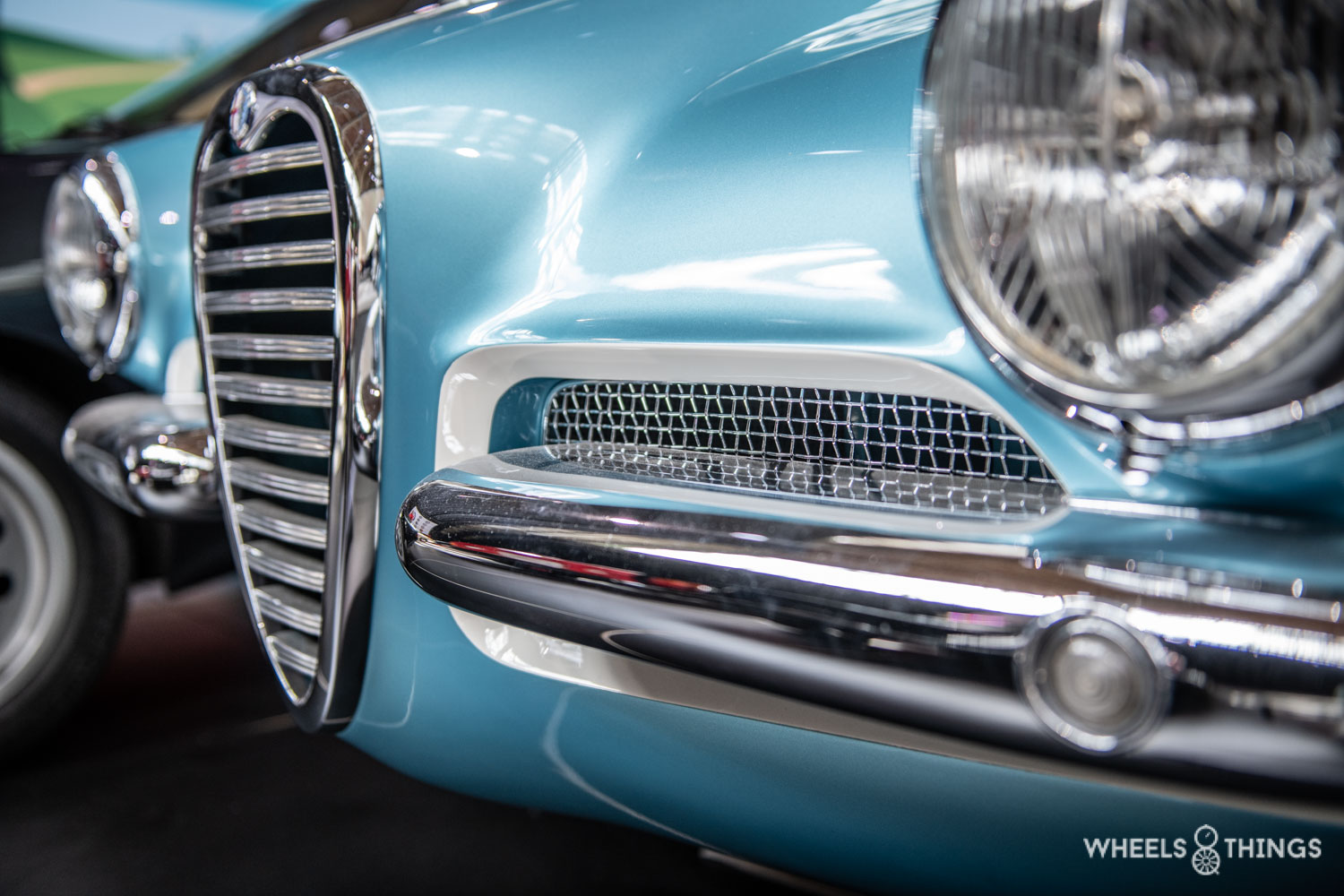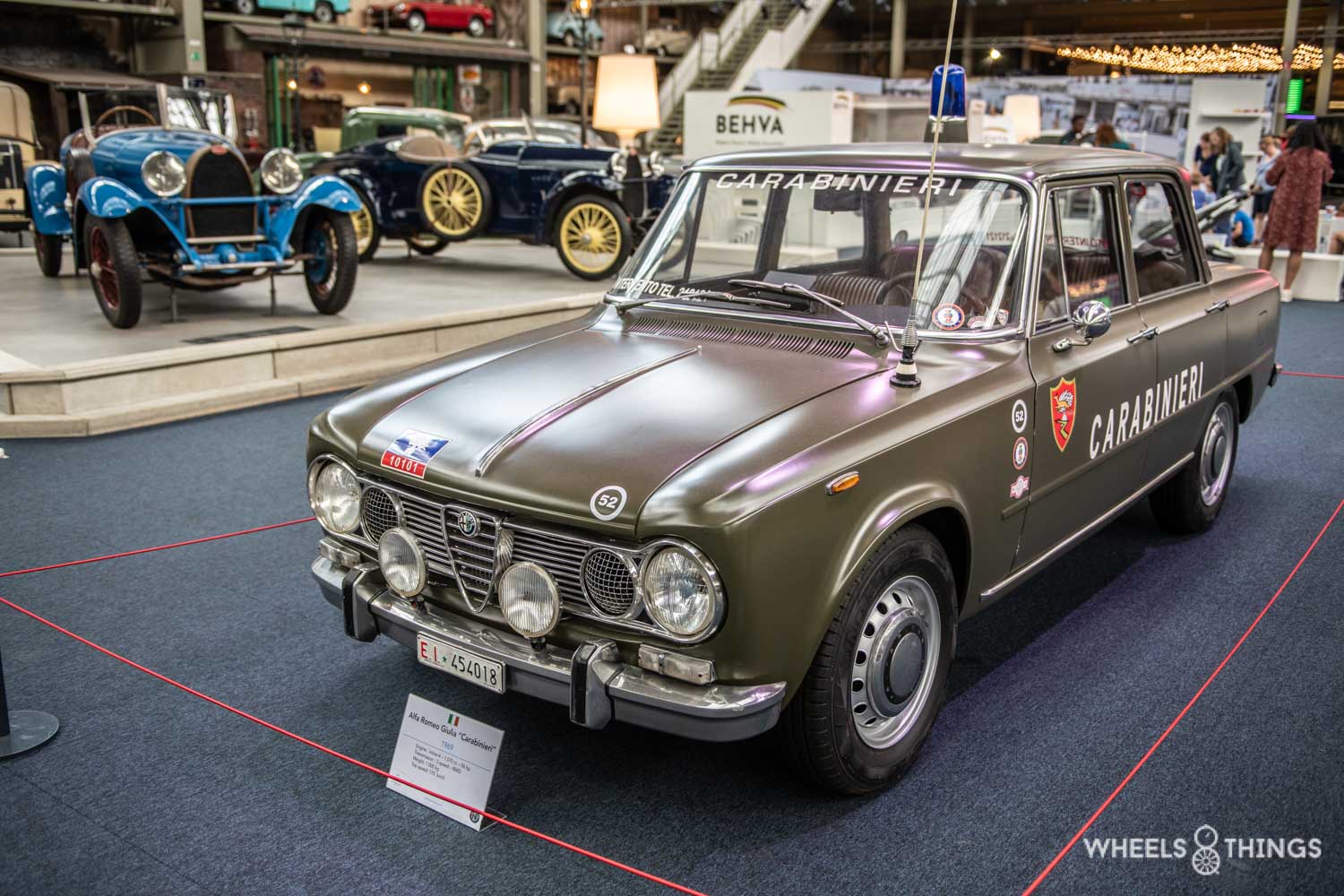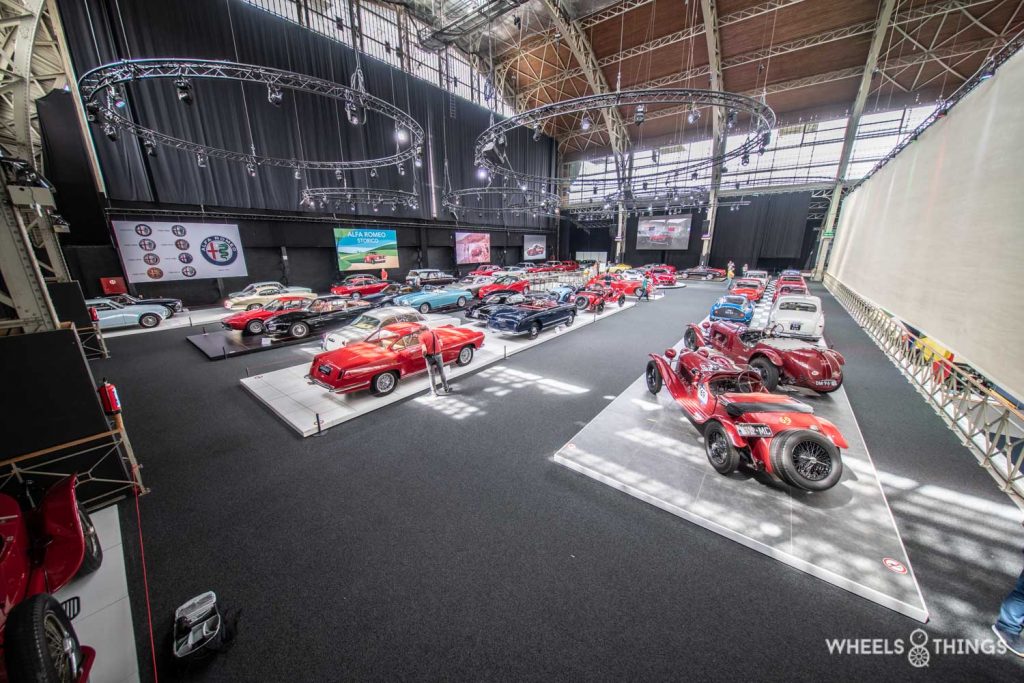
A brand where, just like with some other Italians, the heart sometimes beats a little more. That is how you can describe Alfa Romeo in my opinion. More than 50 models are on display, for me one of the larger Alfa Romeo expos I have ever seen. Welcome to Alfa Romeo Storico
Cooperation
Alfa Romeo has been around for 112 years now and has a long history of building mostly sporty cars. There are really special exhibits and for this purpose Autoworld has entered into a cooperation with the important Alfa clubs, the National Automobile Museum of Mulhouse, a number of Alfa owners, Corrado Lopresto; a private collection of Italian prototypes and of course Alfa Romeo Belgium.
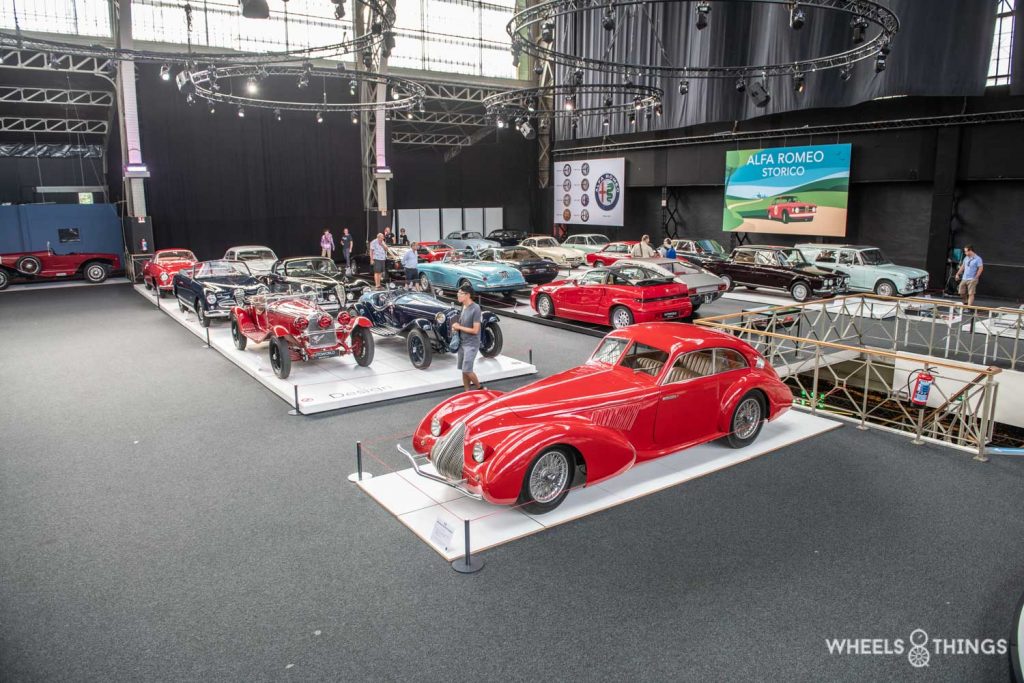
The exhibition continues in the new Herman De Croo Plaza, on the first floor of the museum. Here you will find a truly comprehensive overview of what Alfa Romeo has produced in its 112 years of history.
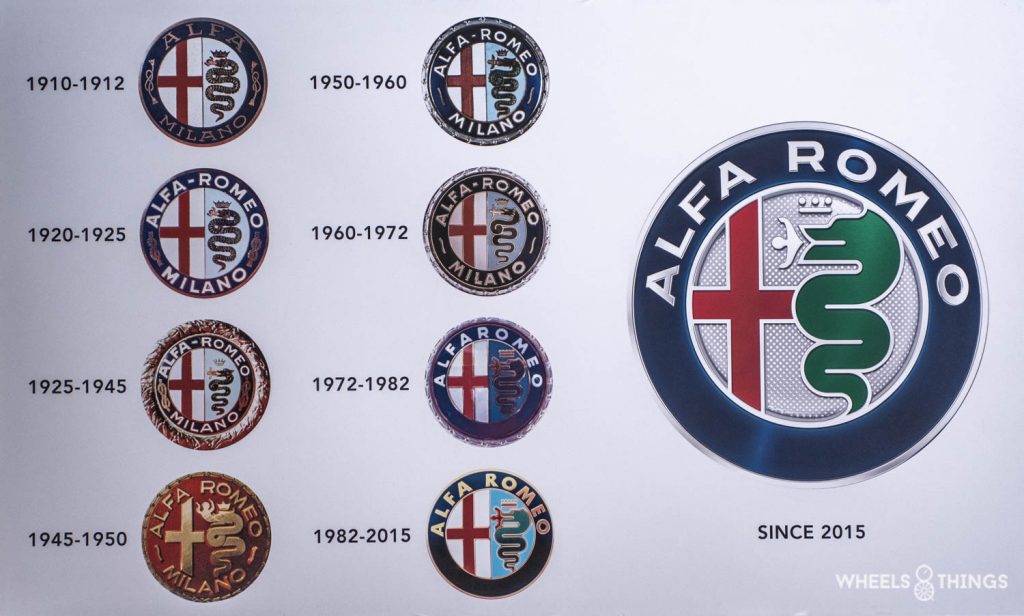
What was also interesting was the large poster with all the Alfa logos that have been used throughout the brand’s history.
How it started
When the French carmaker Darracq set his sights on the Italian market in the early 20th century, he established a factory in Portello near Milan. However, the attempt to conquer the Italian market was unsuccessful. Already in 1909, a group of investors from Lombardy took over the factory. The factory was renamed “Anonima Lombarda Fabbrica Automobili” or “ALFA” for short. Partly because of the war, everything moved quickly. In 1915, engineer Nicola Romeo took over the reins and after the war he merged ALFA with his own company. From then on cars, trains, tractors, aircraft engines and other products for industry were built.
Six-cylinder RL
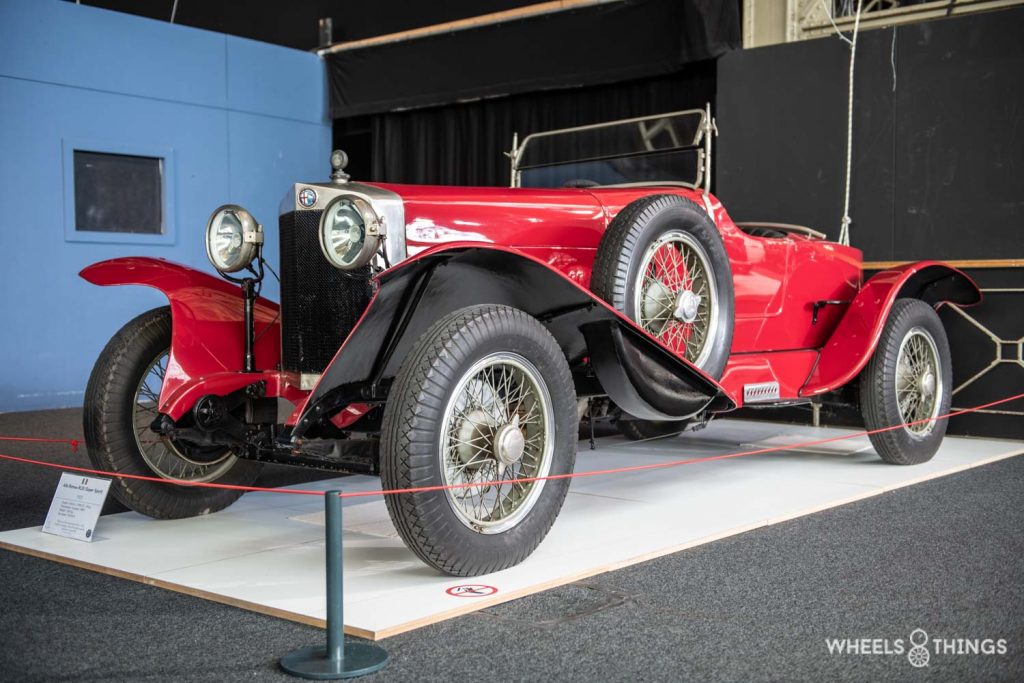
In 1923, the six-cylinder RL was launched, which was also the first car to bear the full Alfa Romeo name. A racing version was also produced, the ‘RLSS’ for Super Sport, which immediately took a large number of victories. At the wheel we found Antonio Ascari and a certain Enzo Ferrari.
Competition
Romeo saw potential in this and had its cars entered in most sports competitions. Successes followed success and the Alfa Romeo brand soon acquired a sporting and prestigious reputation. The result was a separate racing department headed by Vittorio Jano. Under Vittorio’s leadership, the Grand Prix P2 gradually took shape. This car took numerous victories and became the first world champion in 1925.
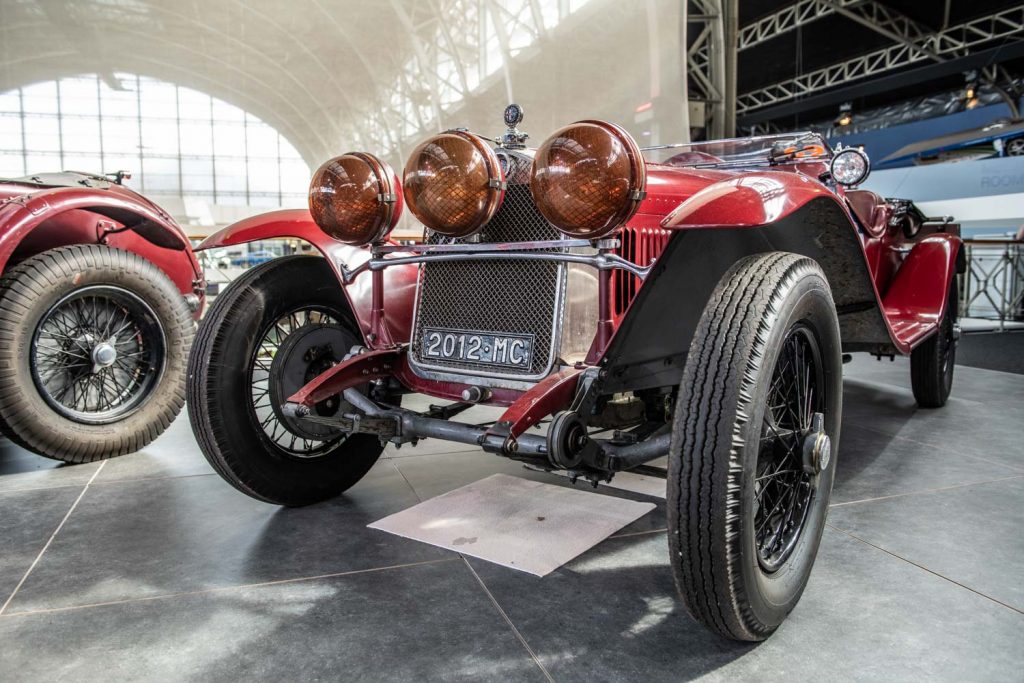
From this moment on, Alfa Romeo will focus on smaller high-performance models. Couple this with Italian design and you know that success is written in the stars. Six-cylinders (6C) with double overhead camshafts, with or without a Rootscompressor, became the trademark. The special braking system also left the competition far behind.
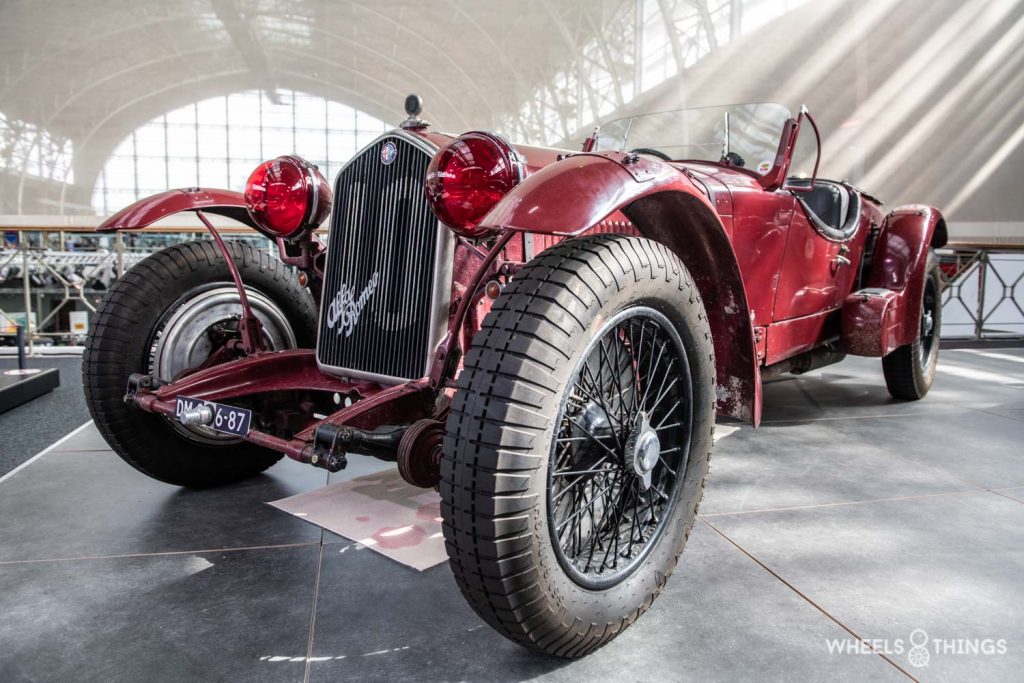
In 1931, the 8C made its debut; this was the basis for many subsequent successes under Enzo Ferrari. Alfa produced efficient and sporty cars in which price was of secondary importance.
Special models
If there is one thing this exhibition really excels at, it is bringing together unique pieces. Of course, this is due to the good cooperation with different museums and collectors, but then again, you just have to get it done!
Alfa Romeo 8C 2900 Pininfarina
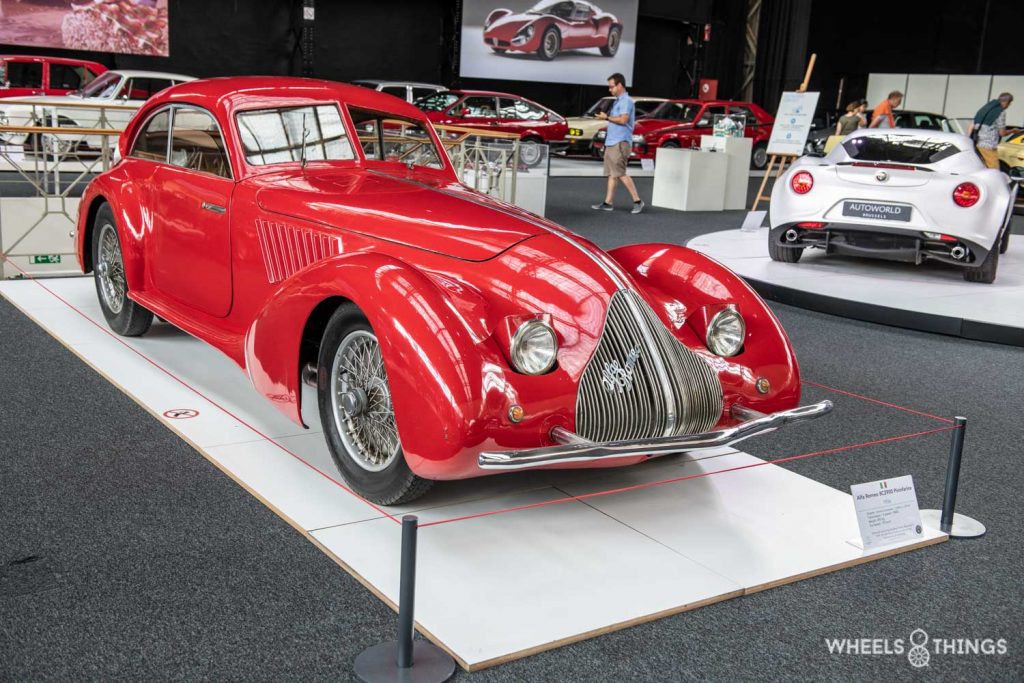
One of the showpieces was this 8C 2900 with bodywork by Pininfarina. The elegant long snout with the short 2-seater cab behind it truly exudes Alfa Romeo. The folding lights were rather exceptional in this period (we are talking 1936). It would take until the end of the 1980s and the beginning of the 1990s before they became commonplace. The 8C 2900 Pinifarina has a 2900cc 8 in line engine that was primarily developed for racing. That we are talking about a special car is proven by its auction price of over 4 million dollars at Christie’s at Pebble Beach in 2006.
Alfa Romeo 1900C Super Sprint La Flèche
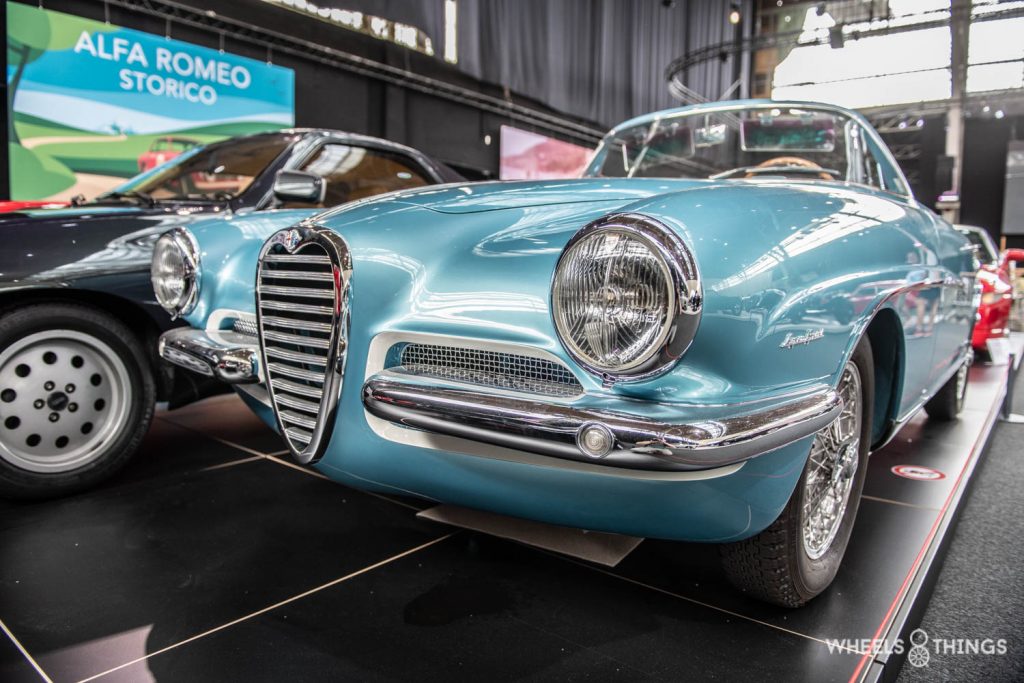
This model is a ‘one off’ so only one was built and we can kiss both our hands that we get to see it and that it is in perfect condition. The La Flèche was presented at the 1955 Turin Motor Show. The 1900C Super Sprint La Flèche belongs to the Lopresto Collection and was loaned to Autoworld for this exhibition. Here, Alfa Romeo delivered a cabriolet with a short chassis and bodywork by Giovanni Michelotti.
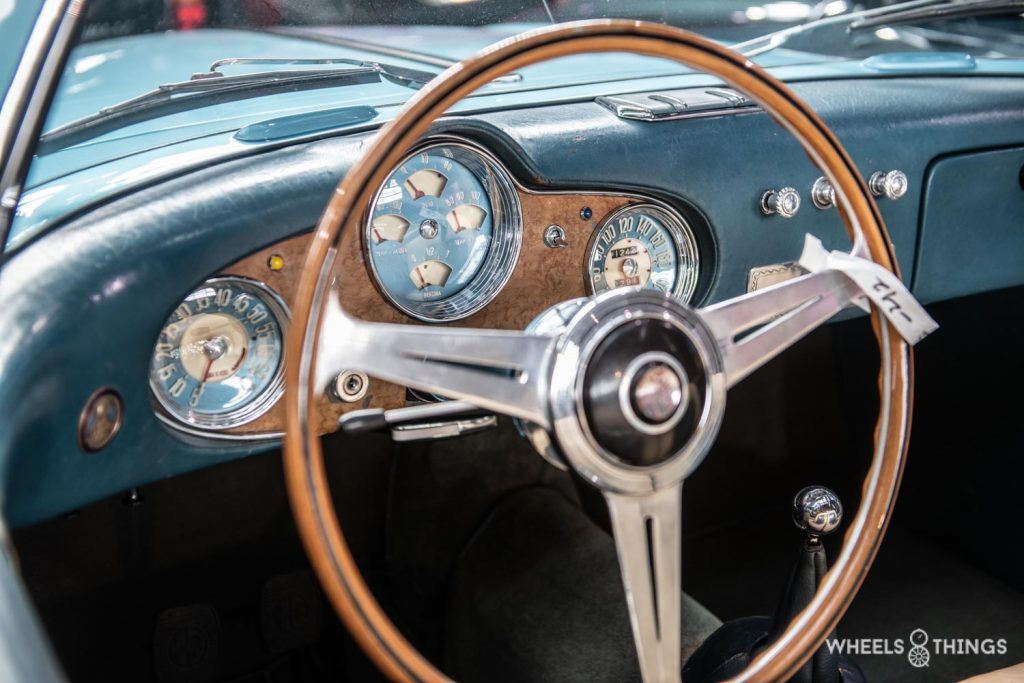
We can really speak of art, no detail has been overlooked and the dashboard is definitely a unique gem. Today’s car designers could really learn a lesson from this. Because our digital dashboards may show a lot of information, but they are definitely not beautiful.
Alfa Romeo 6C 2500 SS Villa d’Este
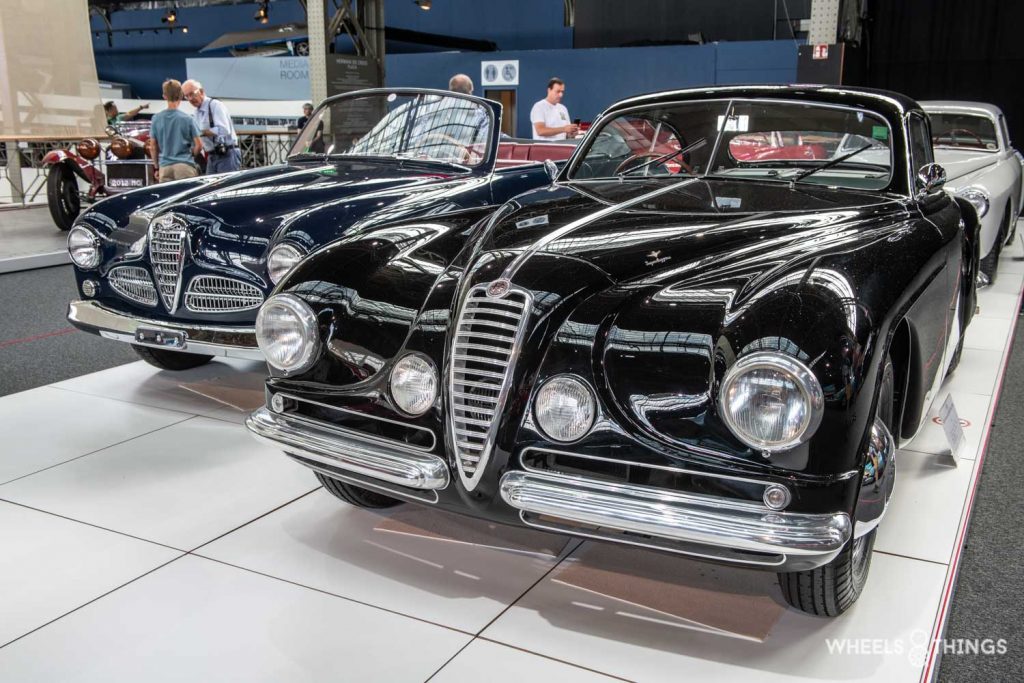
The 6C 2500 SS “Villa d’Este” was one of the last Alfa Romeo models to be built with a supporting chassis separate from the bodywork. Only 36 examples were made, all ‘one-off’ creations, and entirely to the wishes of the owners and the inspiration of the coachbuilders. The front end was redesigned, with the four headlights better integrated into the bodywork. The mudguards were integrated with the sides, but clearly visible. The windscreen was split into two parts and angled.
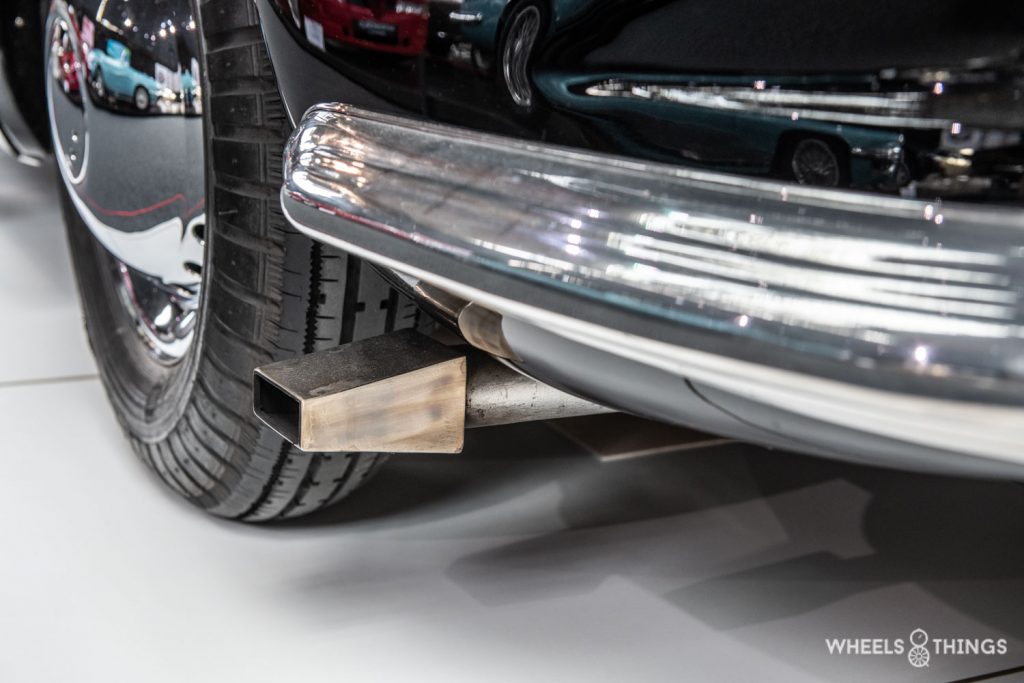
The exhaust is also rather unusual in design and sits sideways. In the 1949 edition of the Villa d’Este Elegance competition, this car won the “Grand Prix Referendum”, the prize awarded directly by the public … and forever linked its name to the event that inaugurated it.
Giulietta
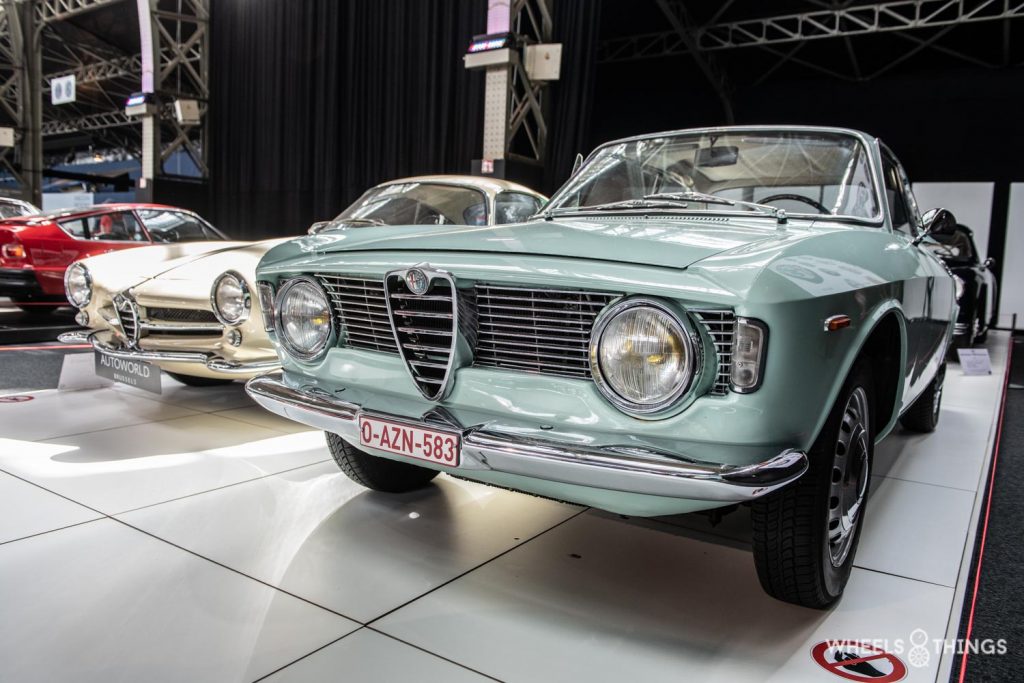
The name Giulietta appeared in the second half of the 1950s and would be found on the new sports models. These were powered by four-cylinder engines. As the production volumes increased, there was a need for a new factory. This was built in Arese, where the Giulia was first produced.
Sixties
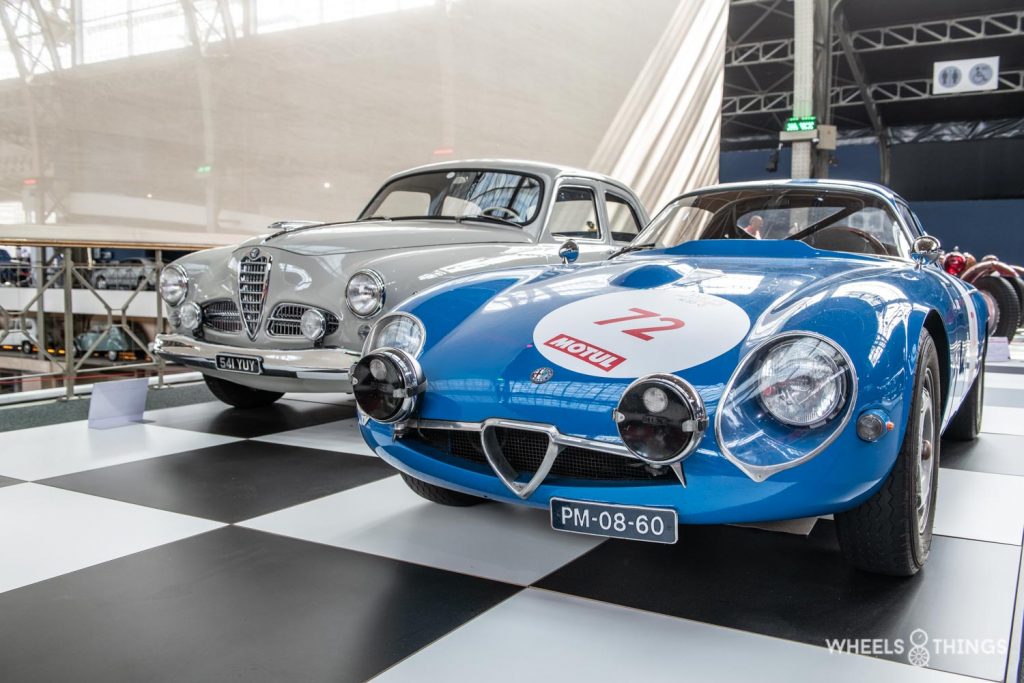
In the sixties, Alfa achieved international fame at just about every race track. The TZ, GTA and also the GTAM touring cars were the source of numerous successes.
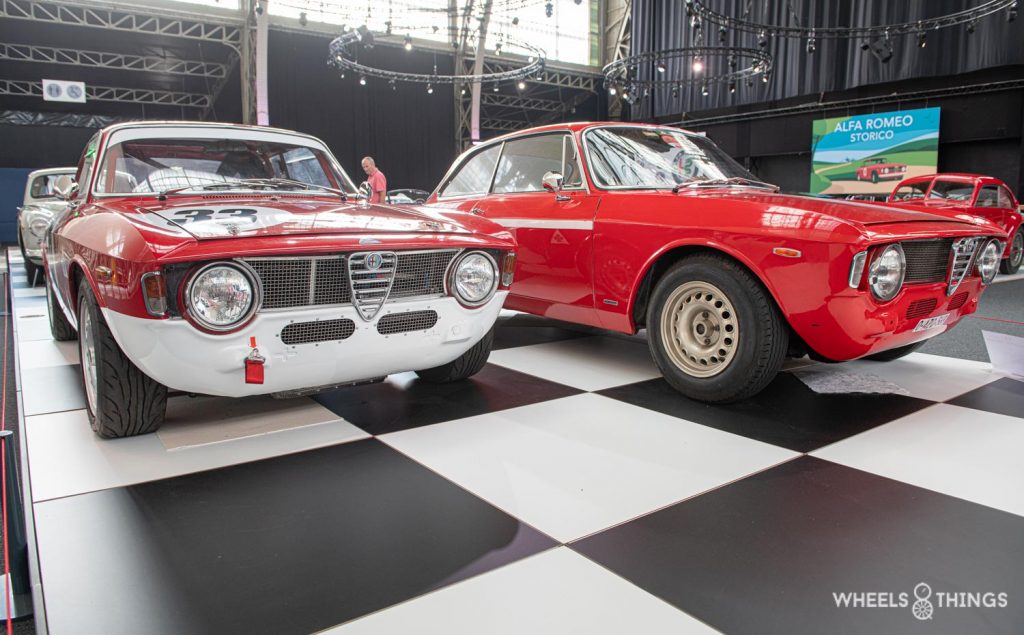
For me personally, one of the most beautiful Alfa’s is without doubt the Alfa Romeo Giulia Sprint GT Veloce, whether or not in Corsa version. What do you think is the most beautiful Alfa?
The second half of the sixties saw an enormous increase in sales. People of modest means started to buy cars more and more, and Alfa would not want to miss out on that opportunity either. So in 1967, another factory was built. This is where the smaller, front-wheel-drive Alfasuds come off the production line.
Seventies
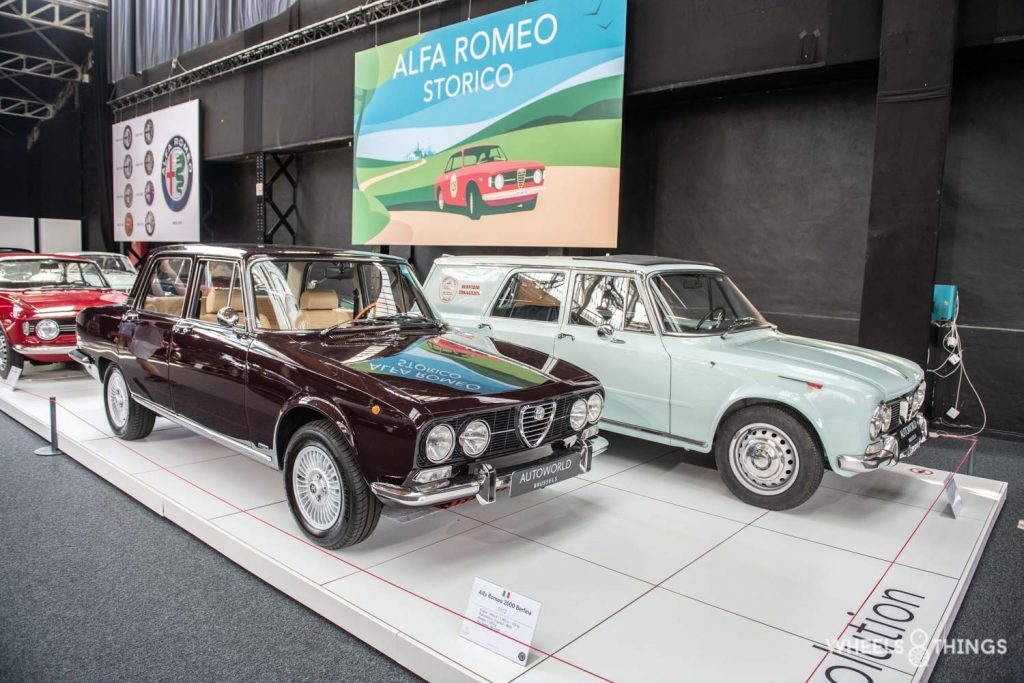
These were not the best years for the brand. Sporting successes alternated with commercial setbacks. We saw the Alfa 1750 and its successor the 2000 and, like many other brands, Alfa Romeo also sought out the higher segment with in this case the Montreal. A very beautiful and prestigious car but not a commercial success. The Alfetta, however, was a pleasant appearance, dating from 1976.
Eighties to the present
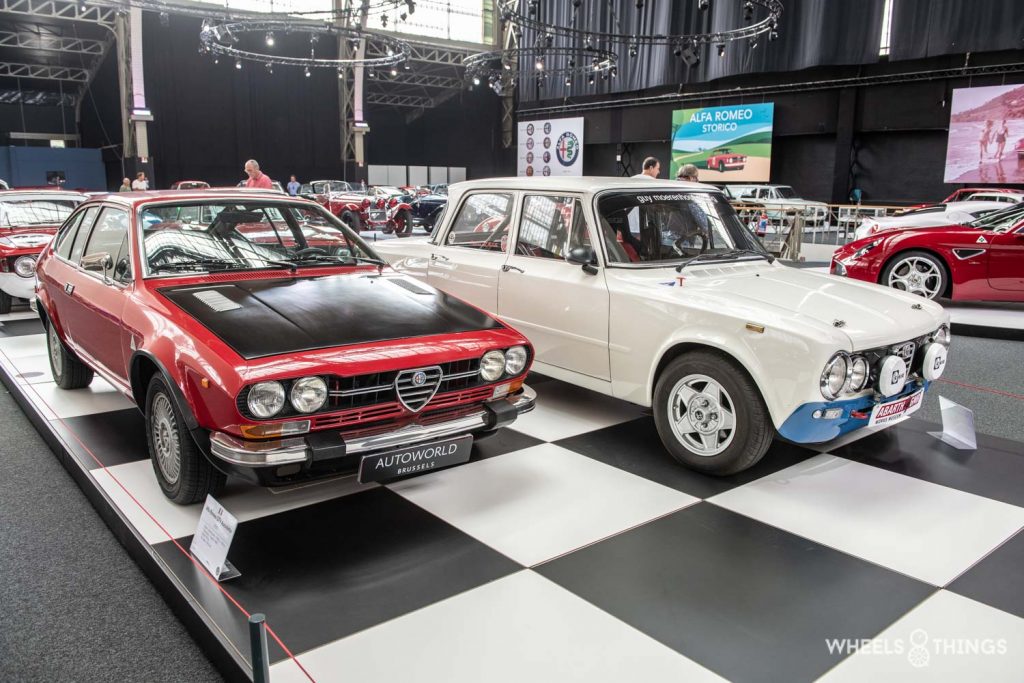
In the late 1970s and early 1980s, the Alfetta GTV was born; this wedge-shaped sports coupe was one of the last Alfa’s before the company was taken over by Fiat in 1986.
Major changes were imminent; Fiat, which was a mass producer, did not like the Alfa Romeo sports coupes, and made numerous changes. Thus, we would soon see the appearance of a number of four-door sedans. I do not think that this was what the loyal Alfa Romeo fans were waiting for.
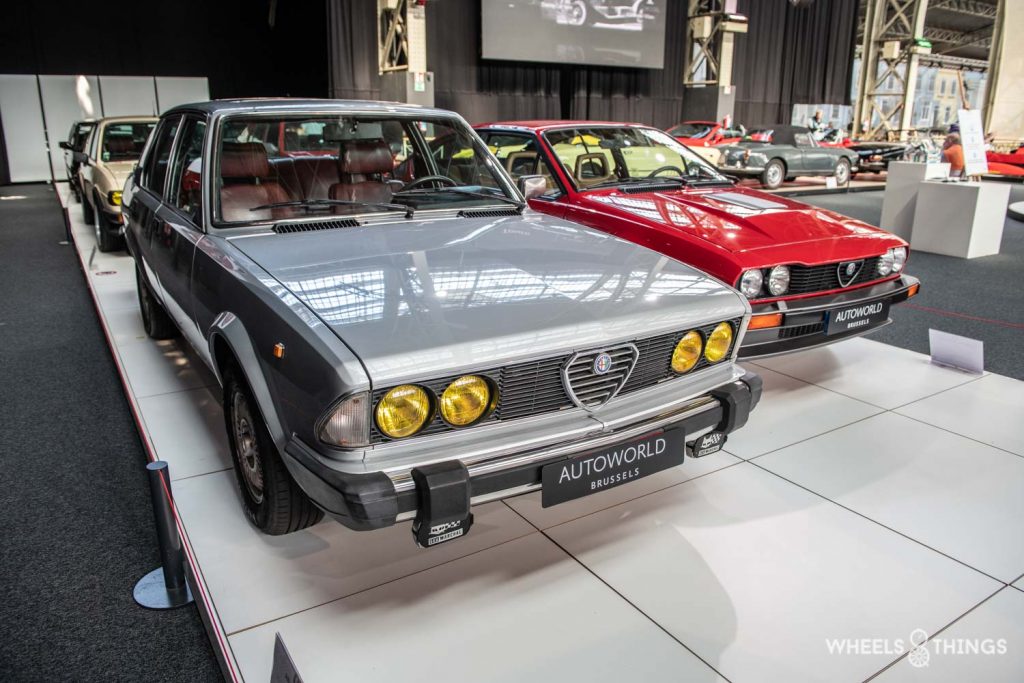
The attempt to enter the luxury sedan market was also only coolly received at the time. If we look at the Alfa Romeo 6 from 1983 above, we can understand why. The Fiat signature from the 80s is clearly present here.
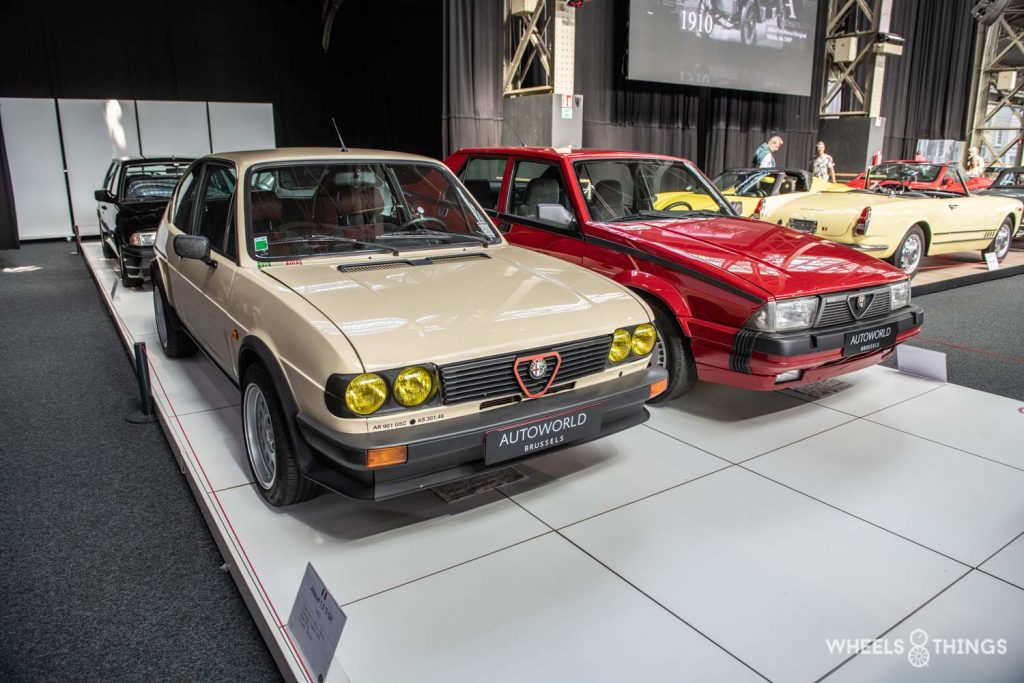
In the 90s, we didn’t see much of a specatacular appearance; it was more of a continuation of the 80s with, for example, the Alfa Romeo 33.
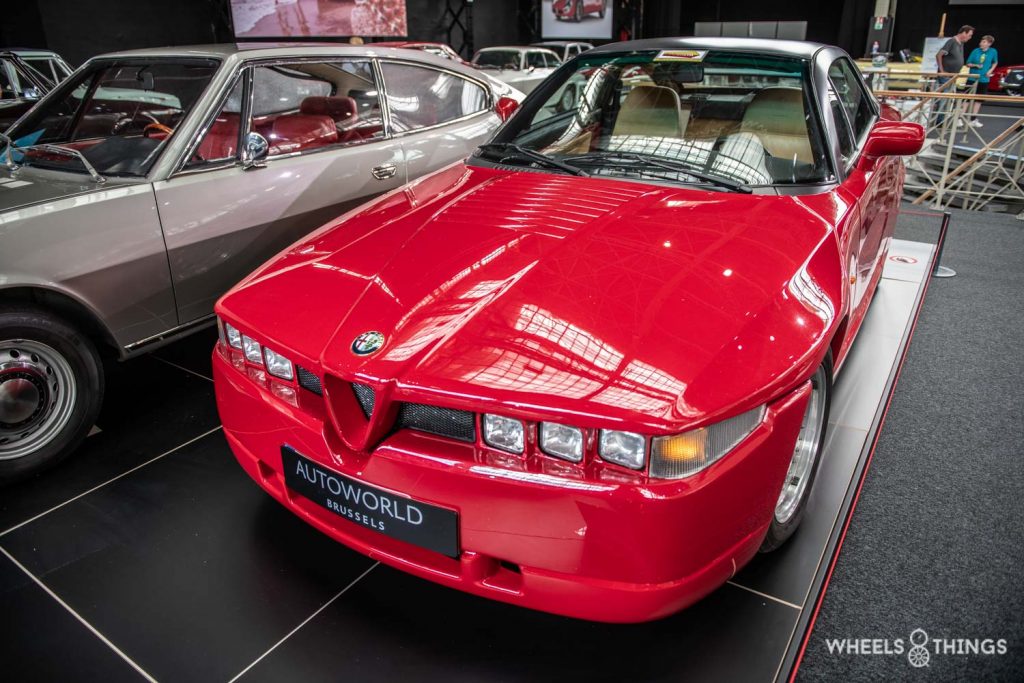
The Alfa Romeo SZ was re-released in 1990 and was then a complete break from style; this SZ came from the hand of Zagato and drew both admiration and criticism. Today, they change hands for more than hefty sums of money.
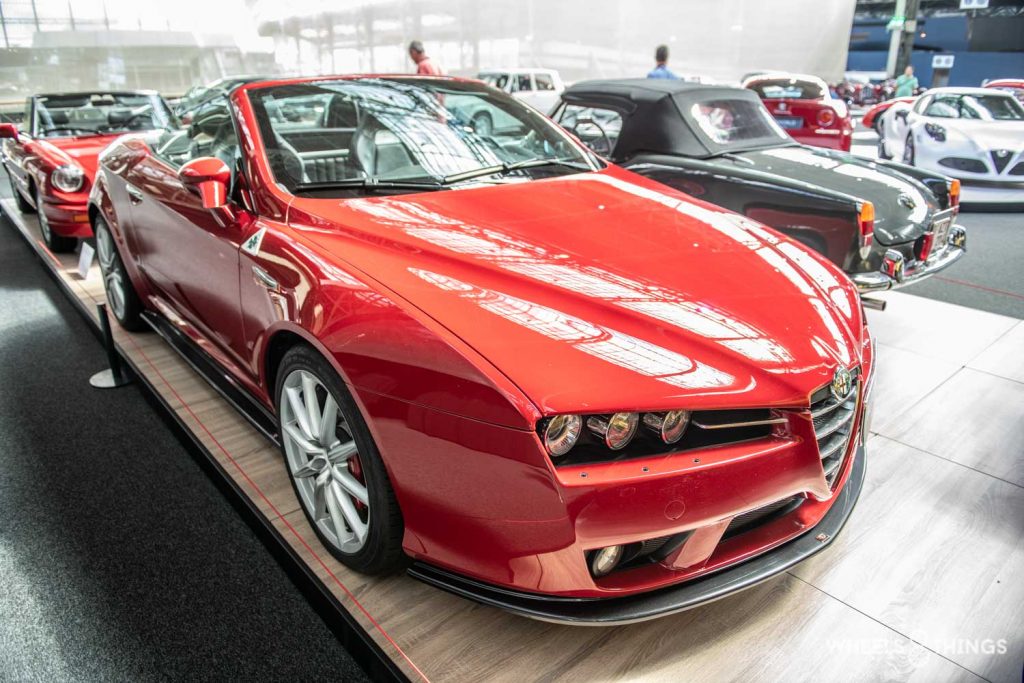
The years 2000 to 2014 produced beautiful cars but not head-turners like they used to make. Above we see the Brera 2.4 JTDM from 2009.
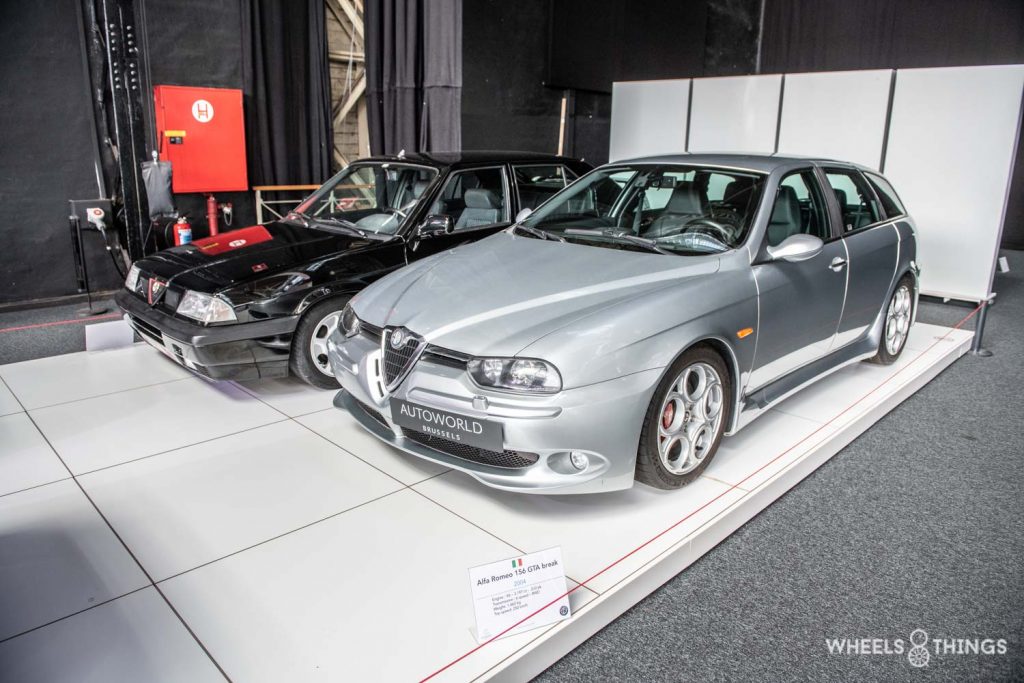
The 156 we see above must have been one of the most successful Alfa’s in the early 2000s. The car had beautiful lines, was available in several bodywork variations and had a wide range of engines.
A new breath
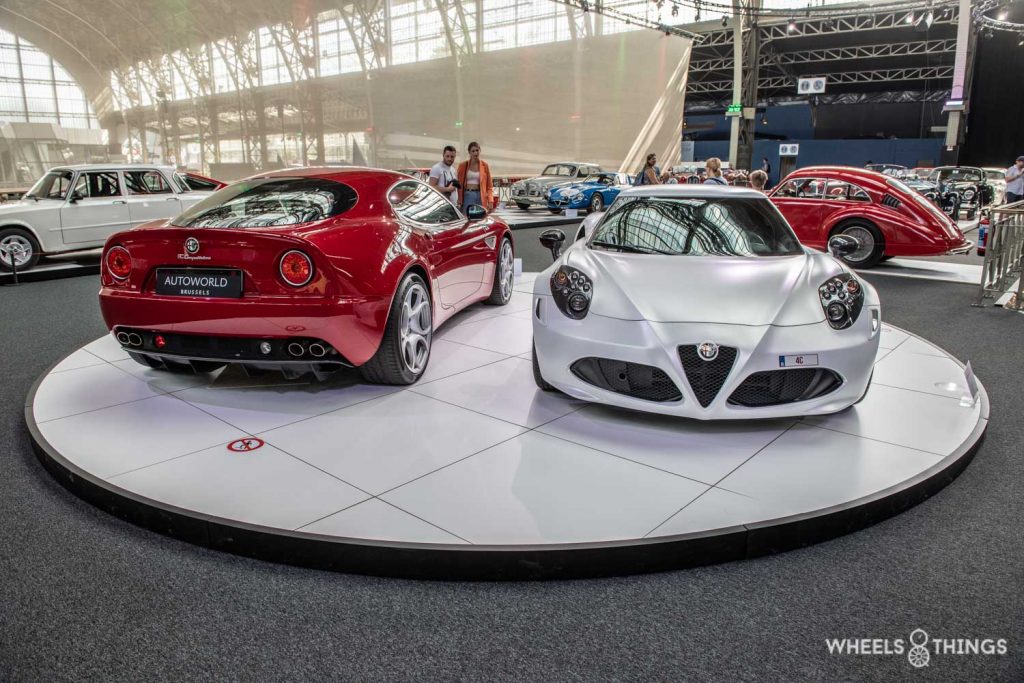
With the arrival of the Alfa Romeo 4C, Alfa is positioning itself back where it belongs. A very beautiful, pure and rather spartan sports car. Many an Alfaist’s heart will have made an extra beat at the sight of this car. The 8C you see next to the 4C dates back to 2008 and in my opinion was already a silent harbinger of things to come. The 4C is not a low budget car but the 8C is unfortunately for most mortals really out of category.
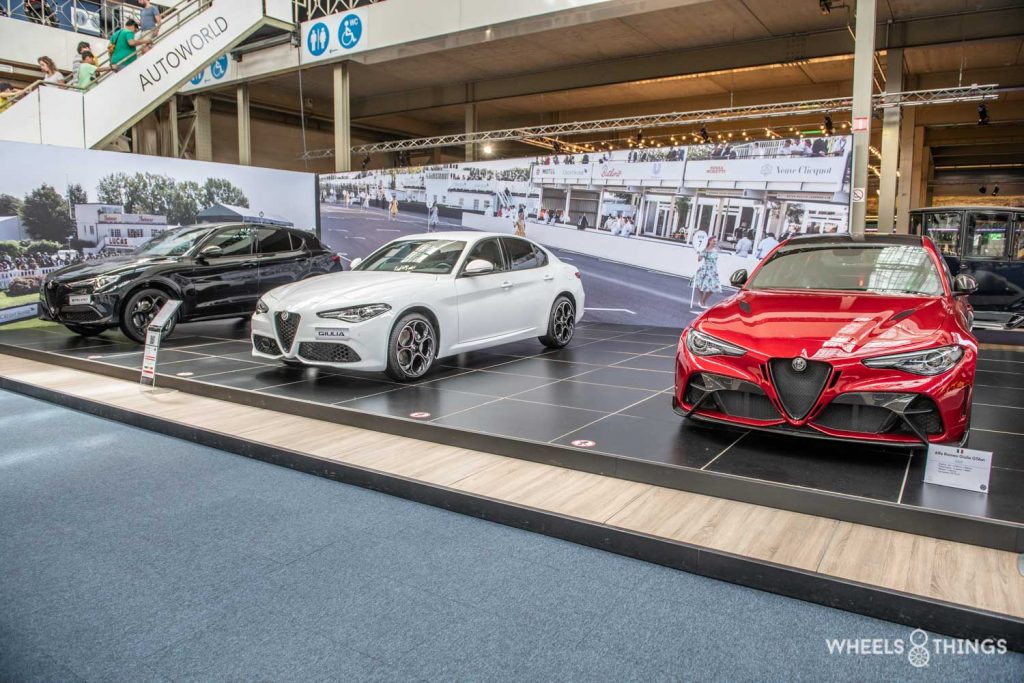
In the meantime, the new Giulia, the Stelvio and recently the Tonale have joined the list and we hope it will continue in this vein. Alfa is back on track as they say.
Dioramas
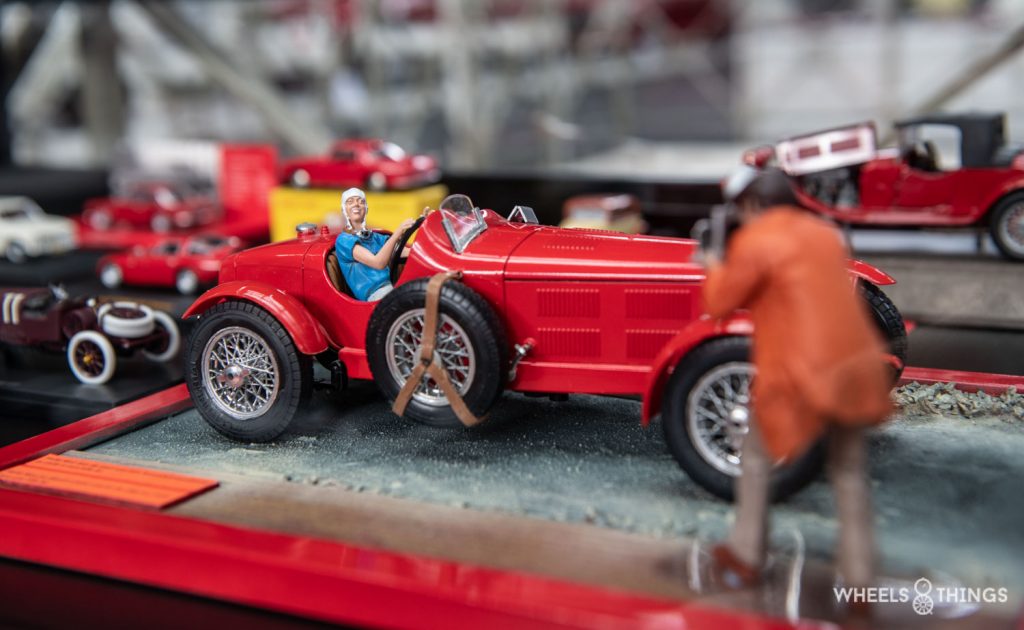
As with every exhibition, there are some dioramas throughout the space. Usually, I pass them by unjustly, but these really stood out.
Conclusion
Autoworld has once again managed to put together a collection of cars for which, as a car enthusiast, you have no choice but to come to Brussels. You can visit these gems until 31 August.
What I did miss were a few racing cars. Alfa Romeo has by far the most beautiful racing cars ever made. Think of the stunning 1968 Stradale (of which there was a poster). But also a 159 F1 car from 1951 would not have been out of place here.
In any case, come along, you will not regret it.
Report & photos: Patrick Verheeken

